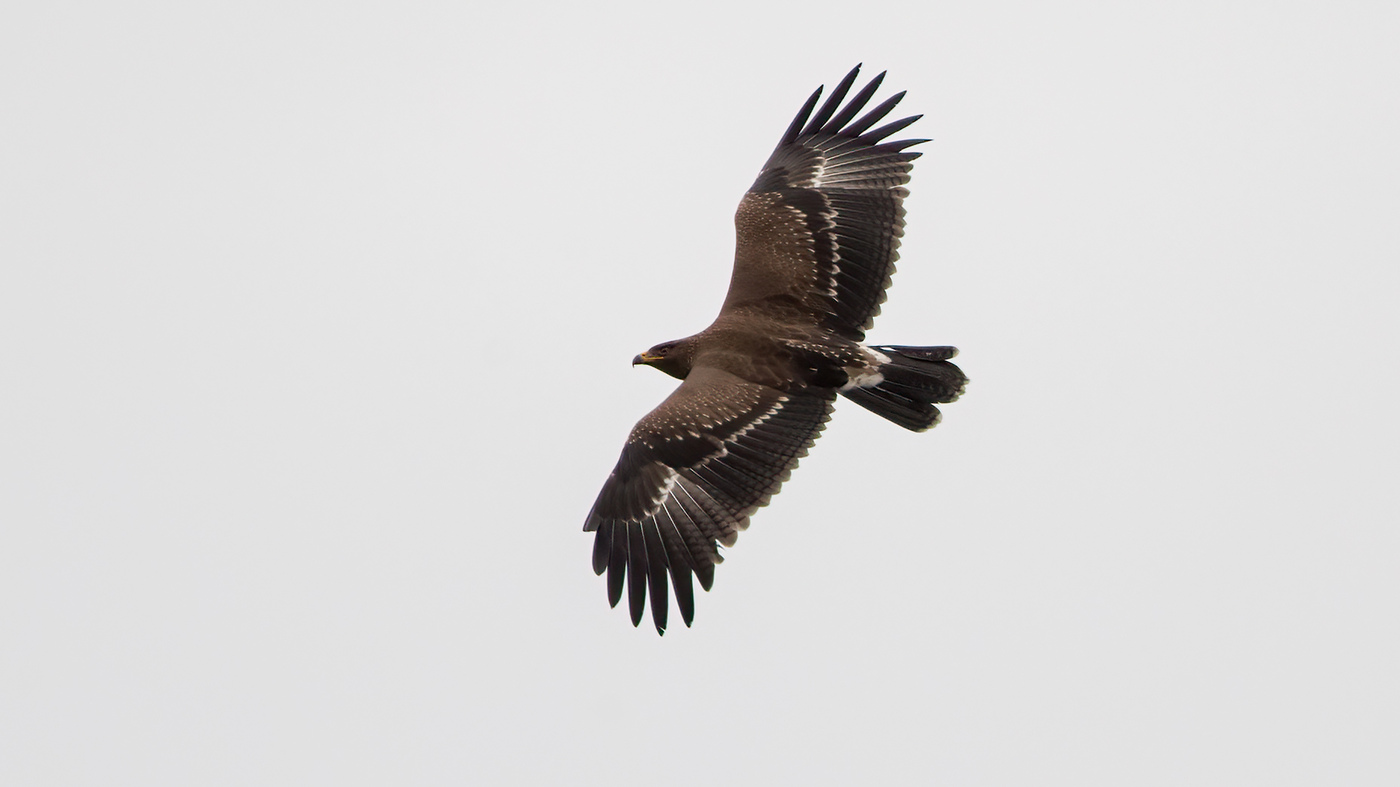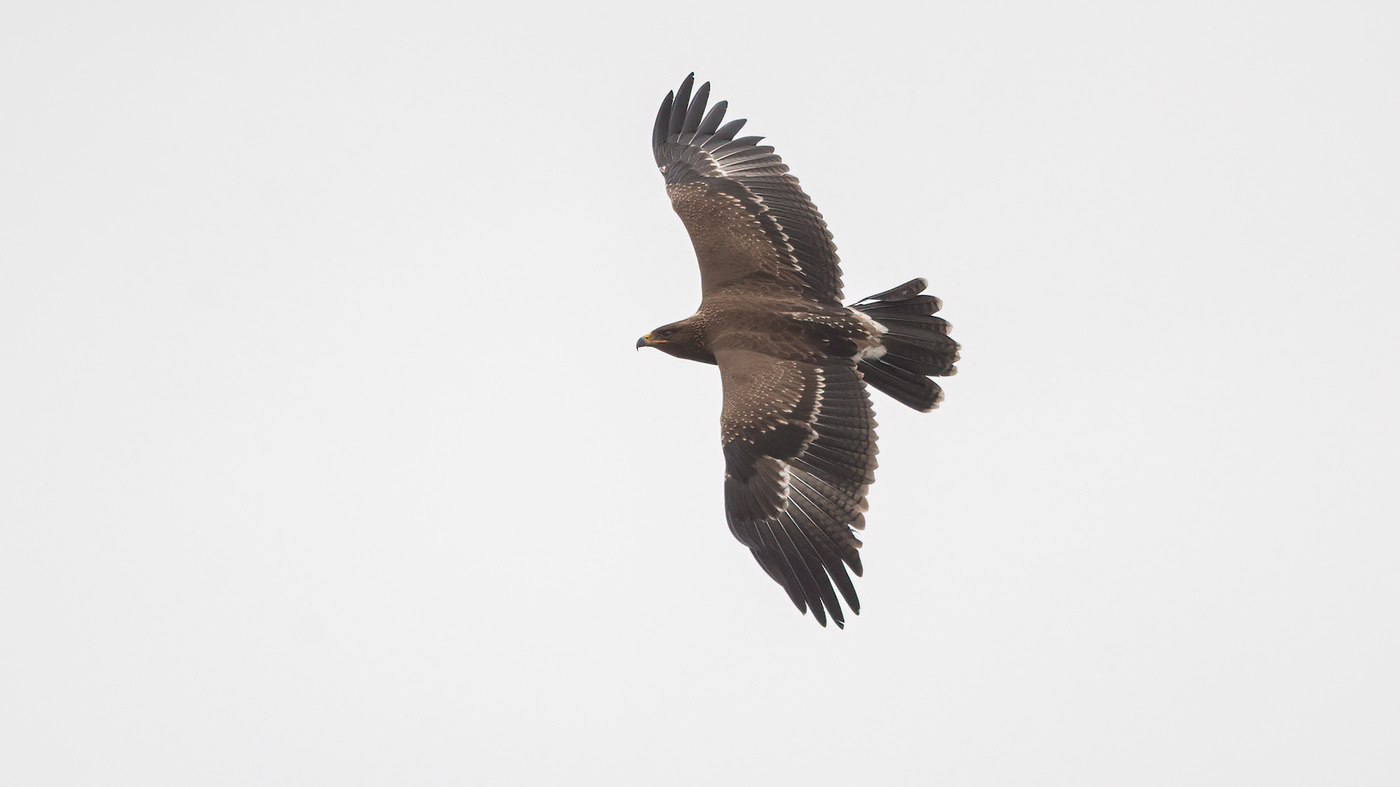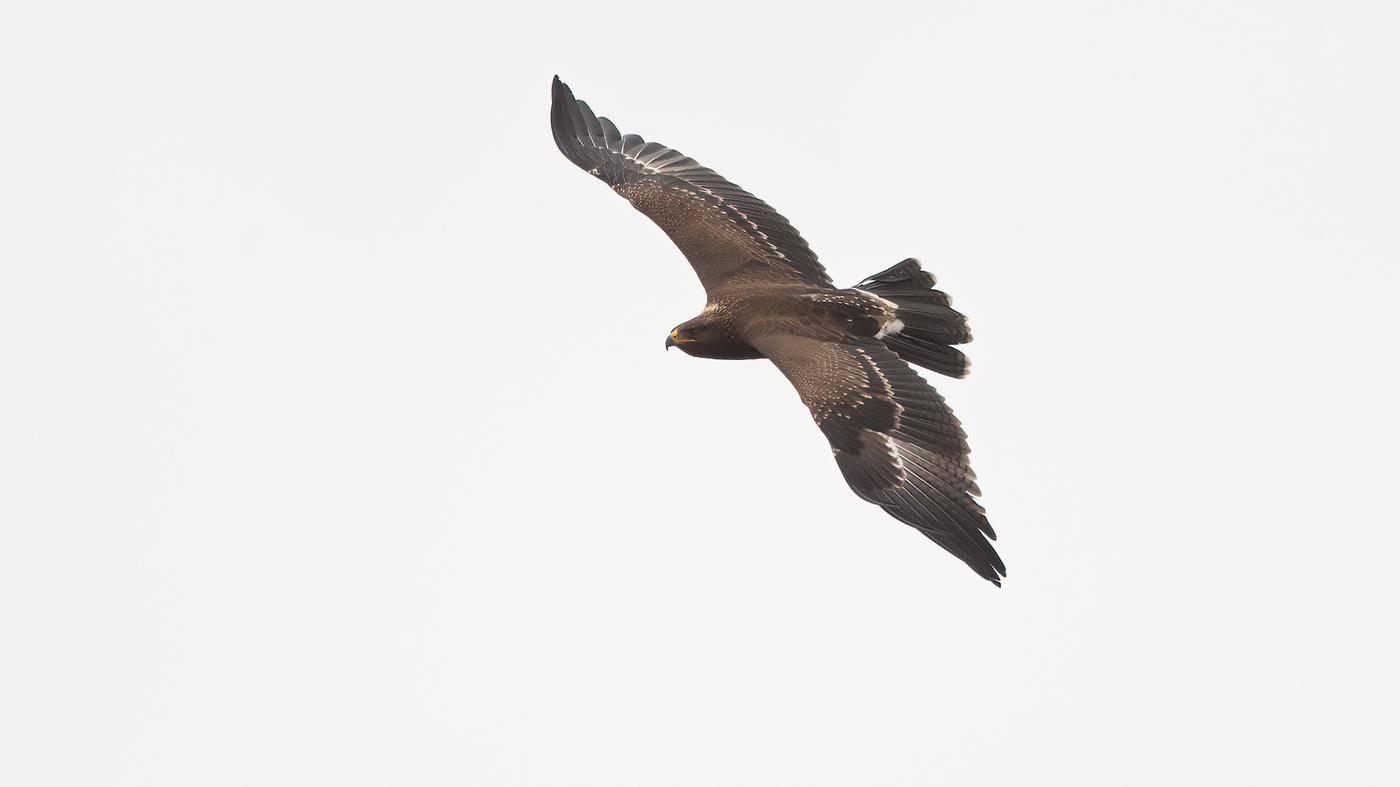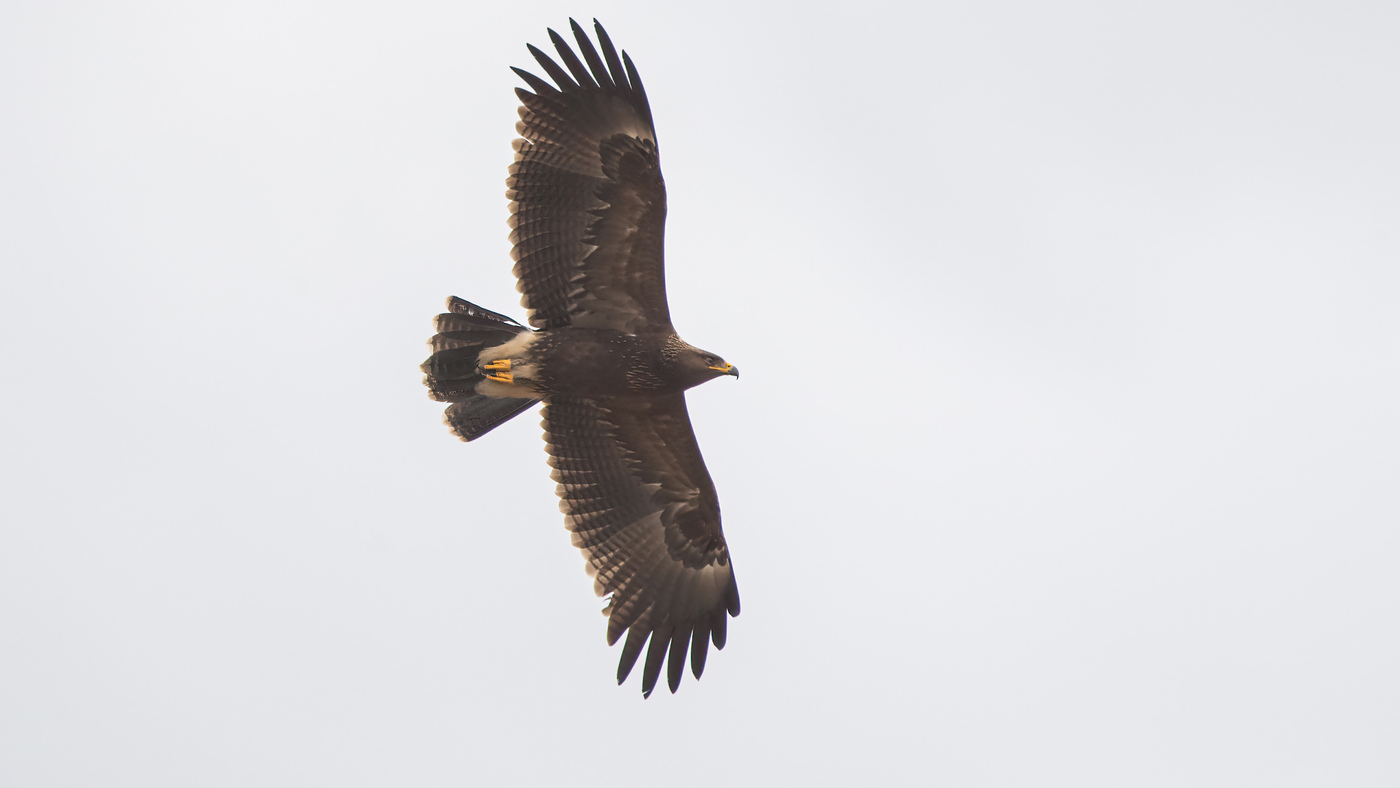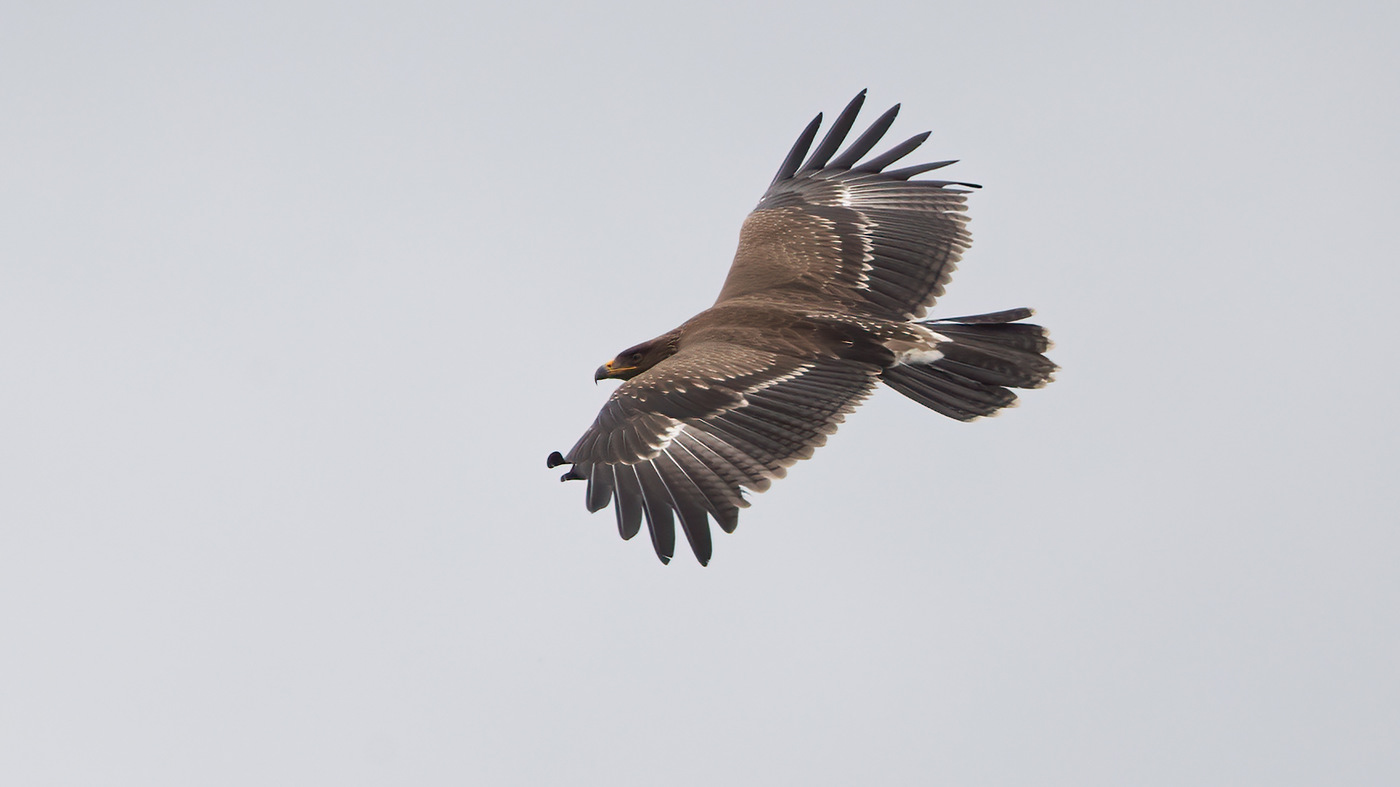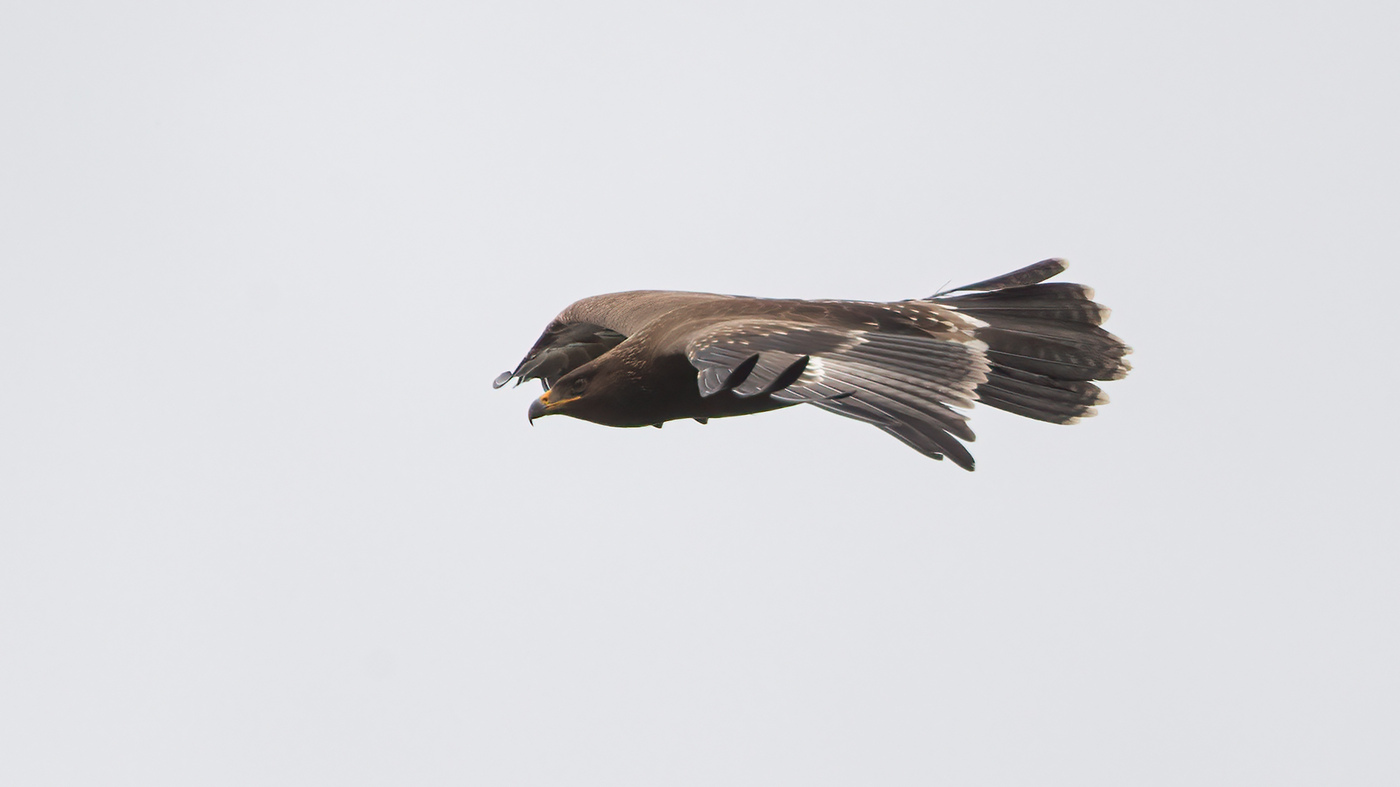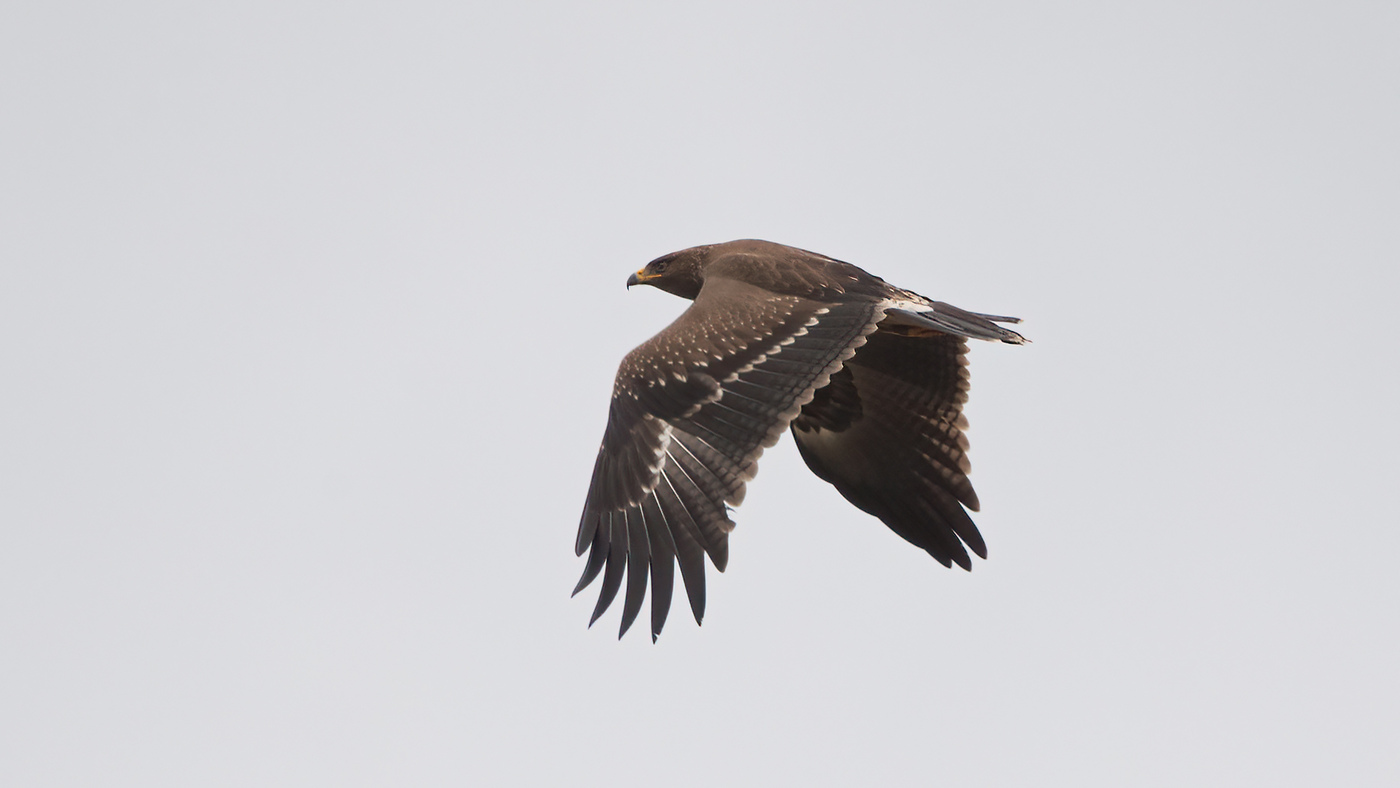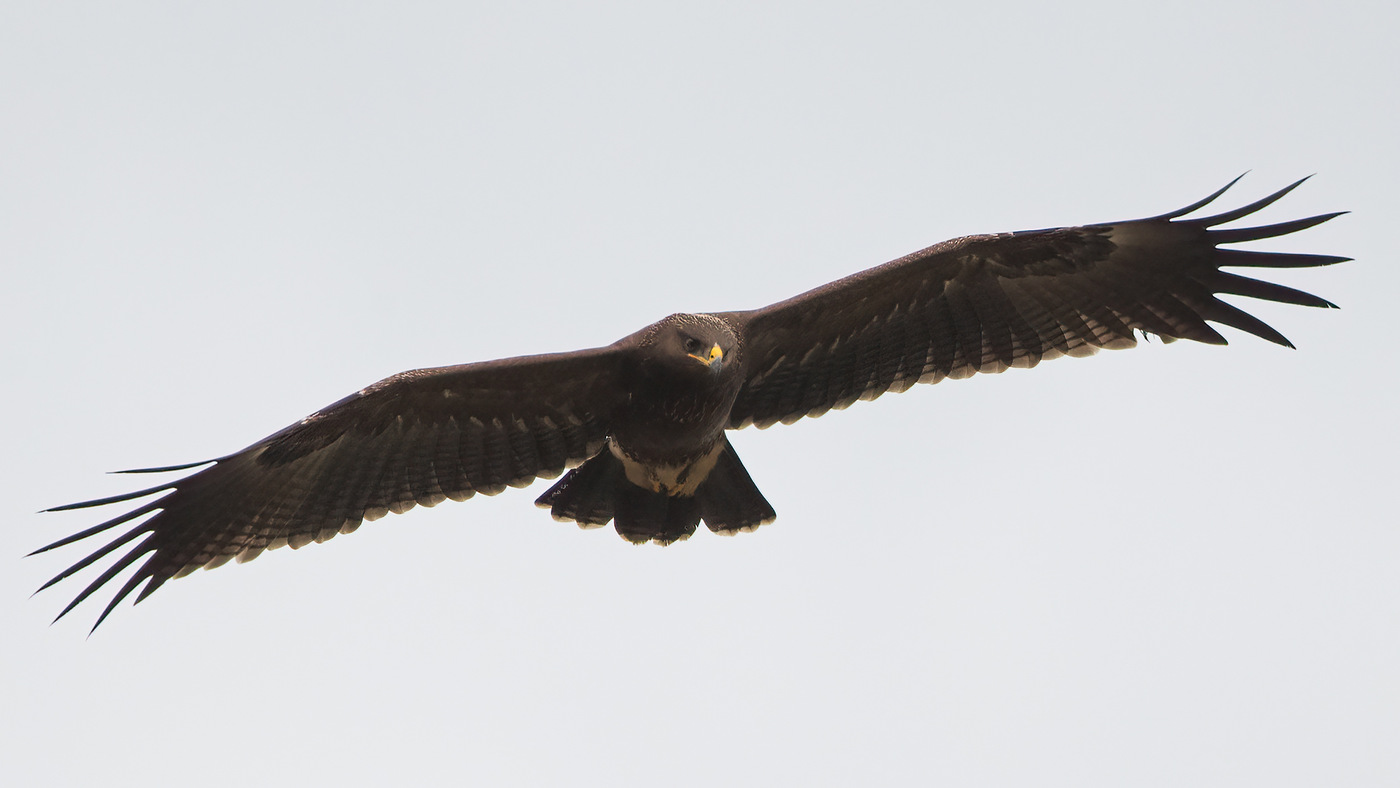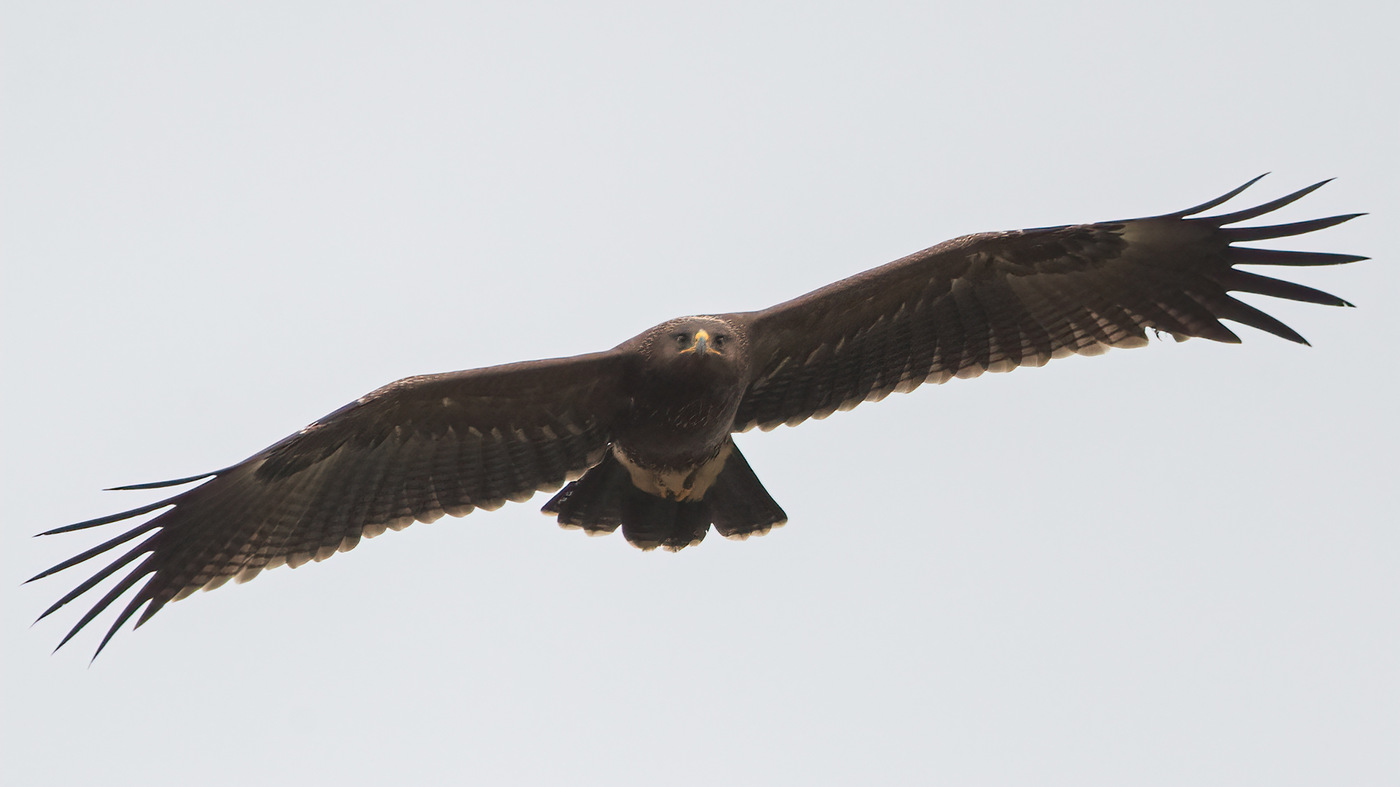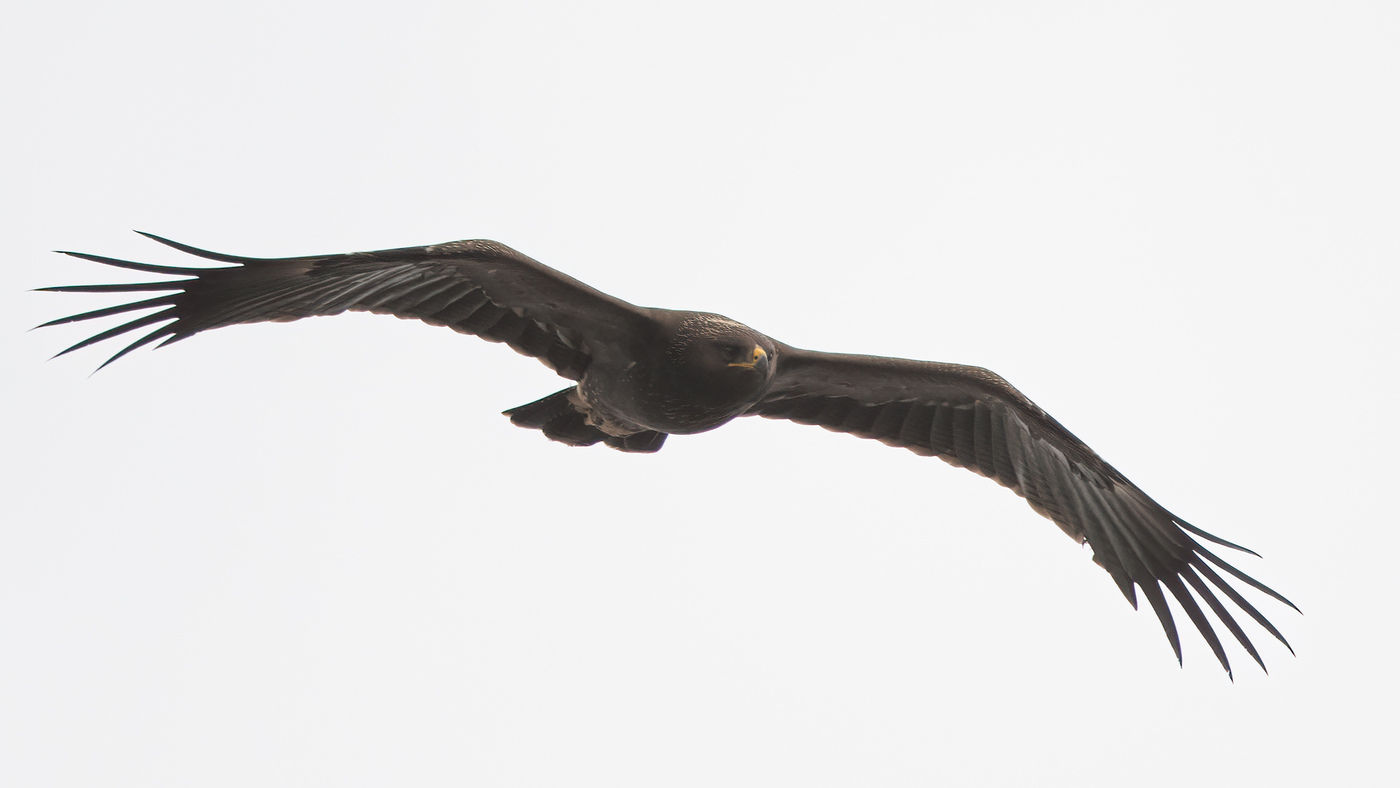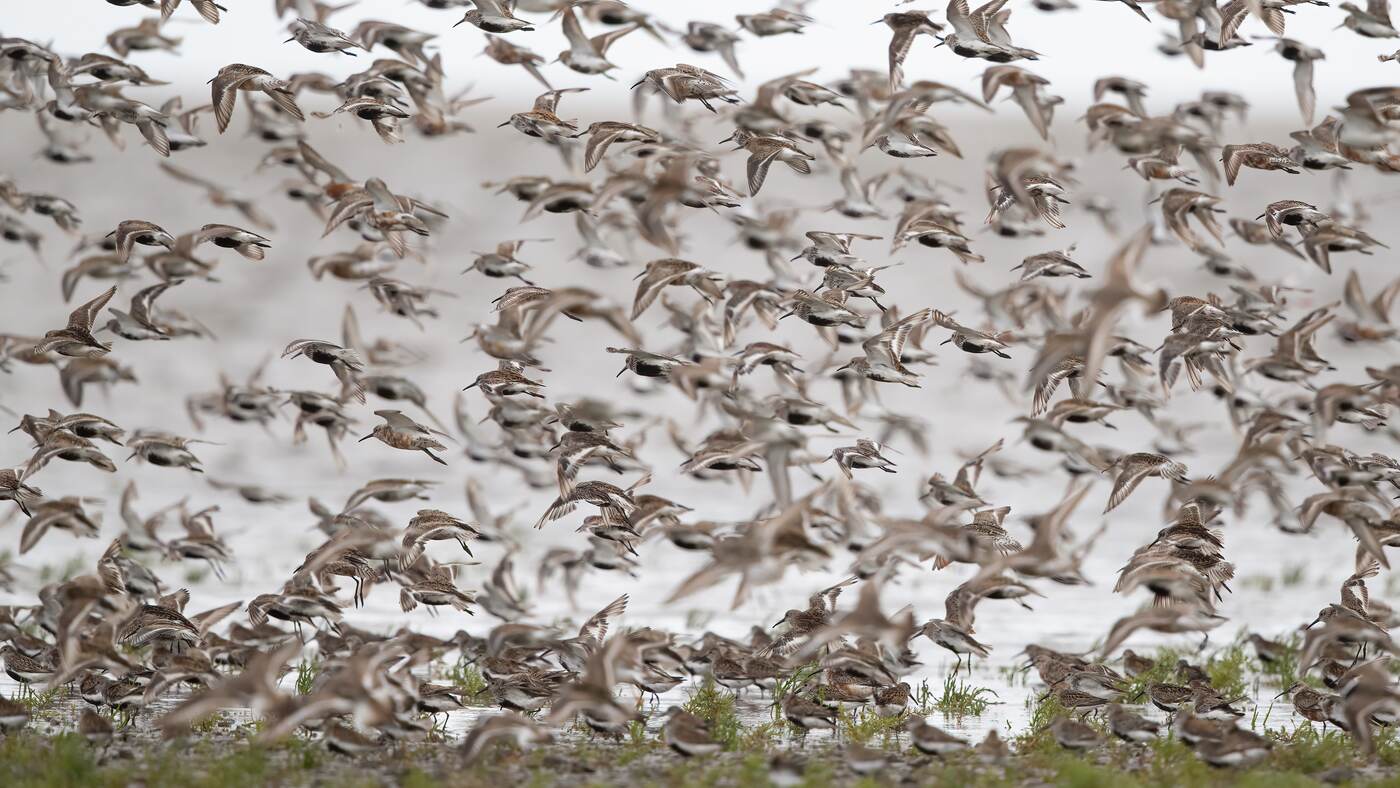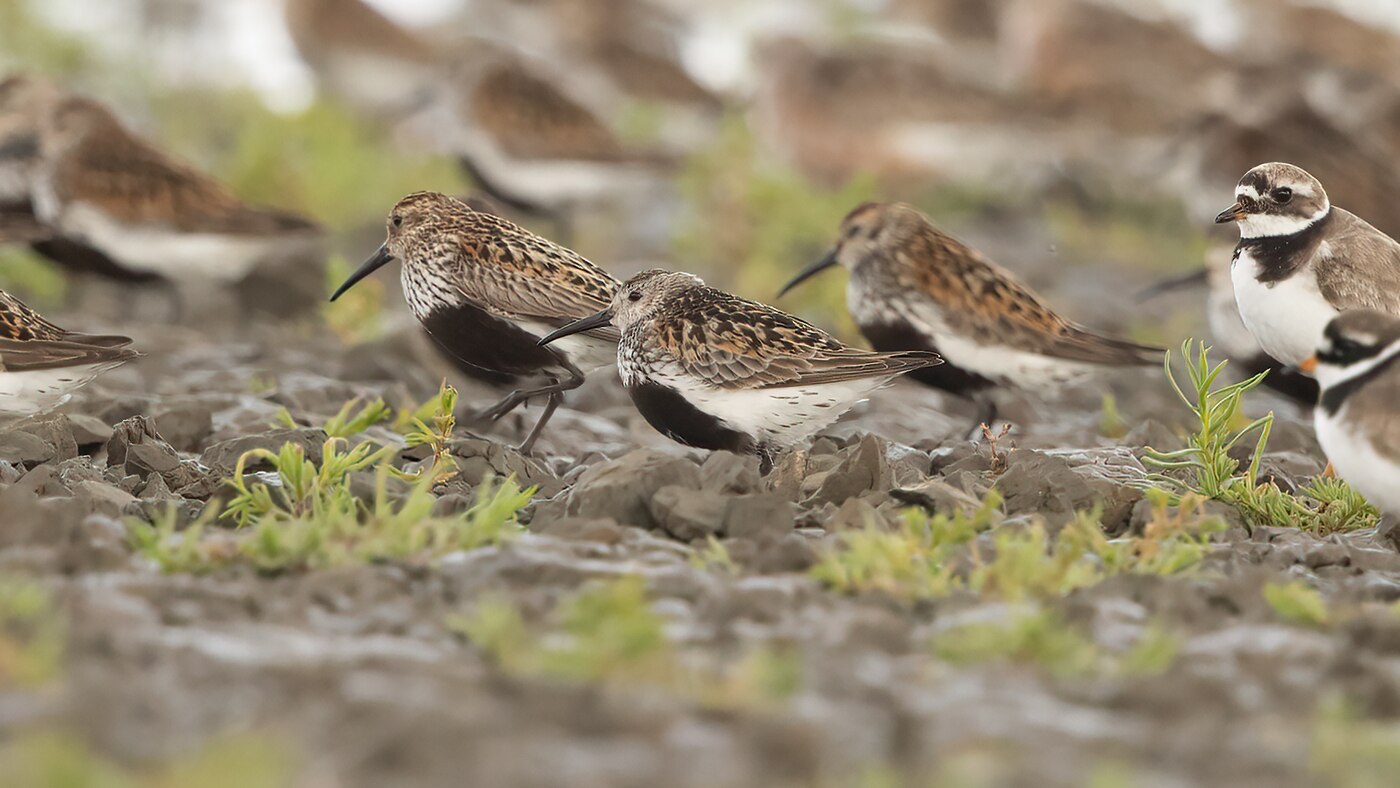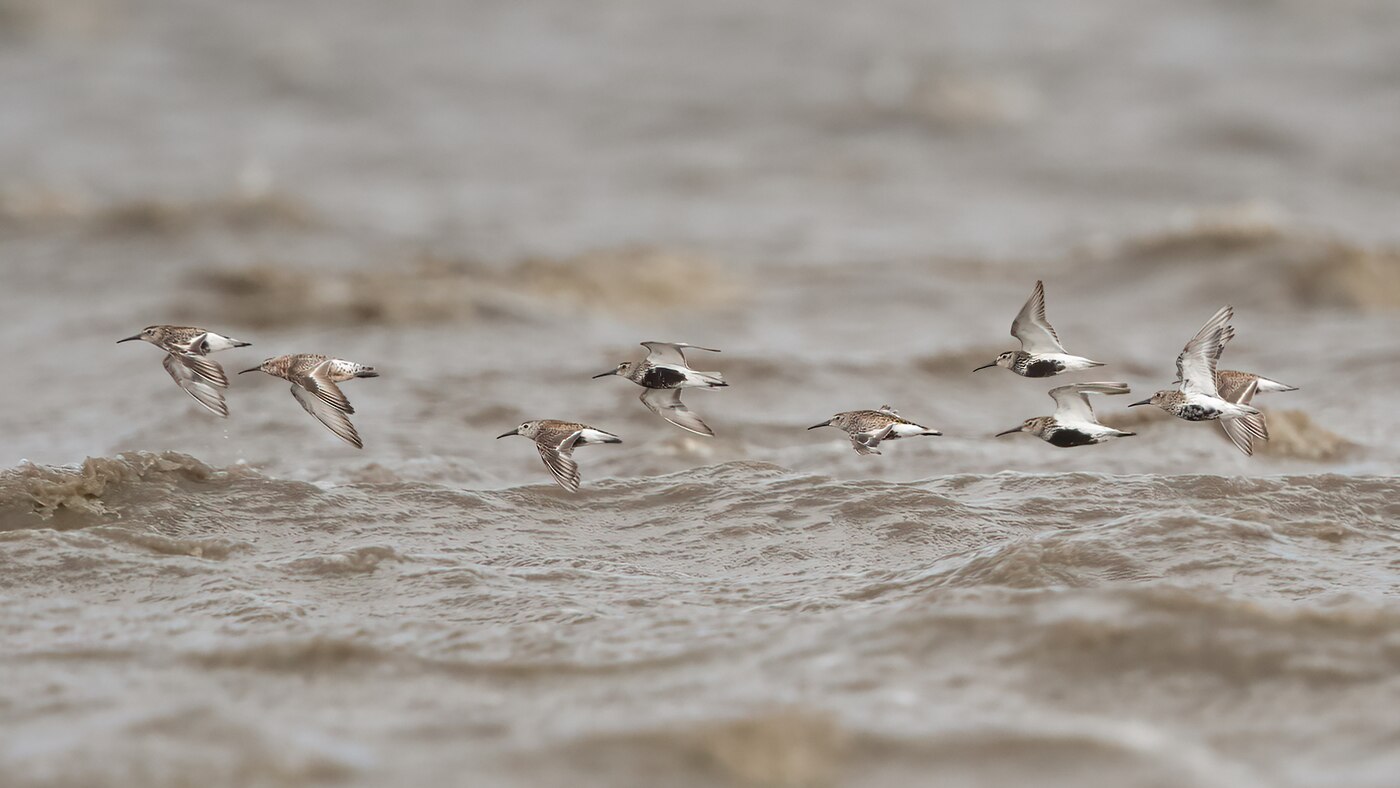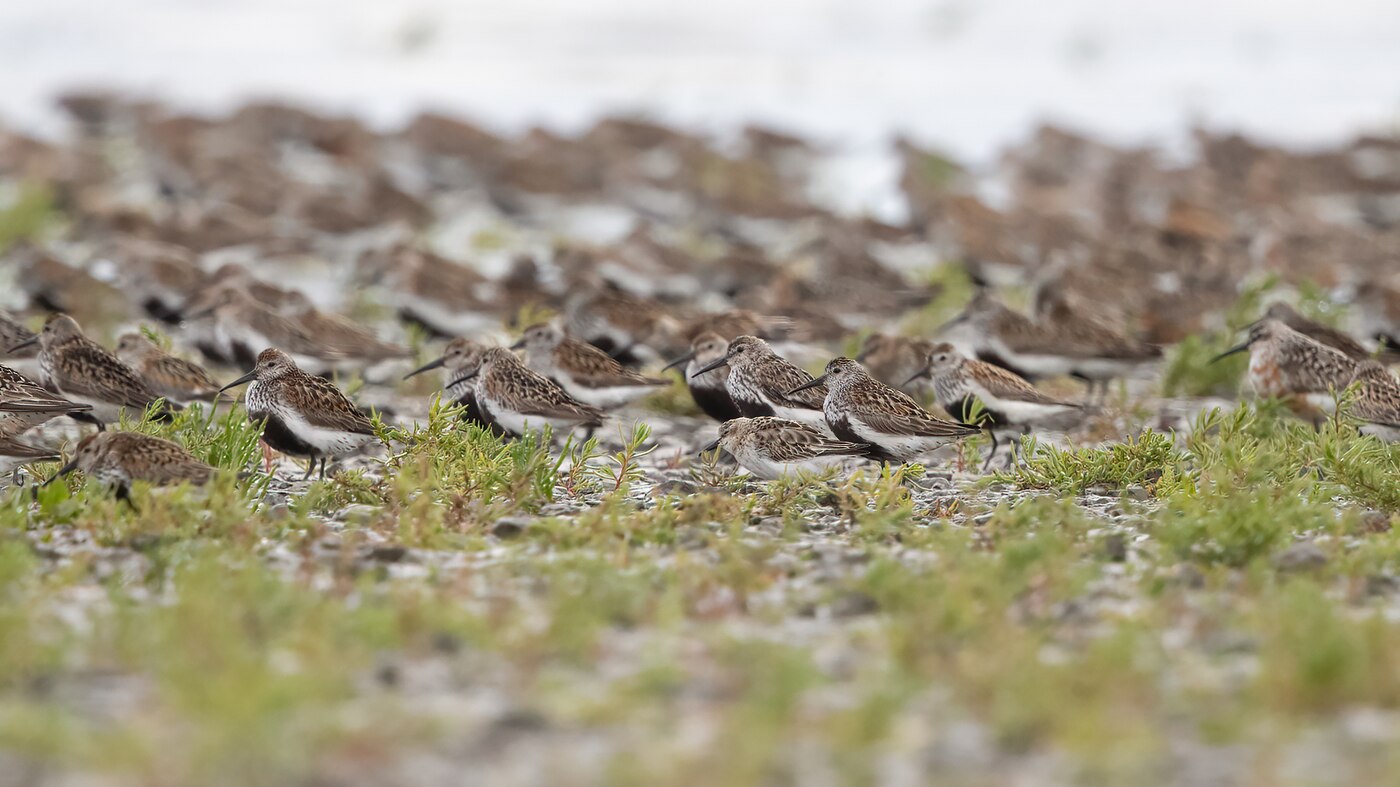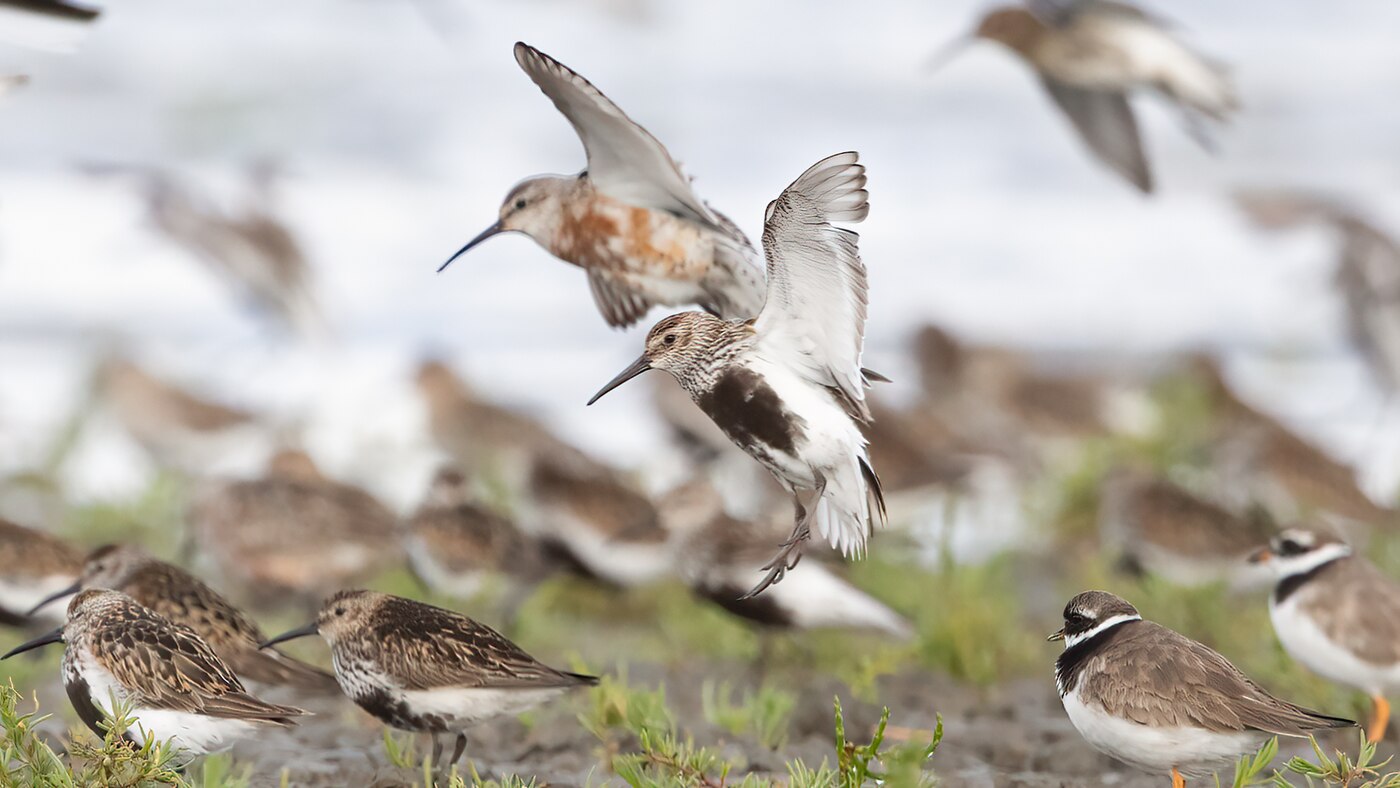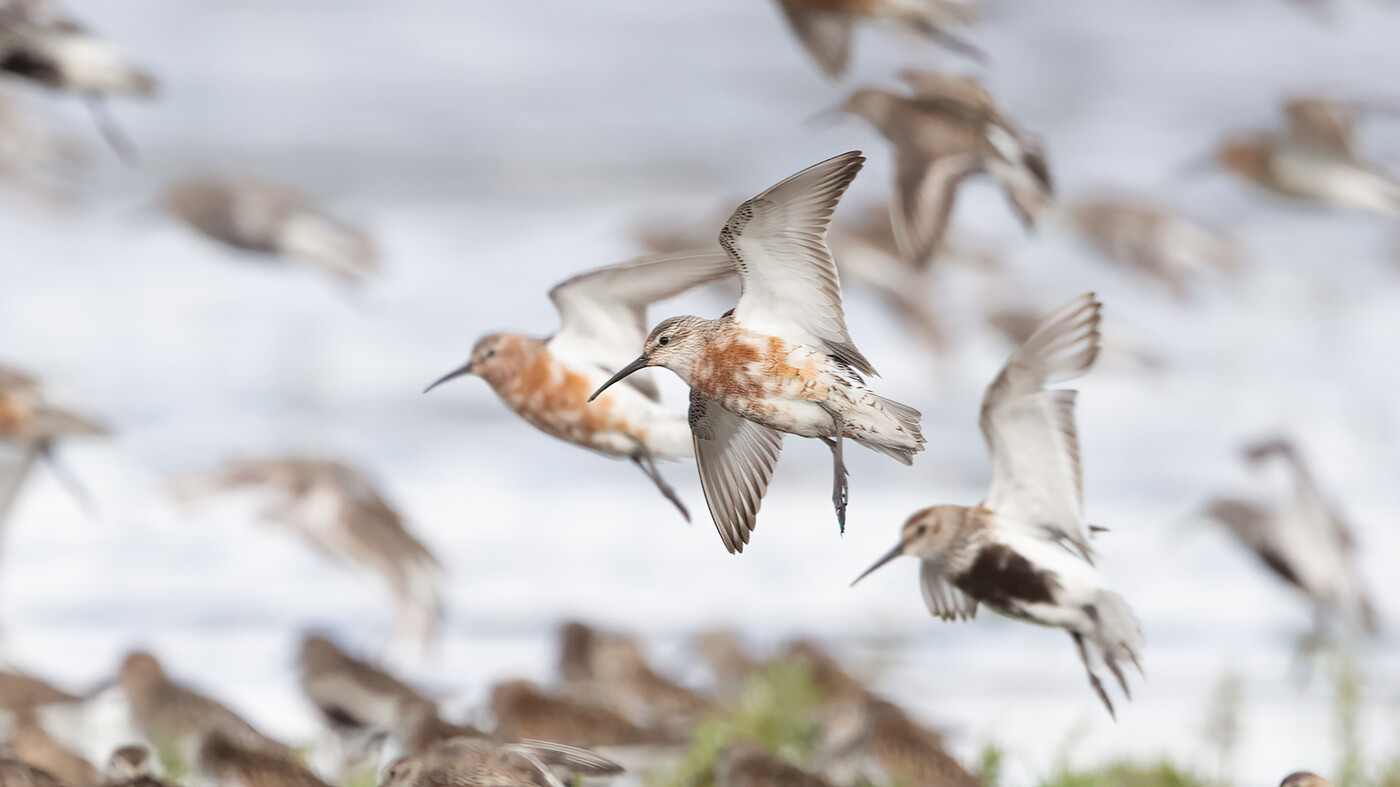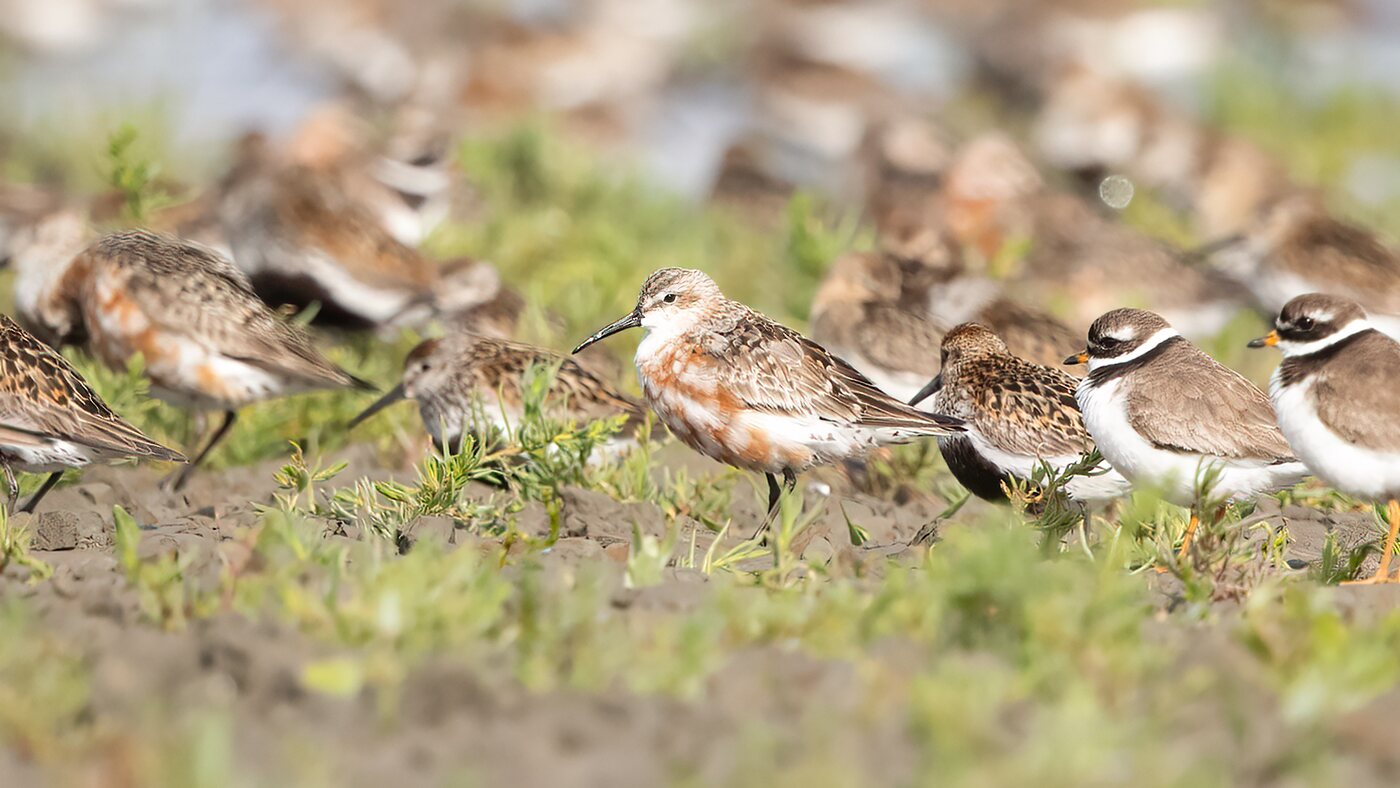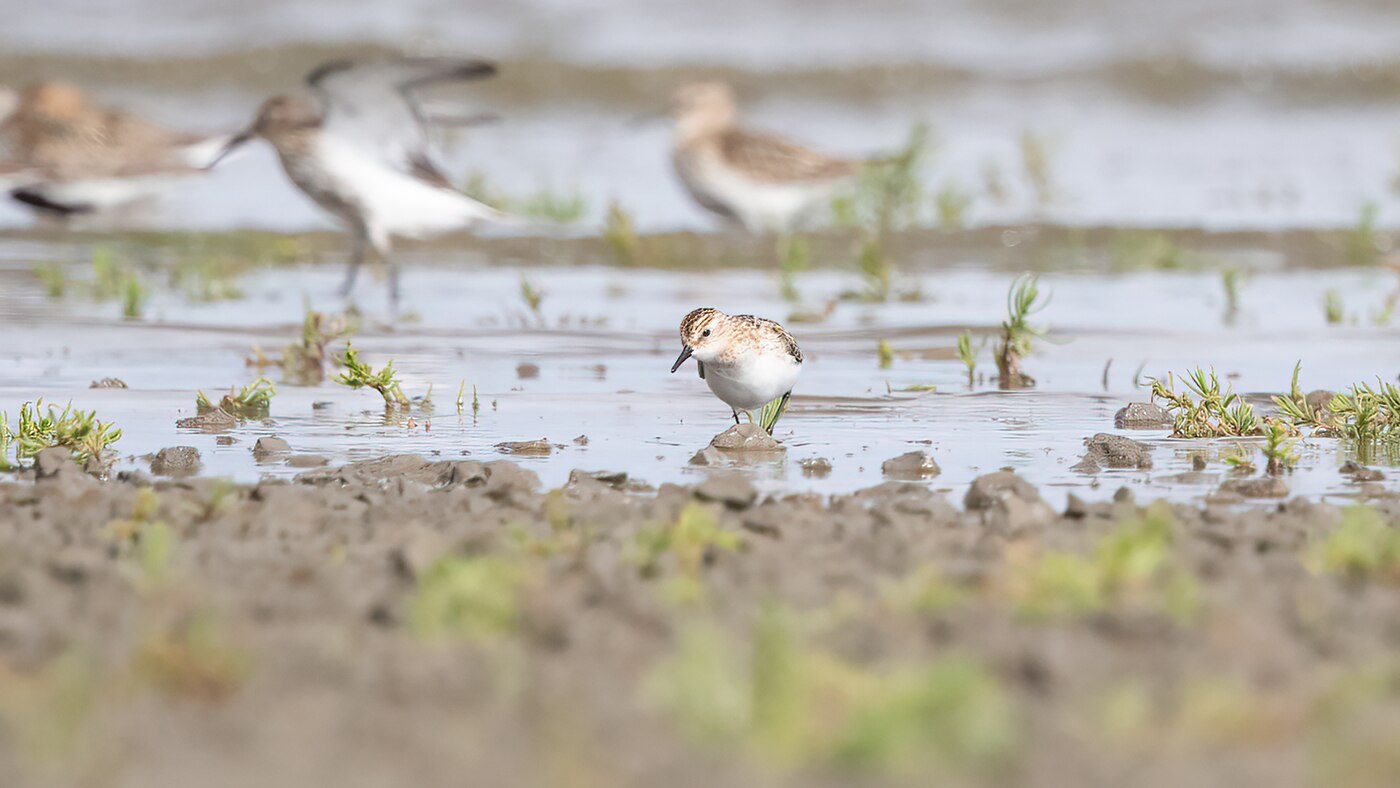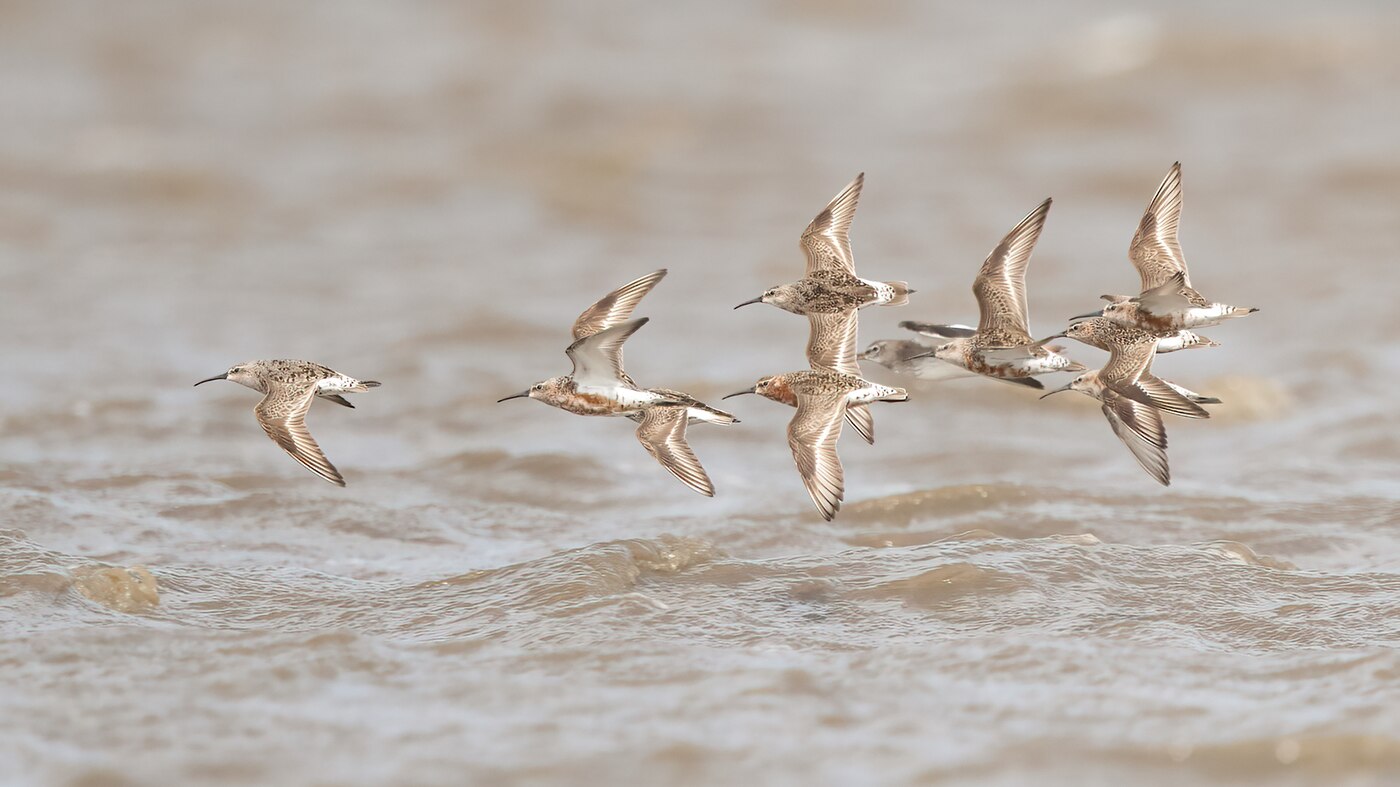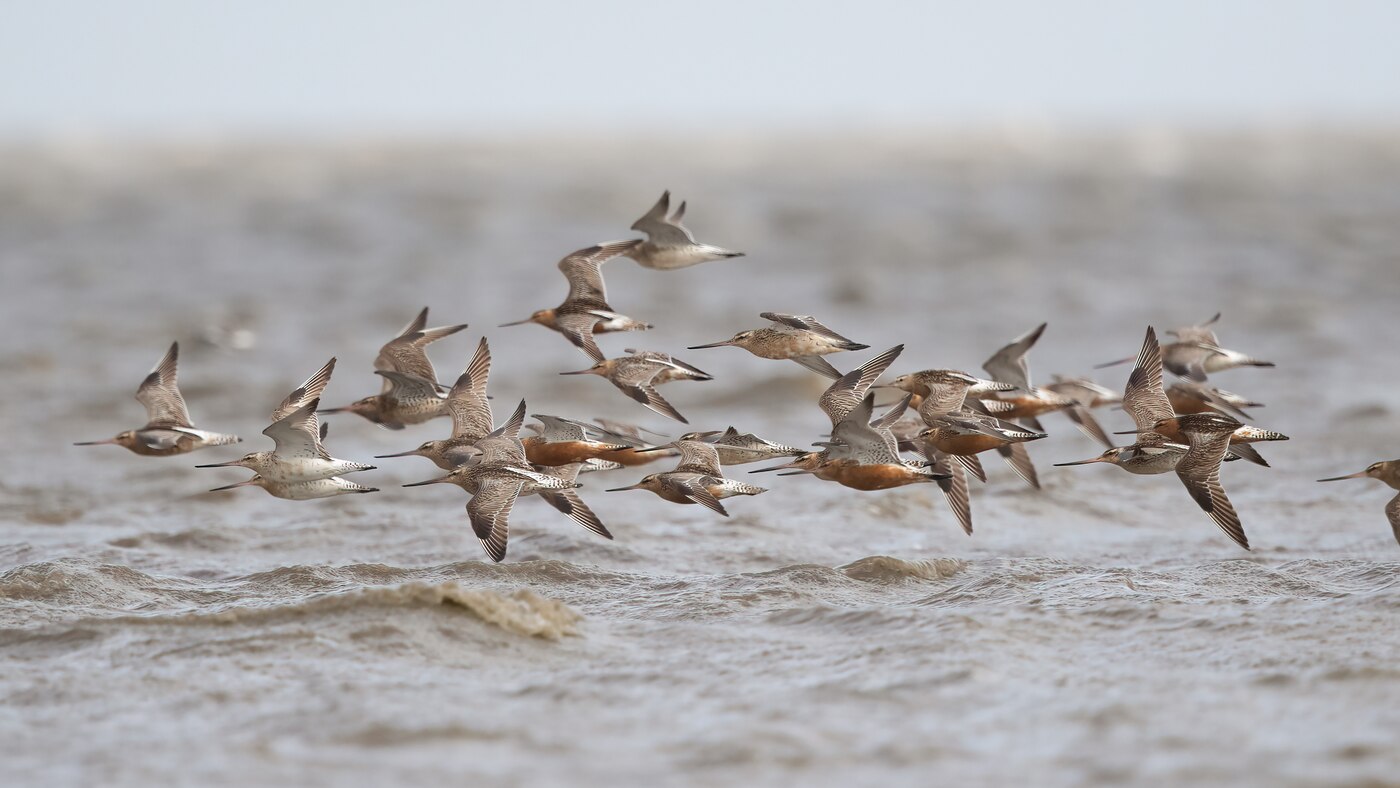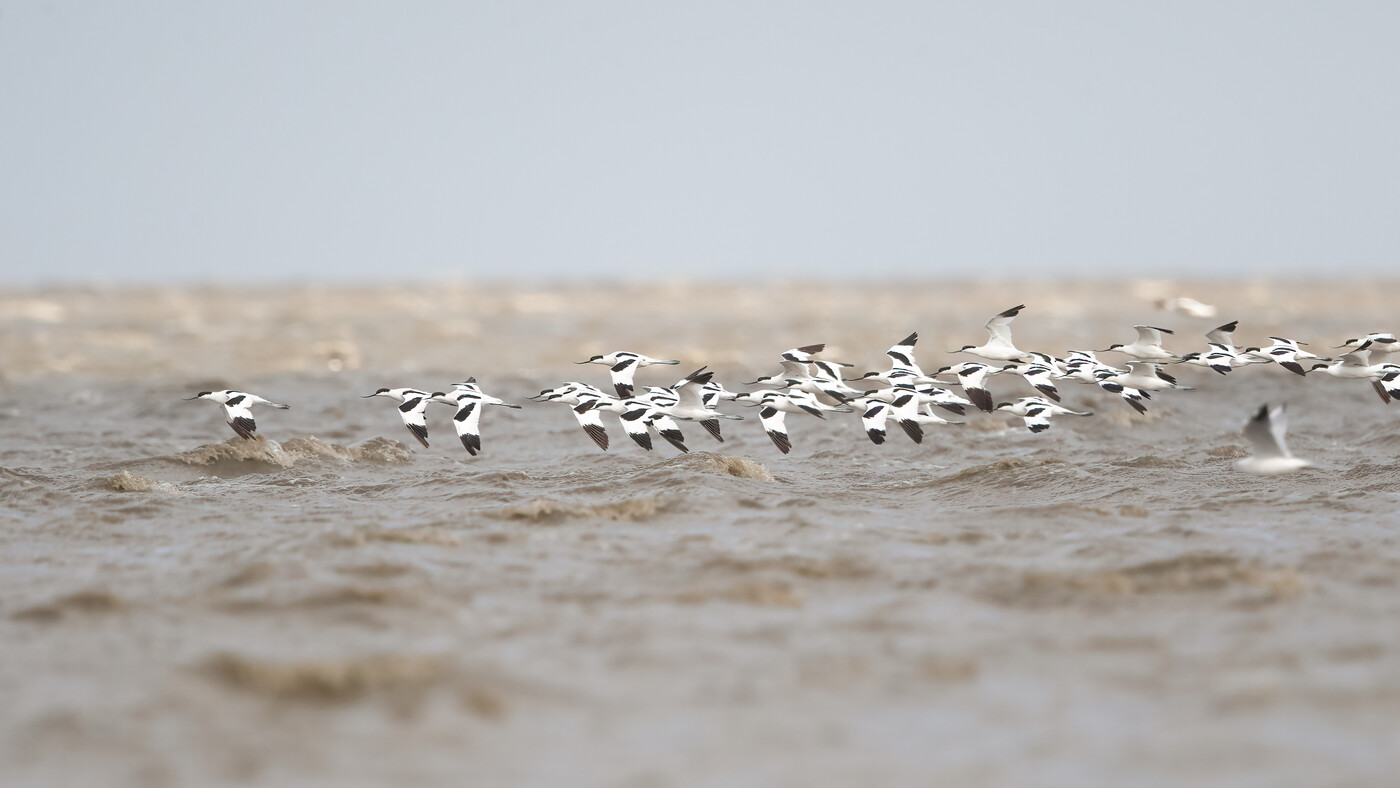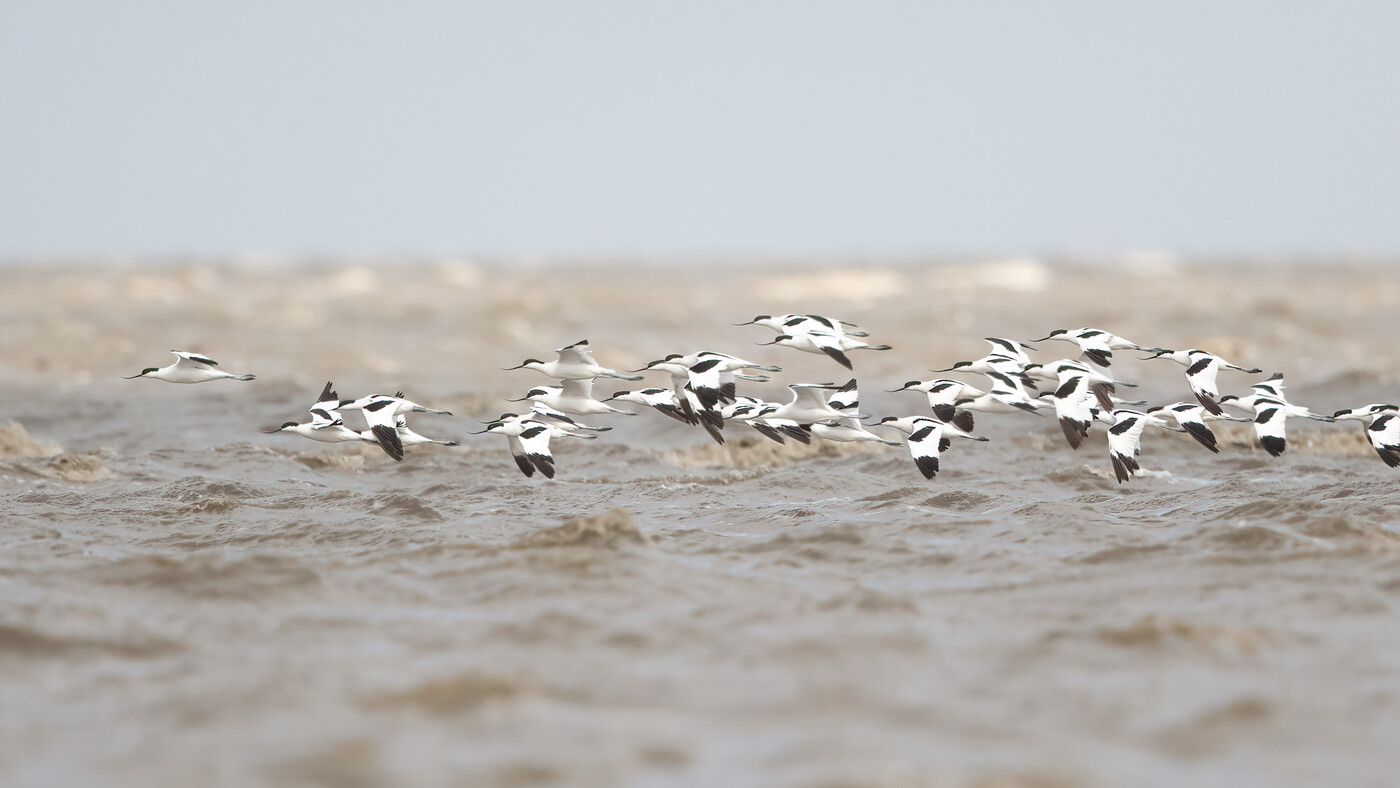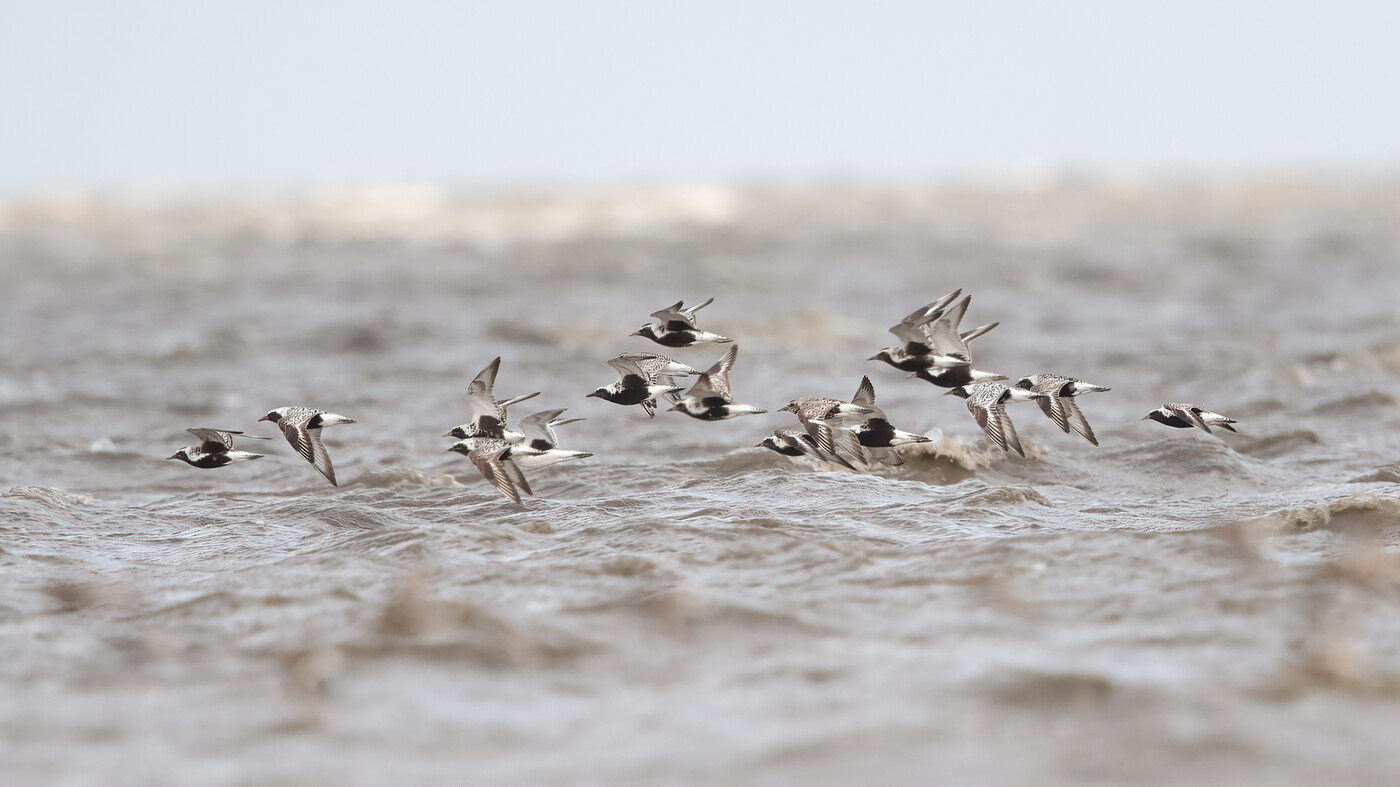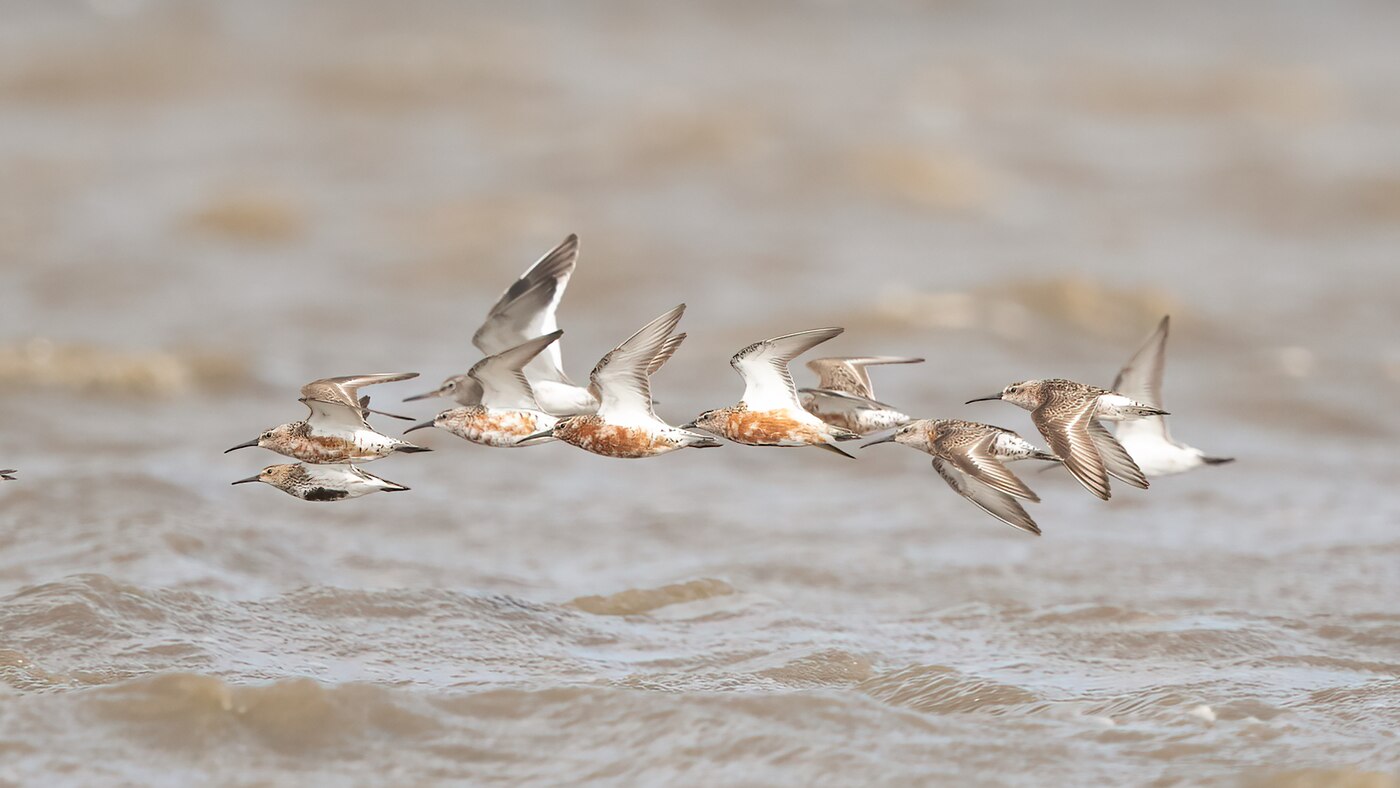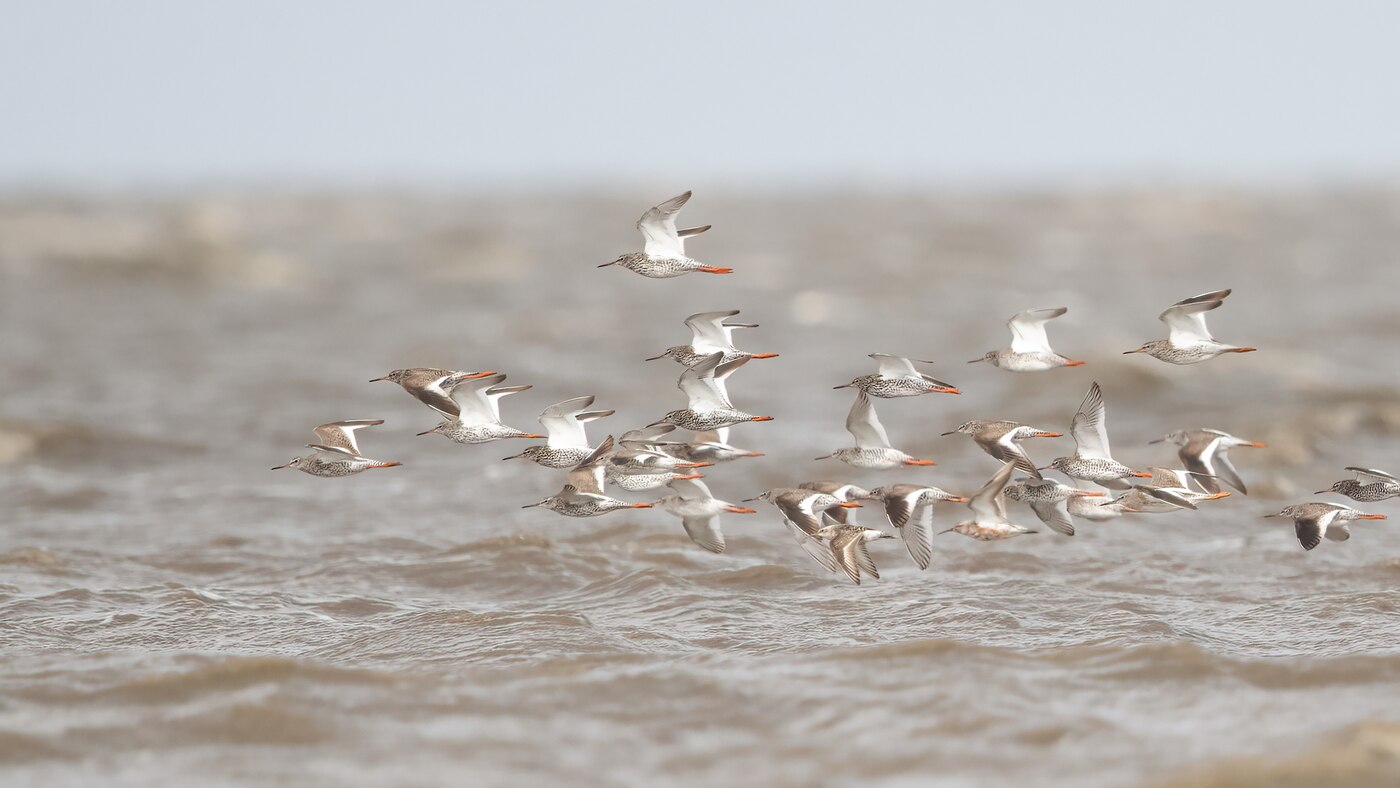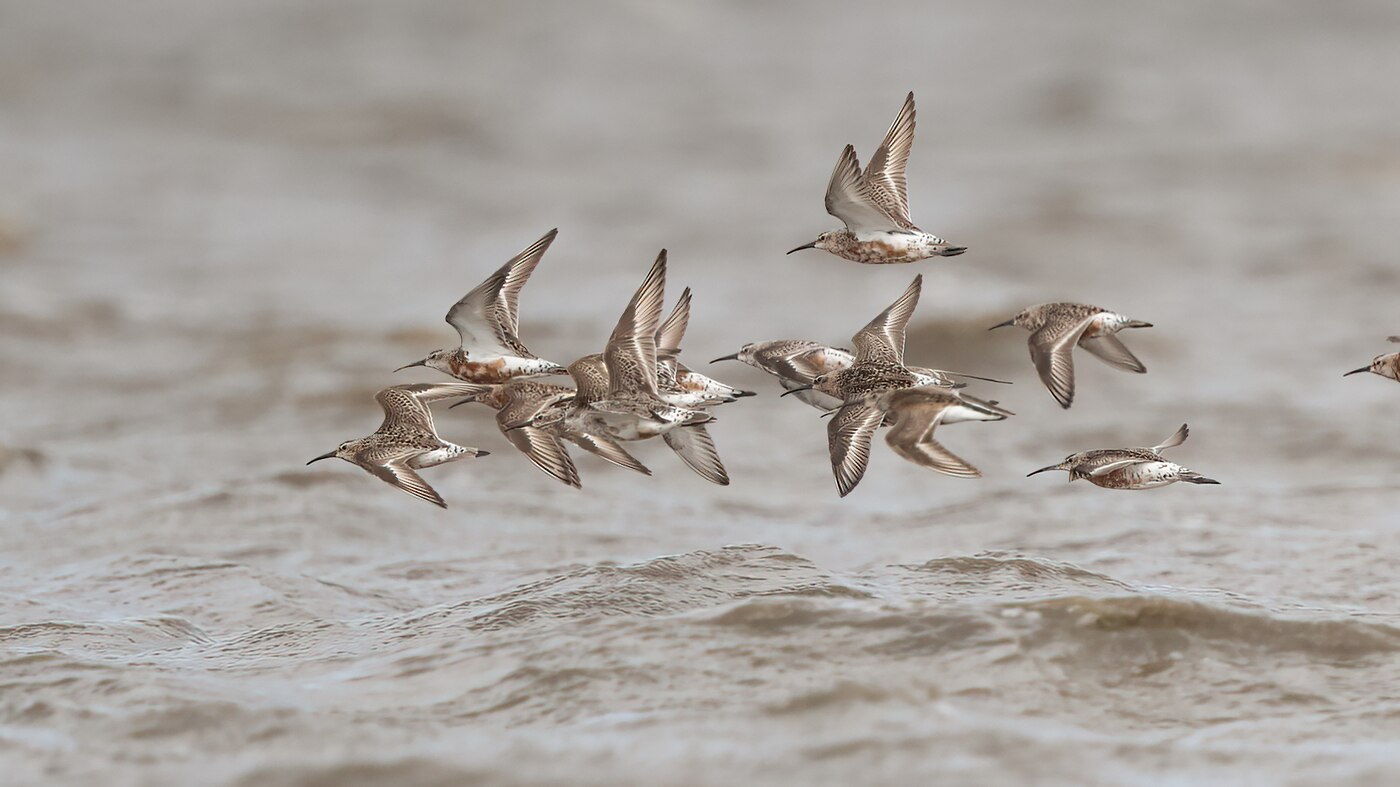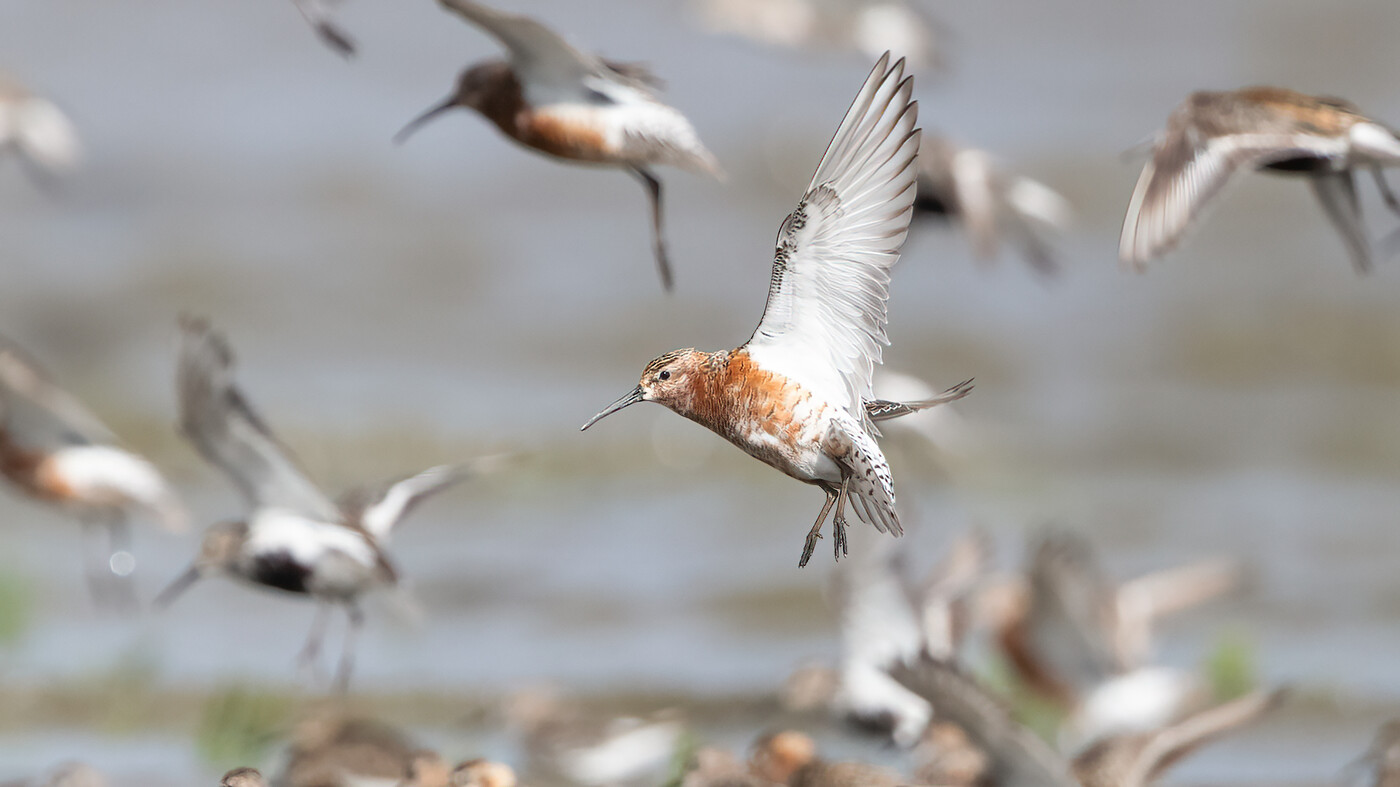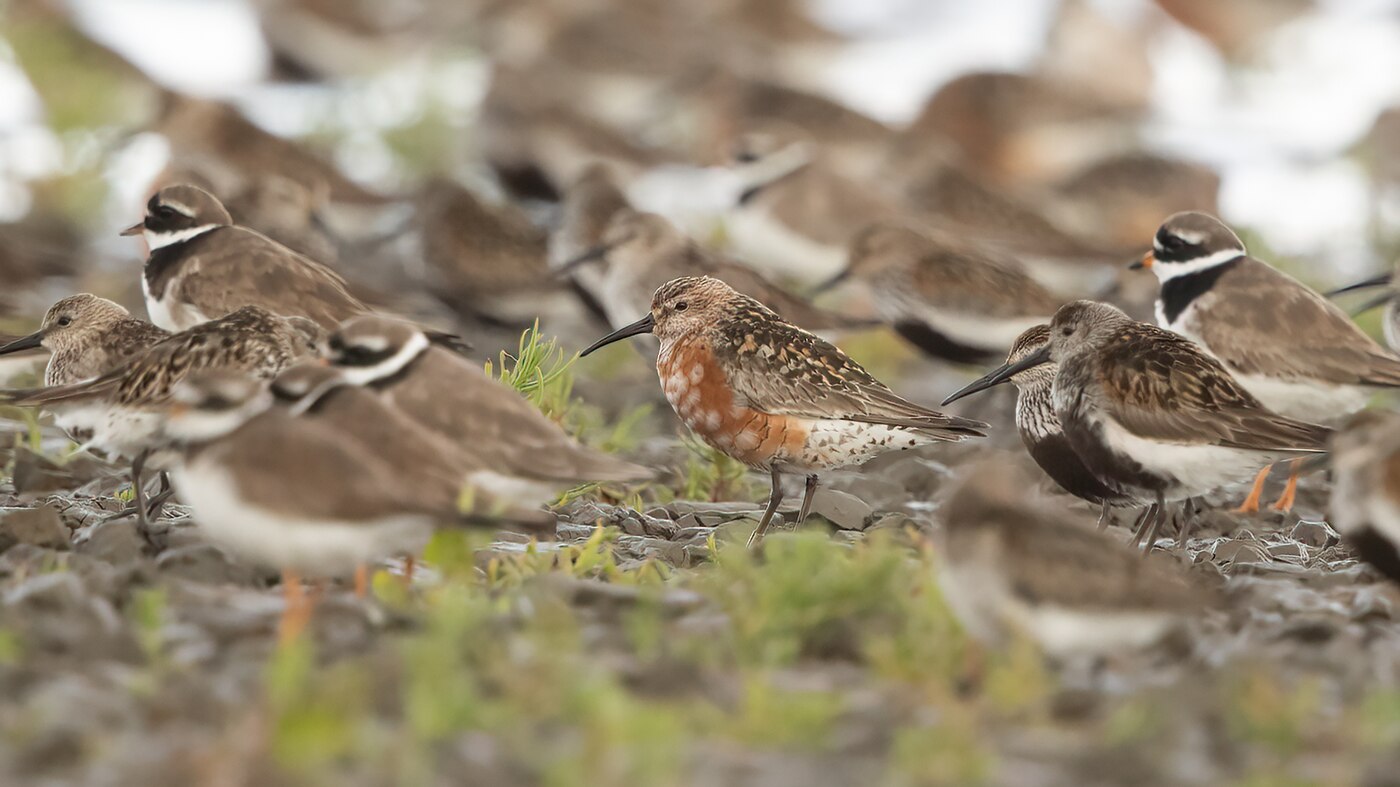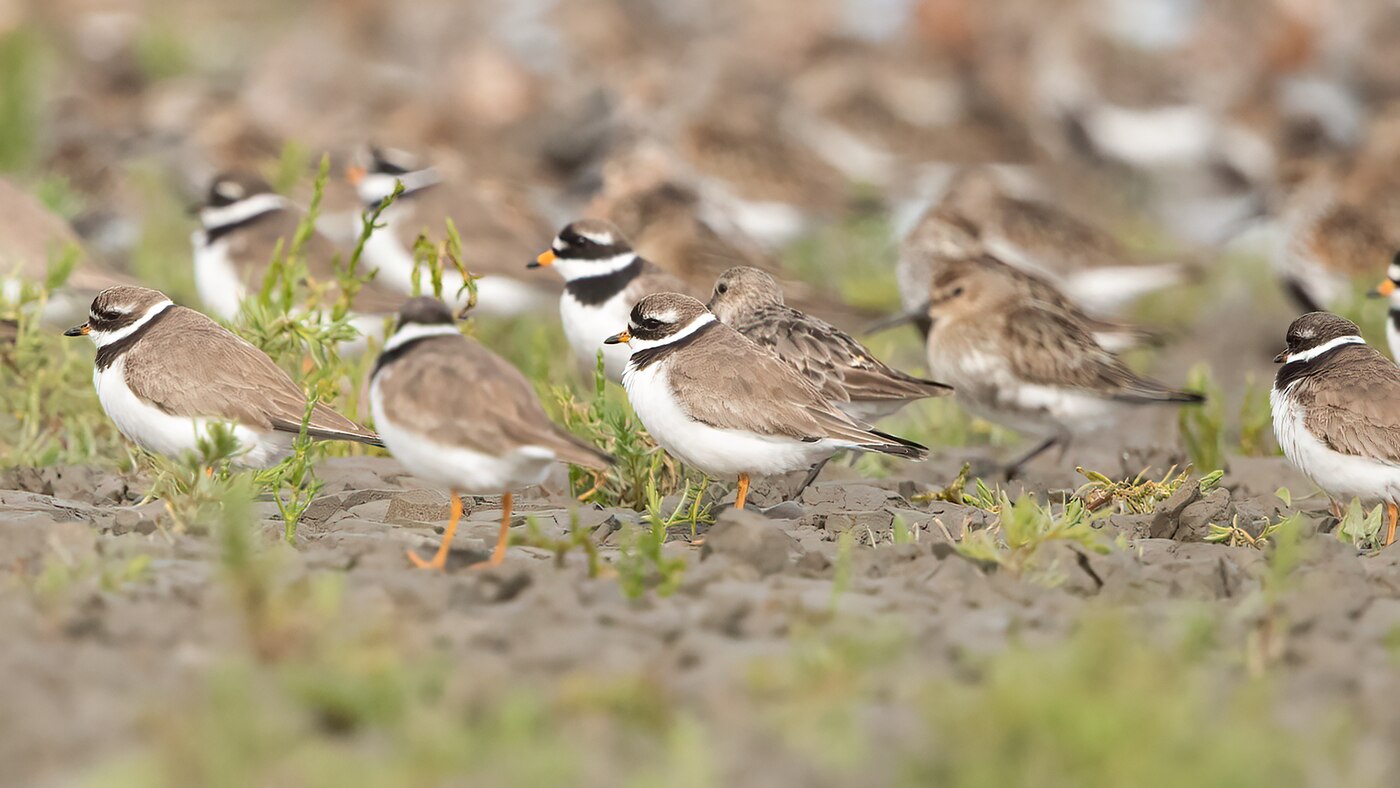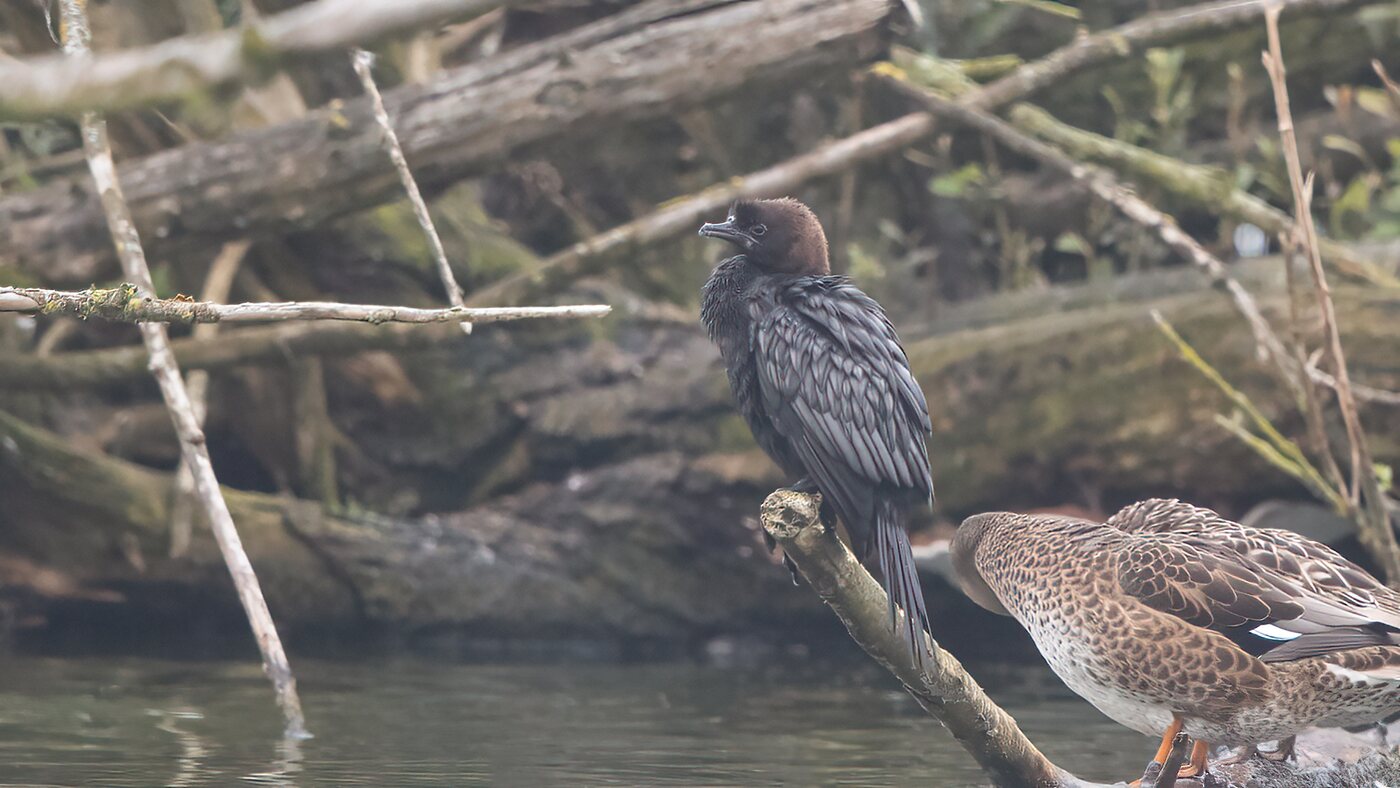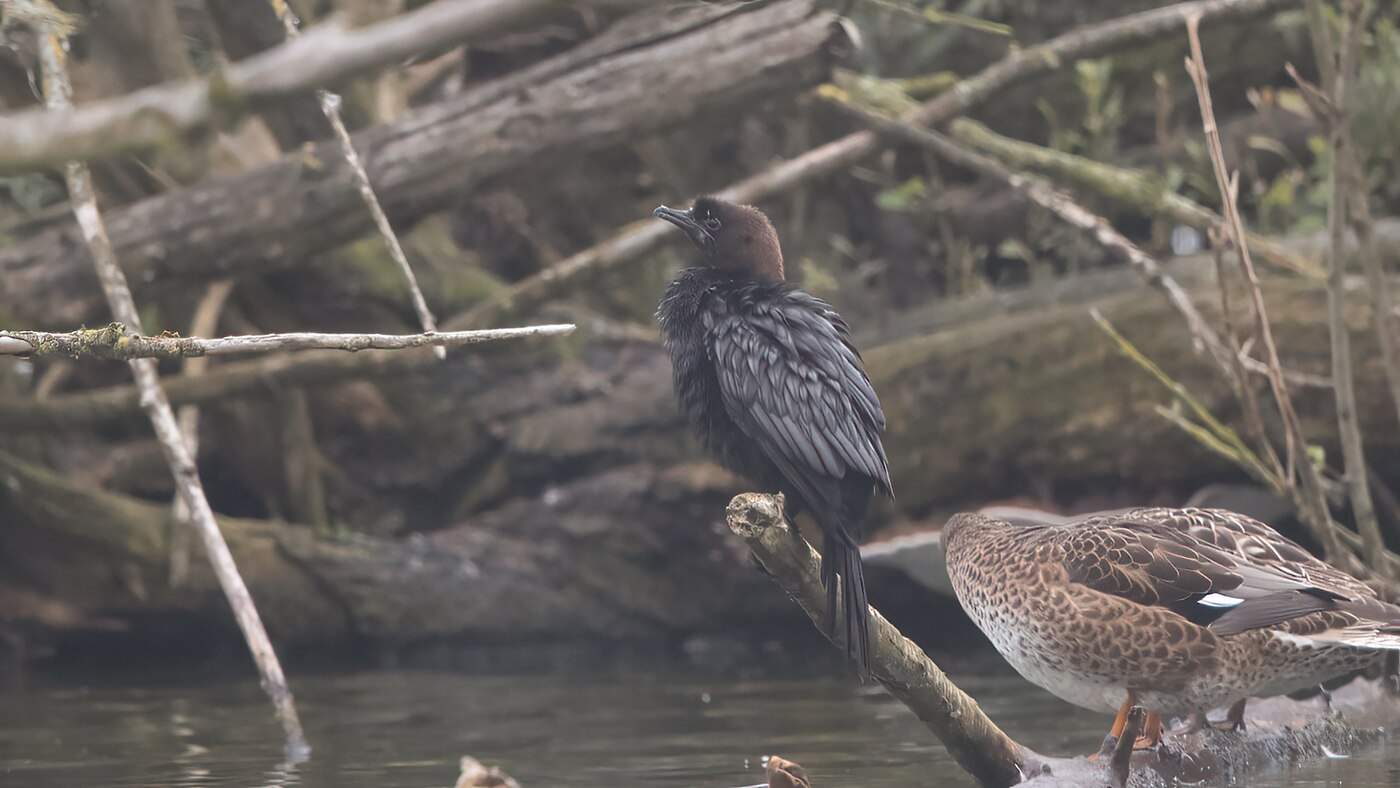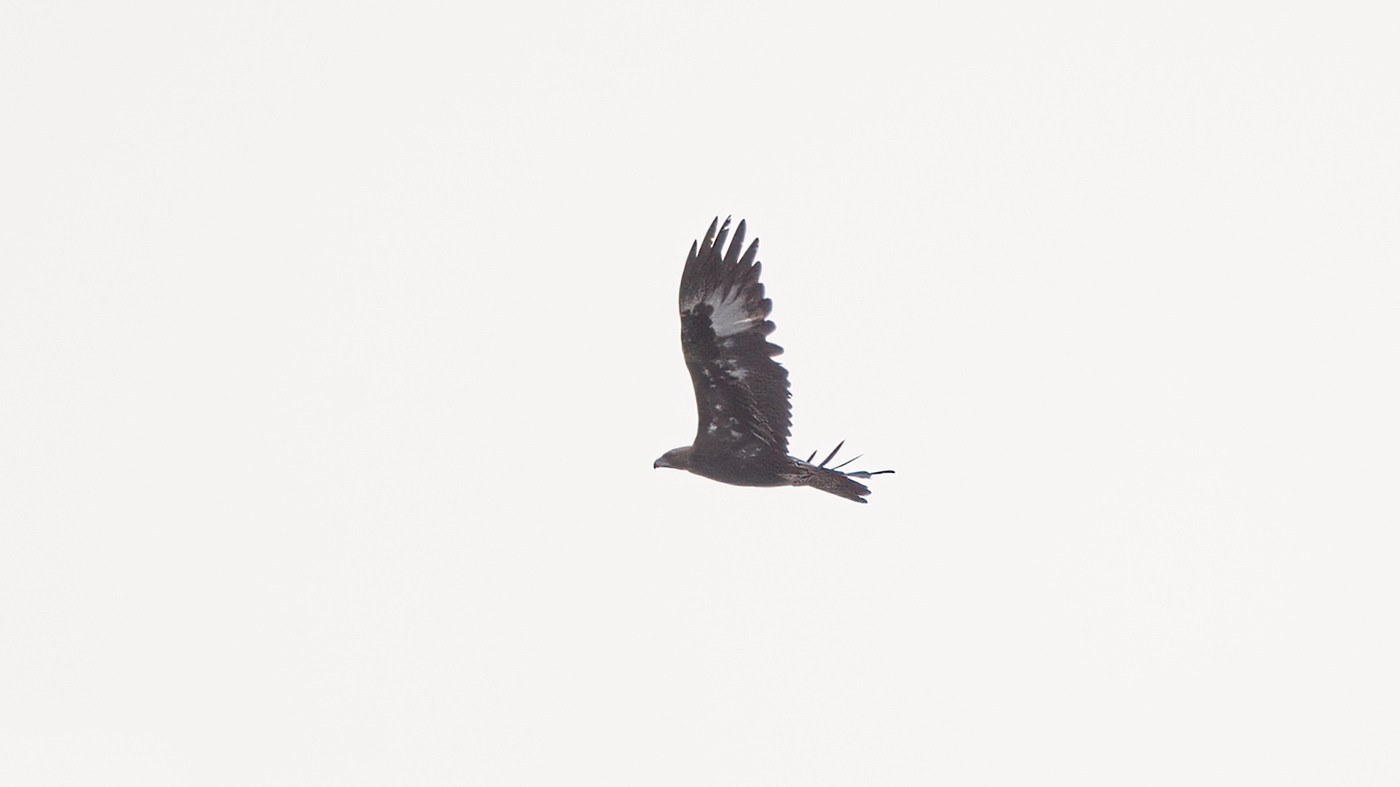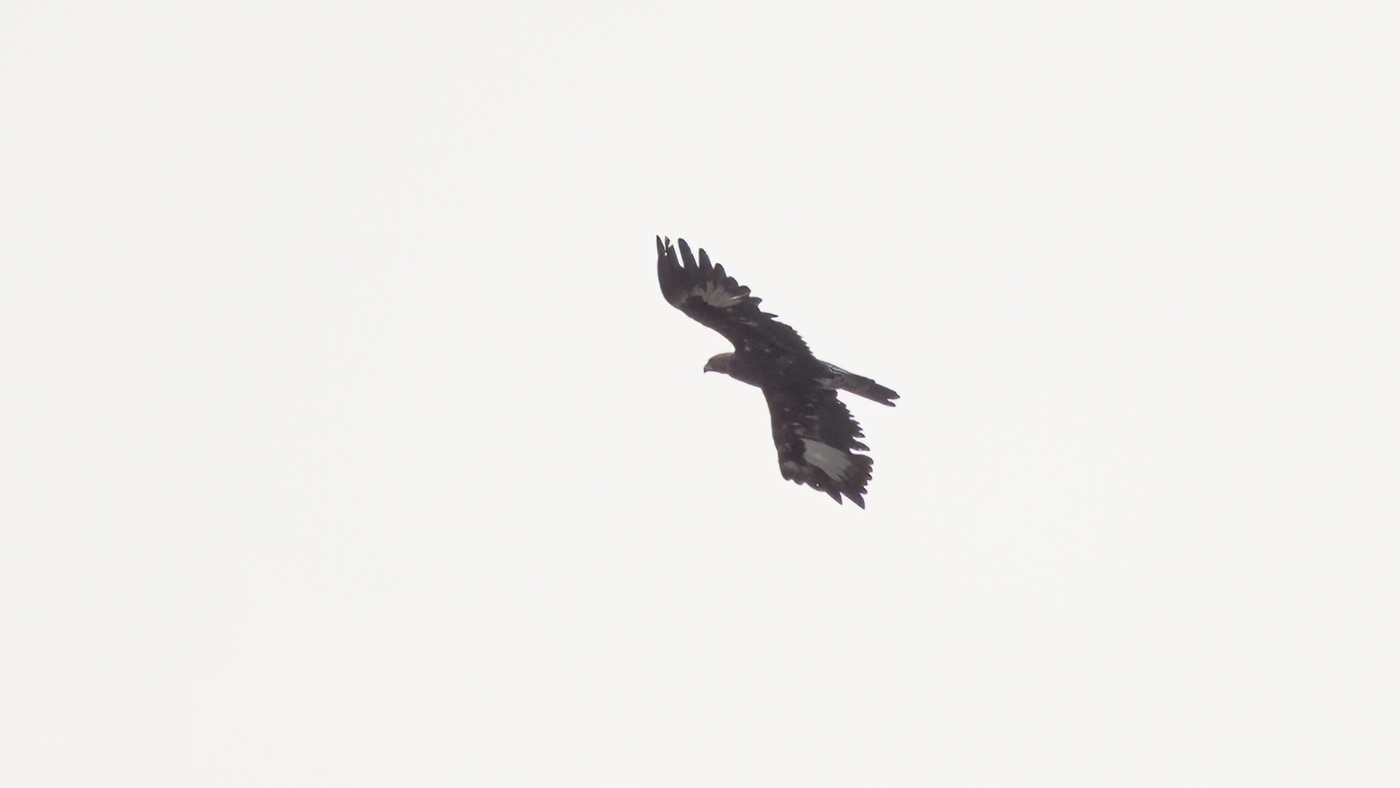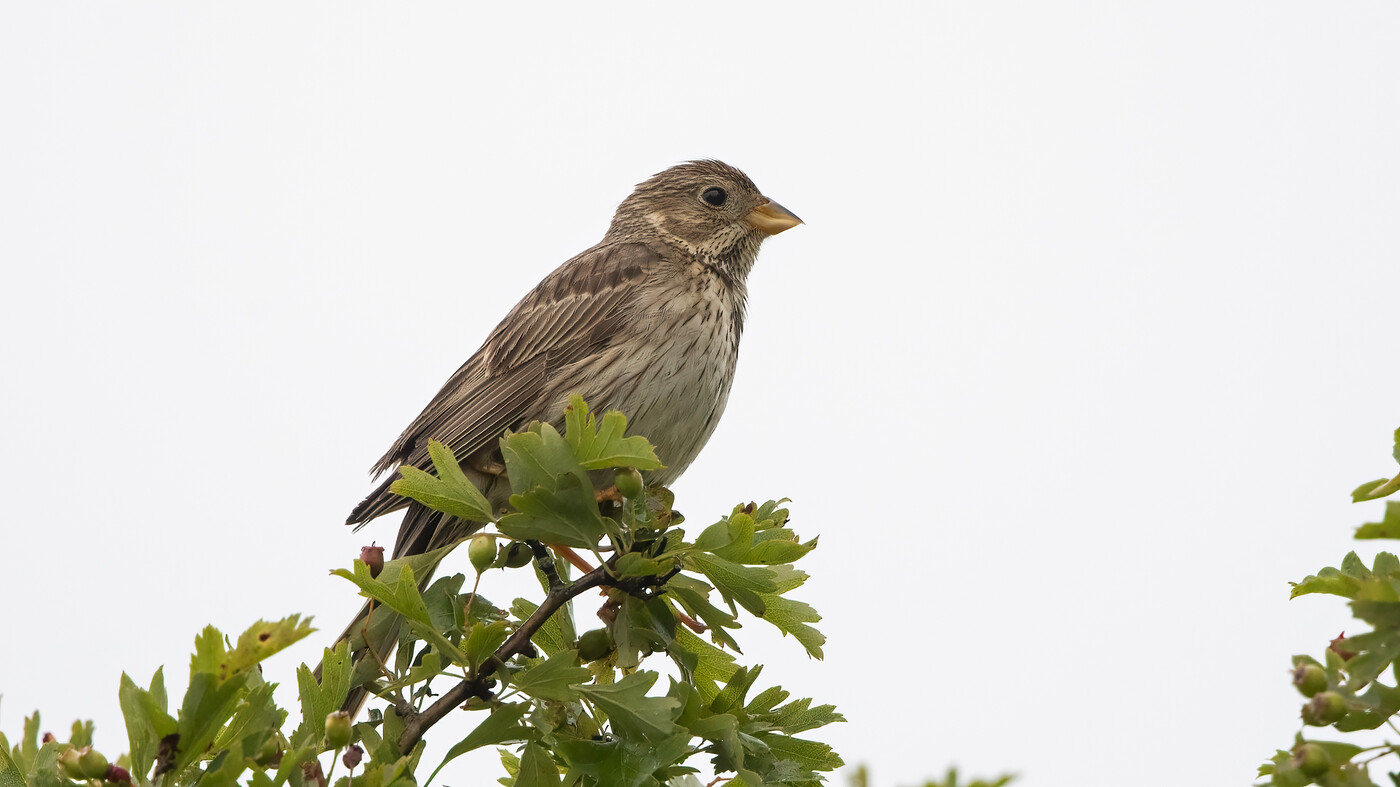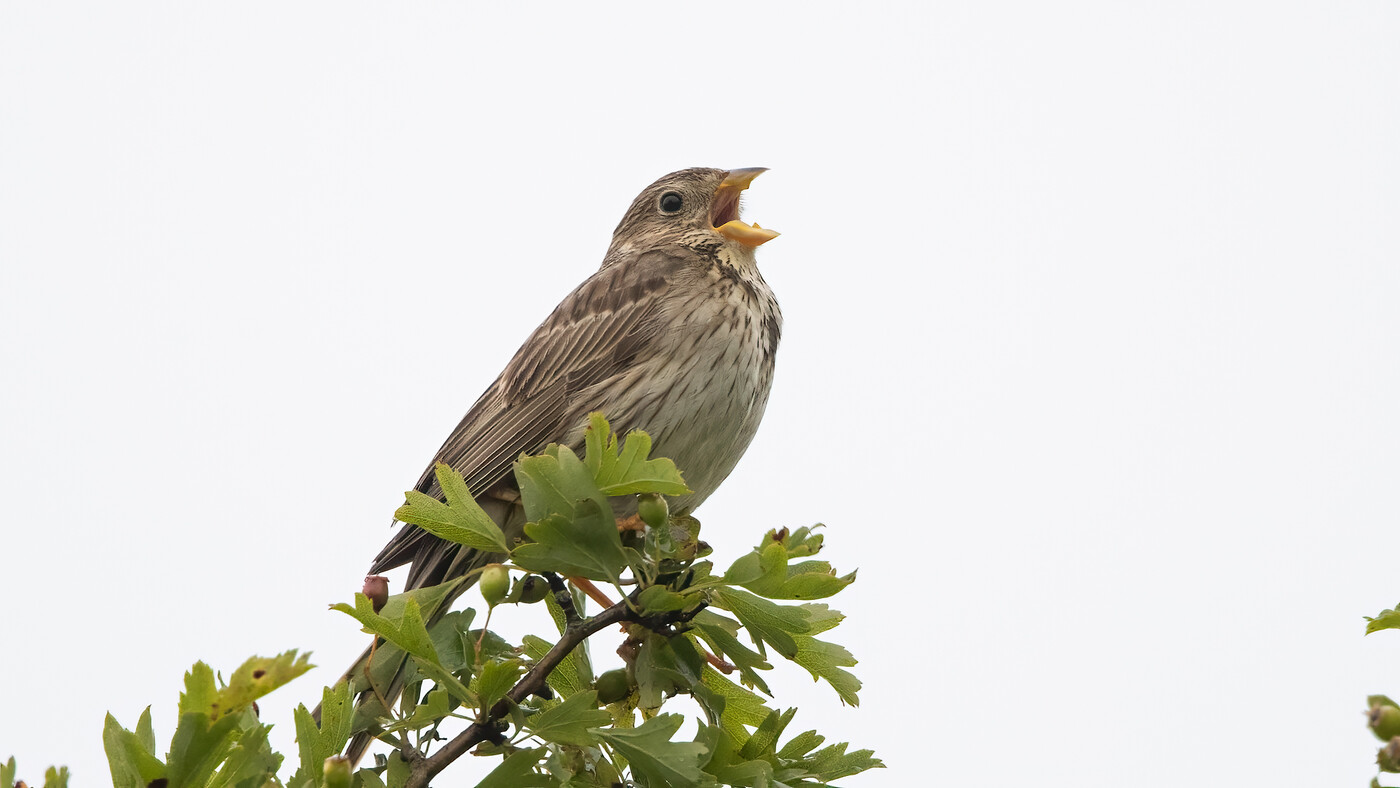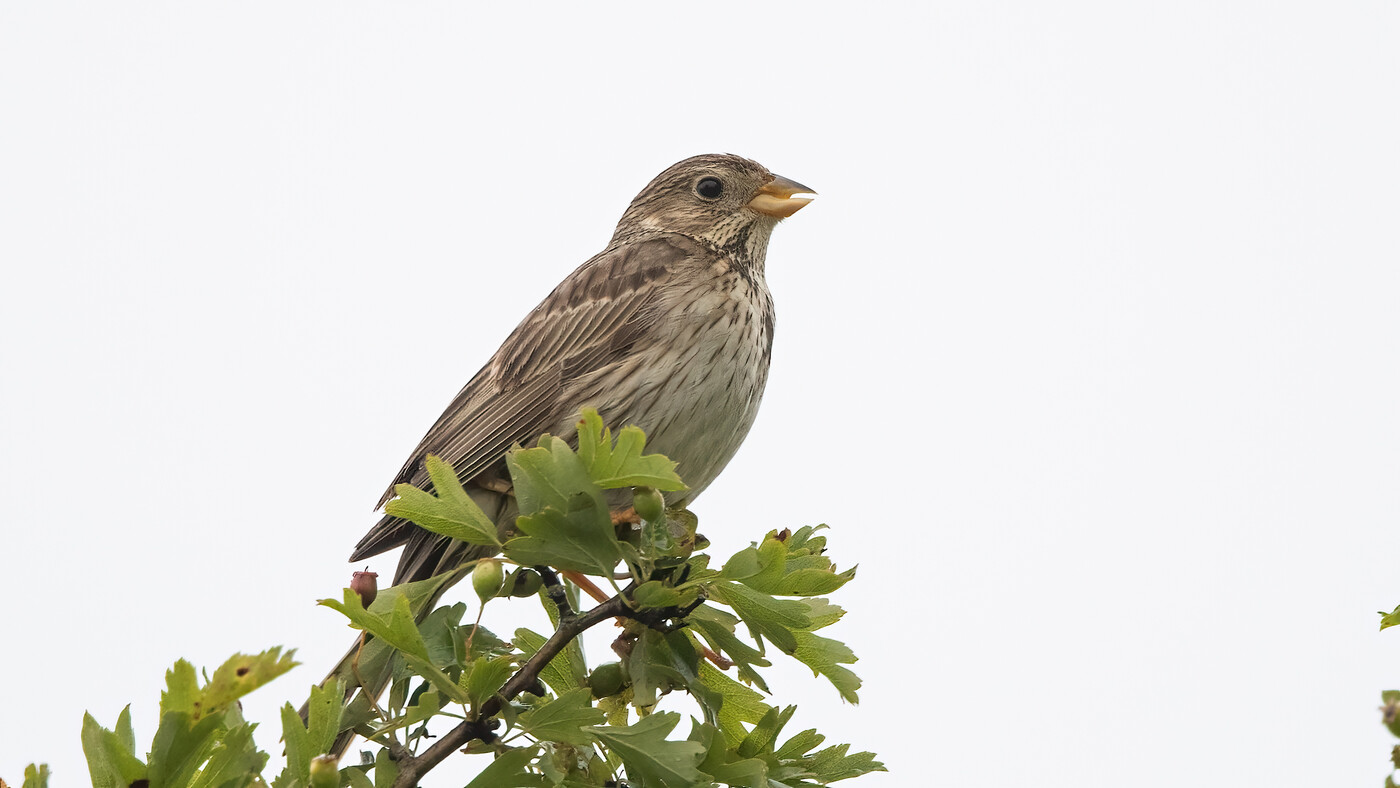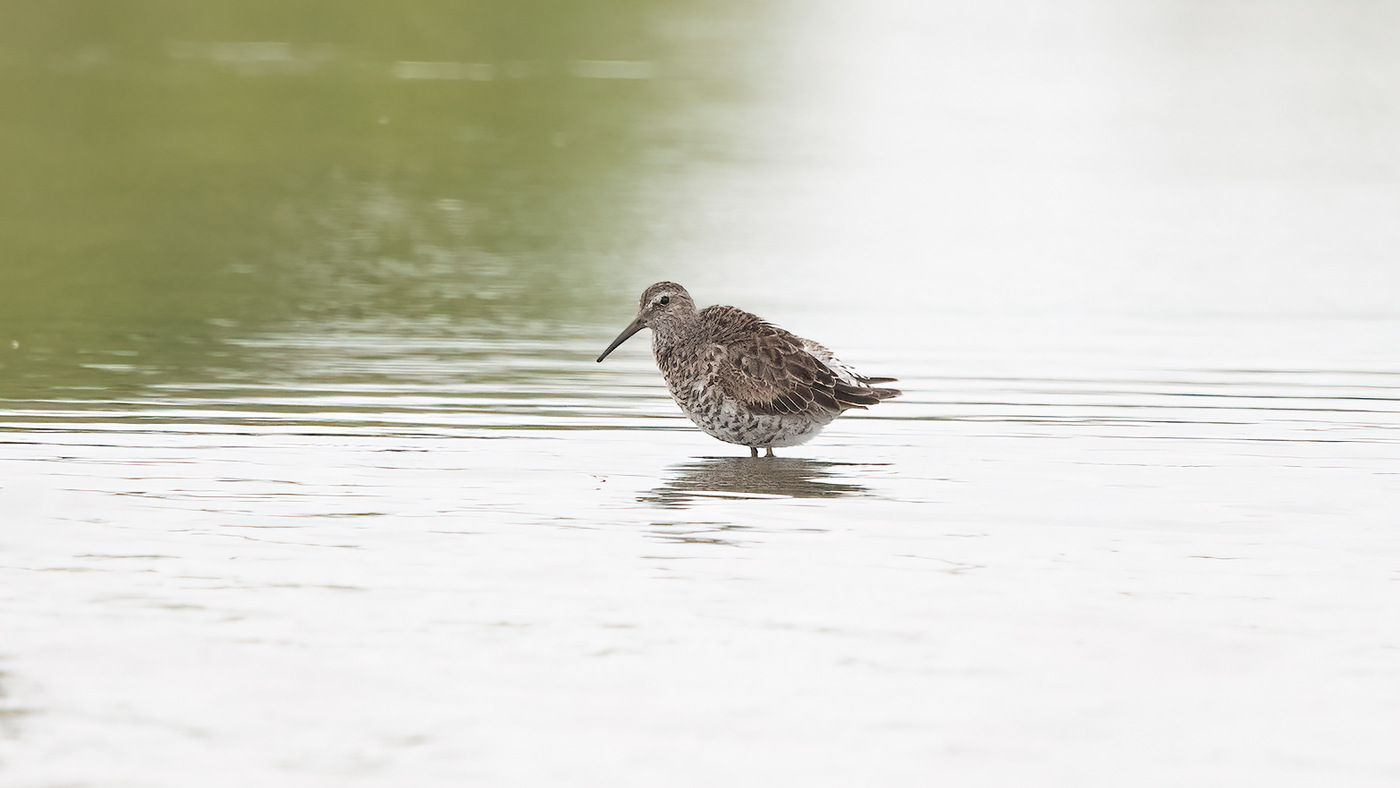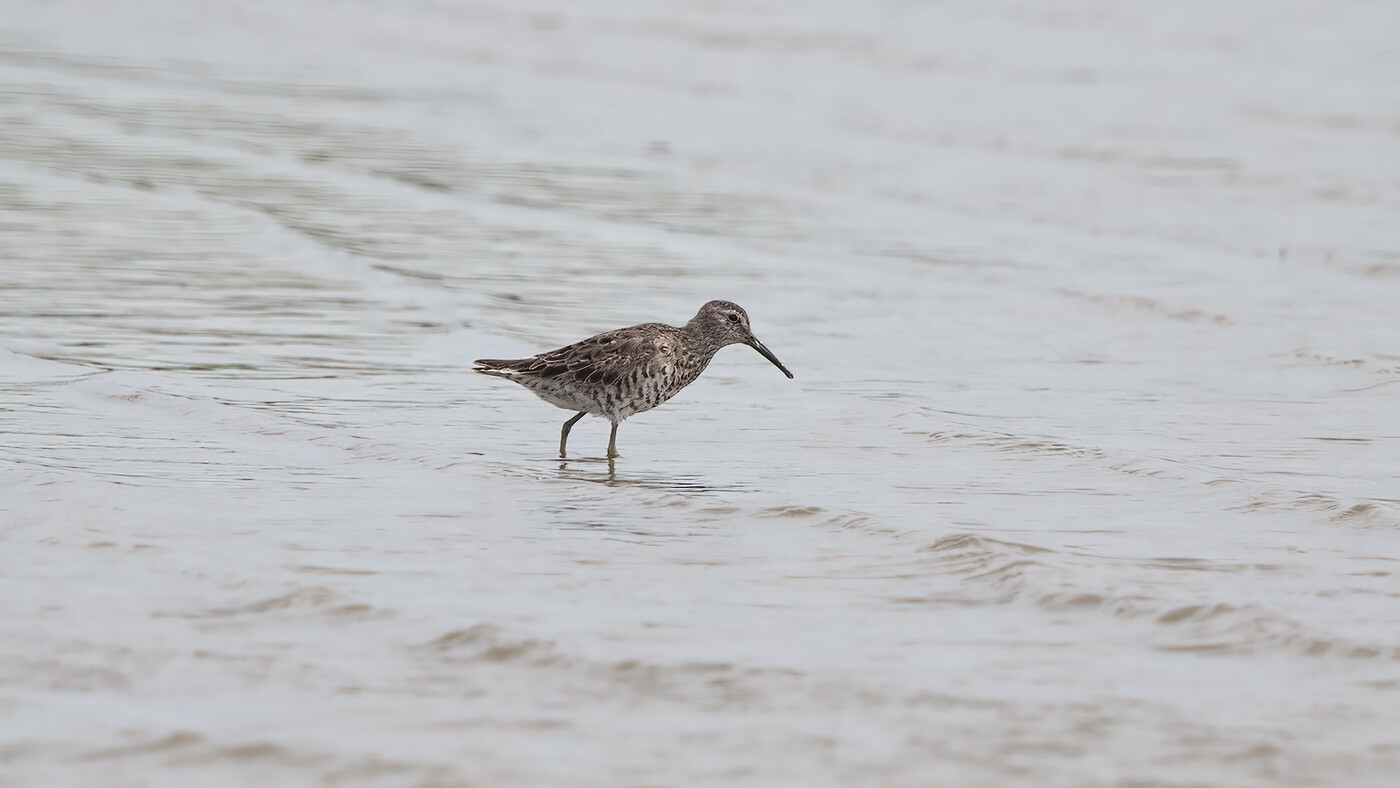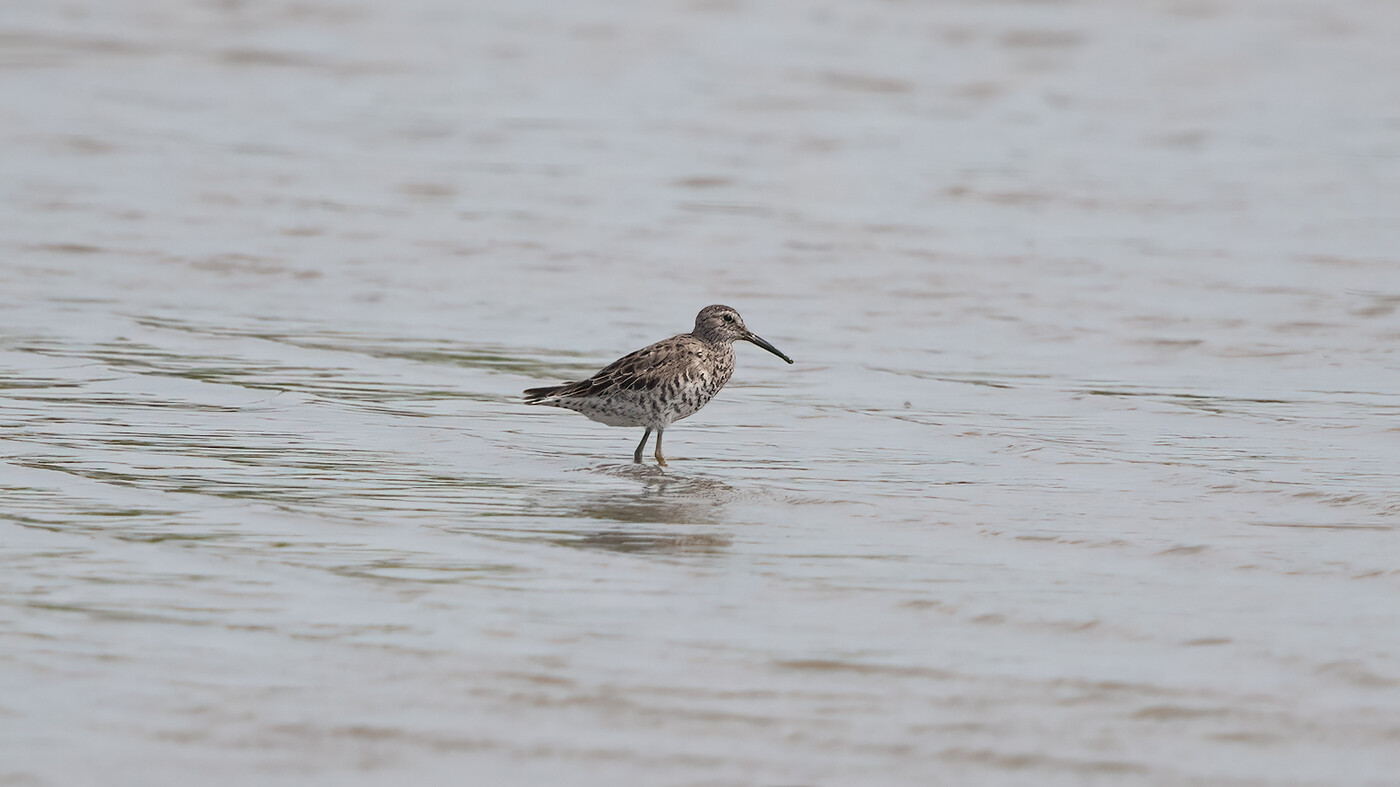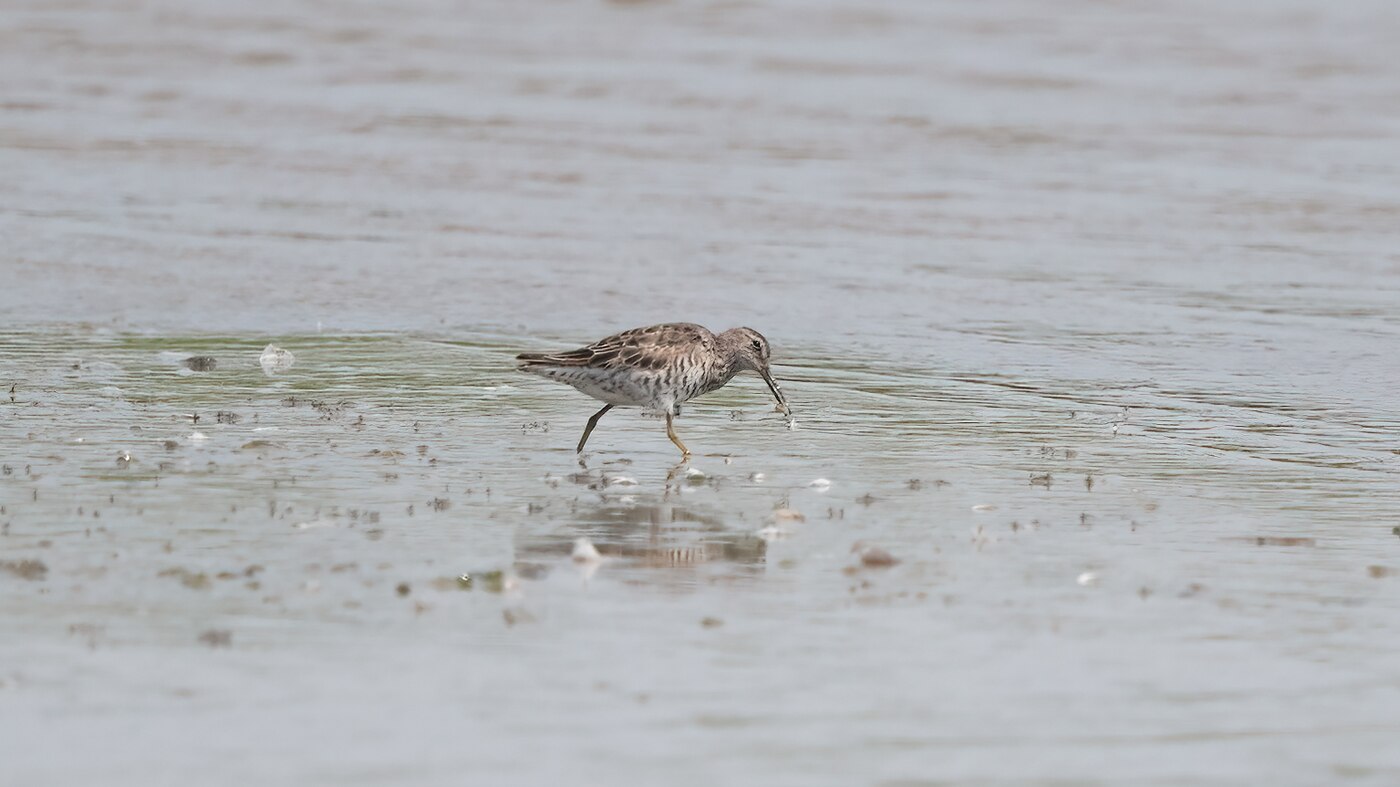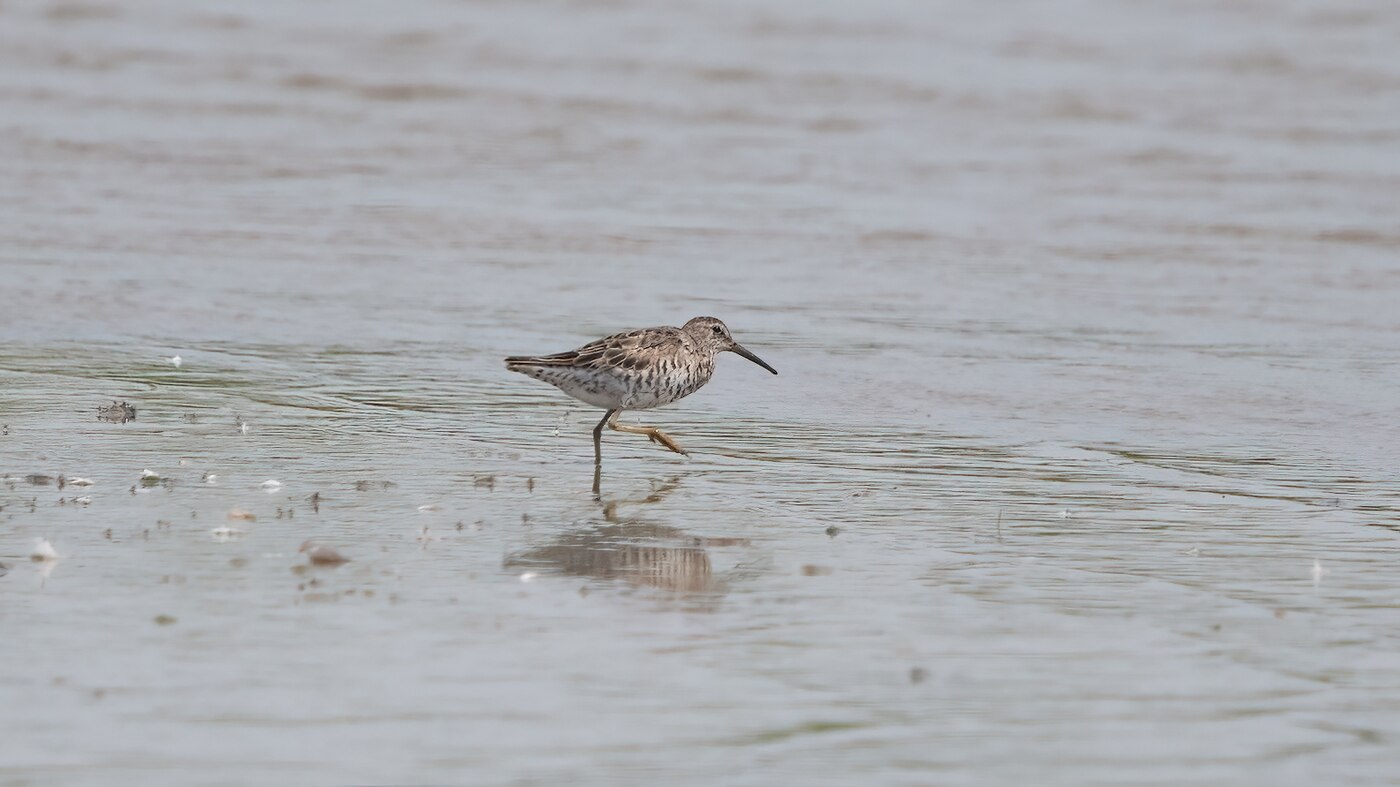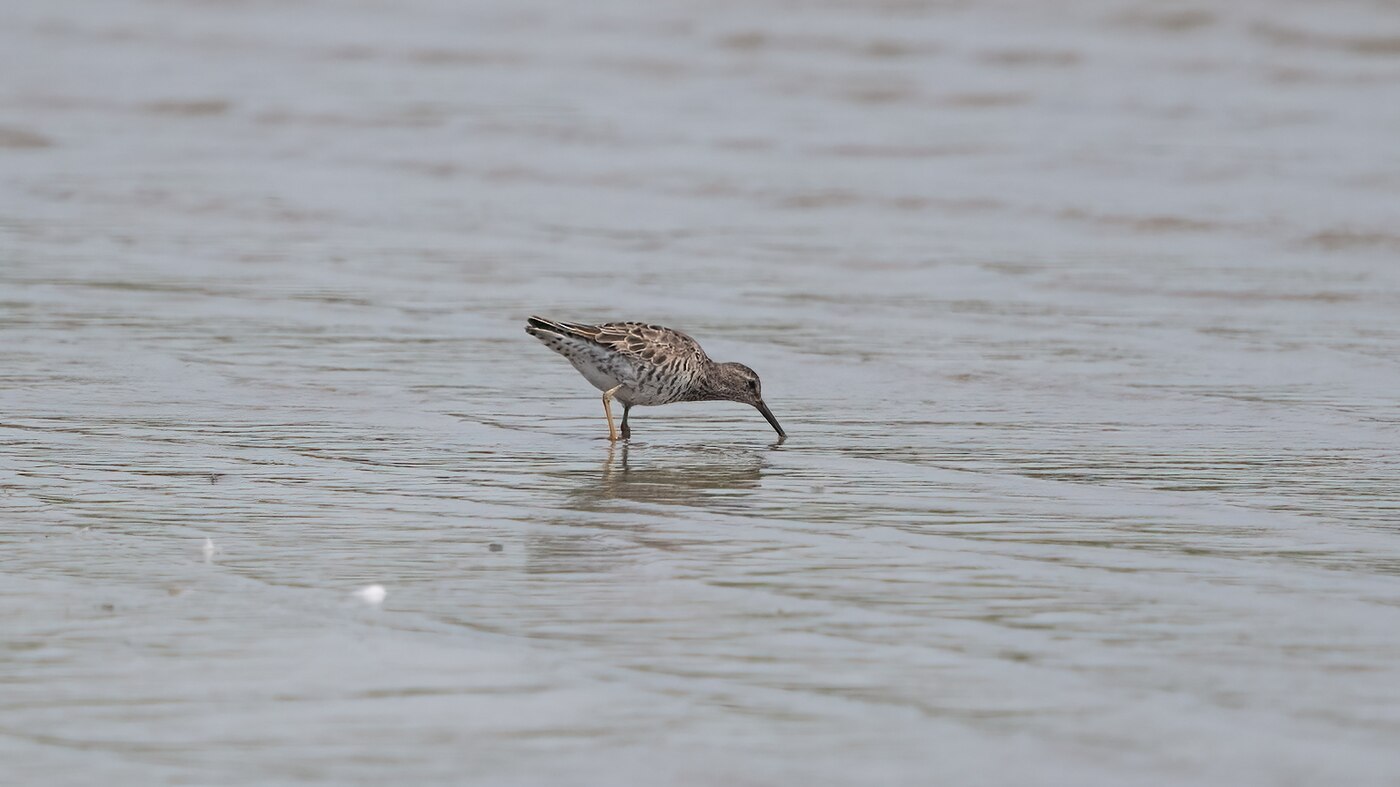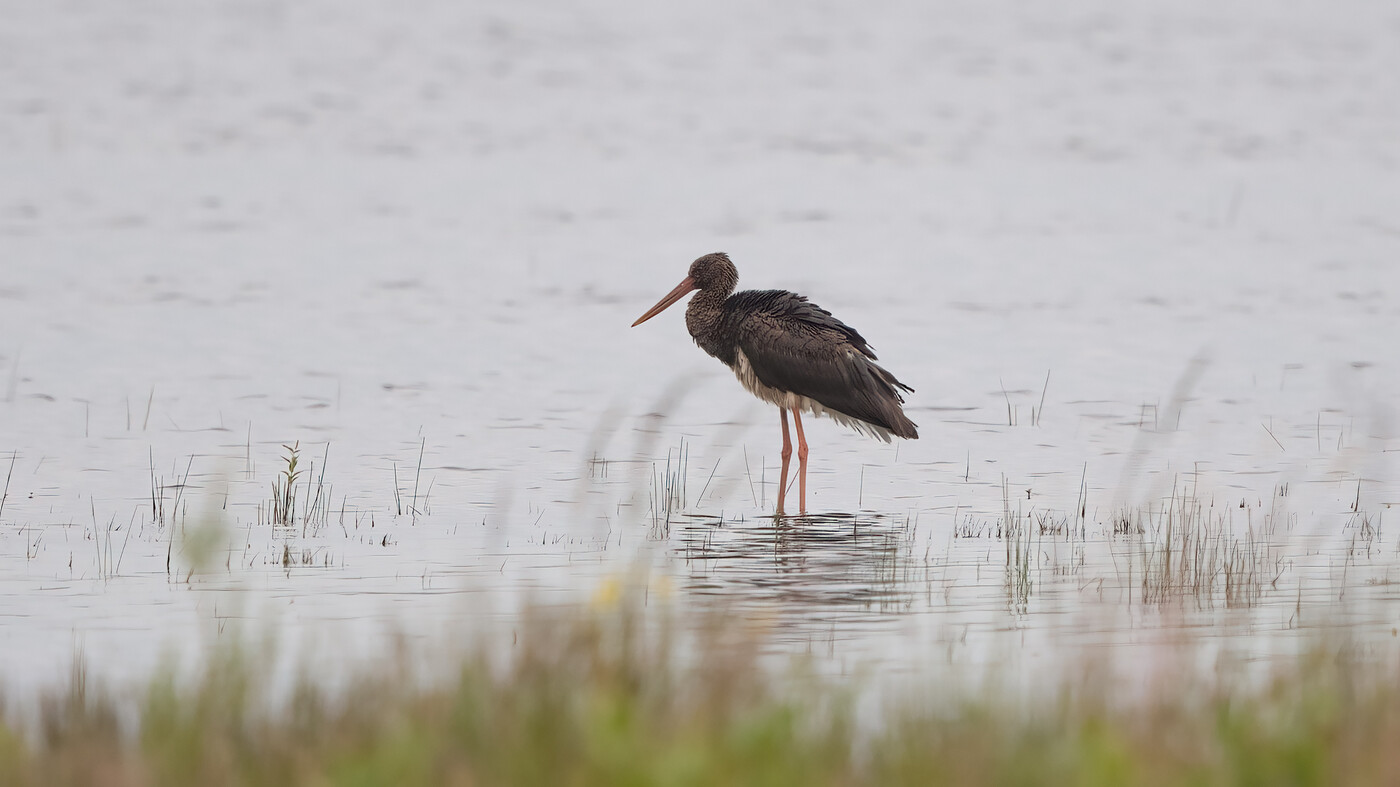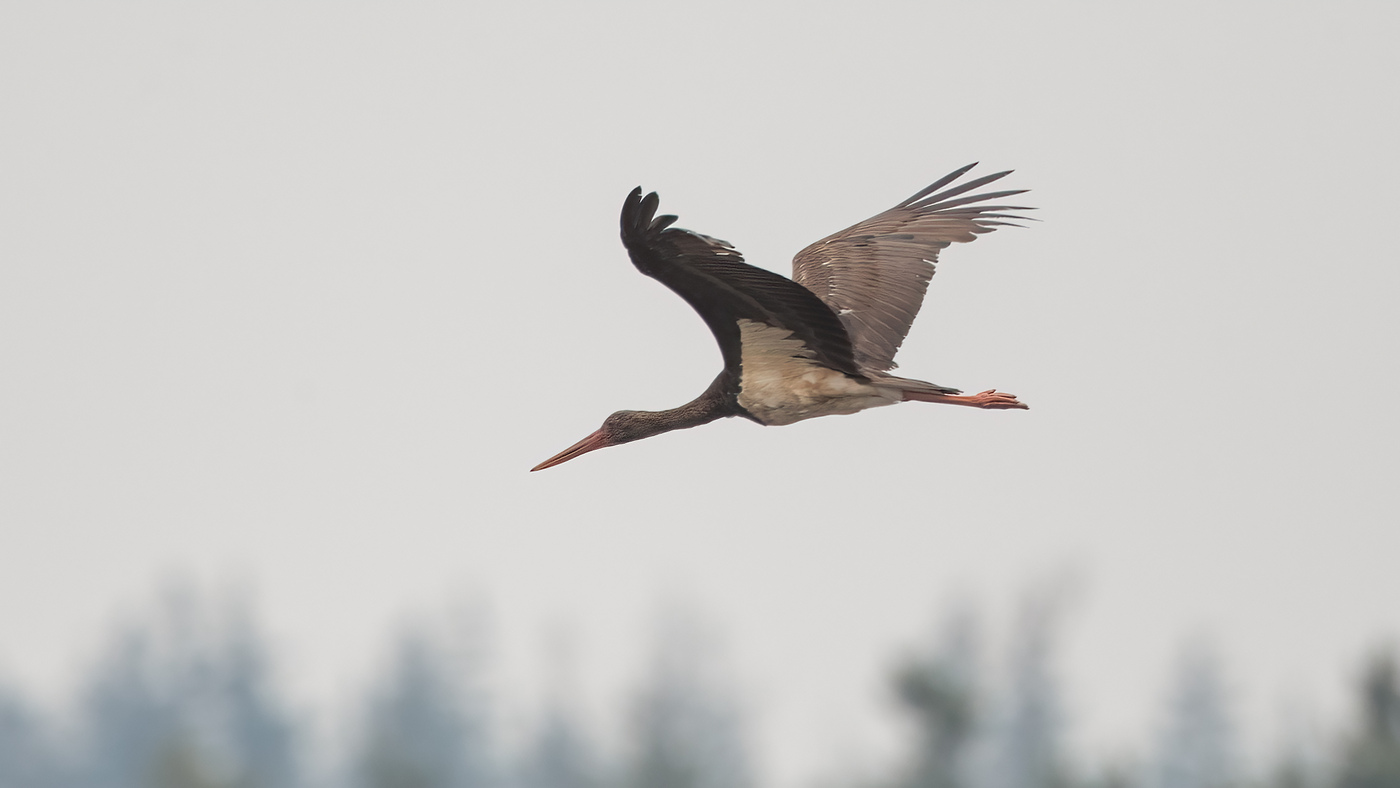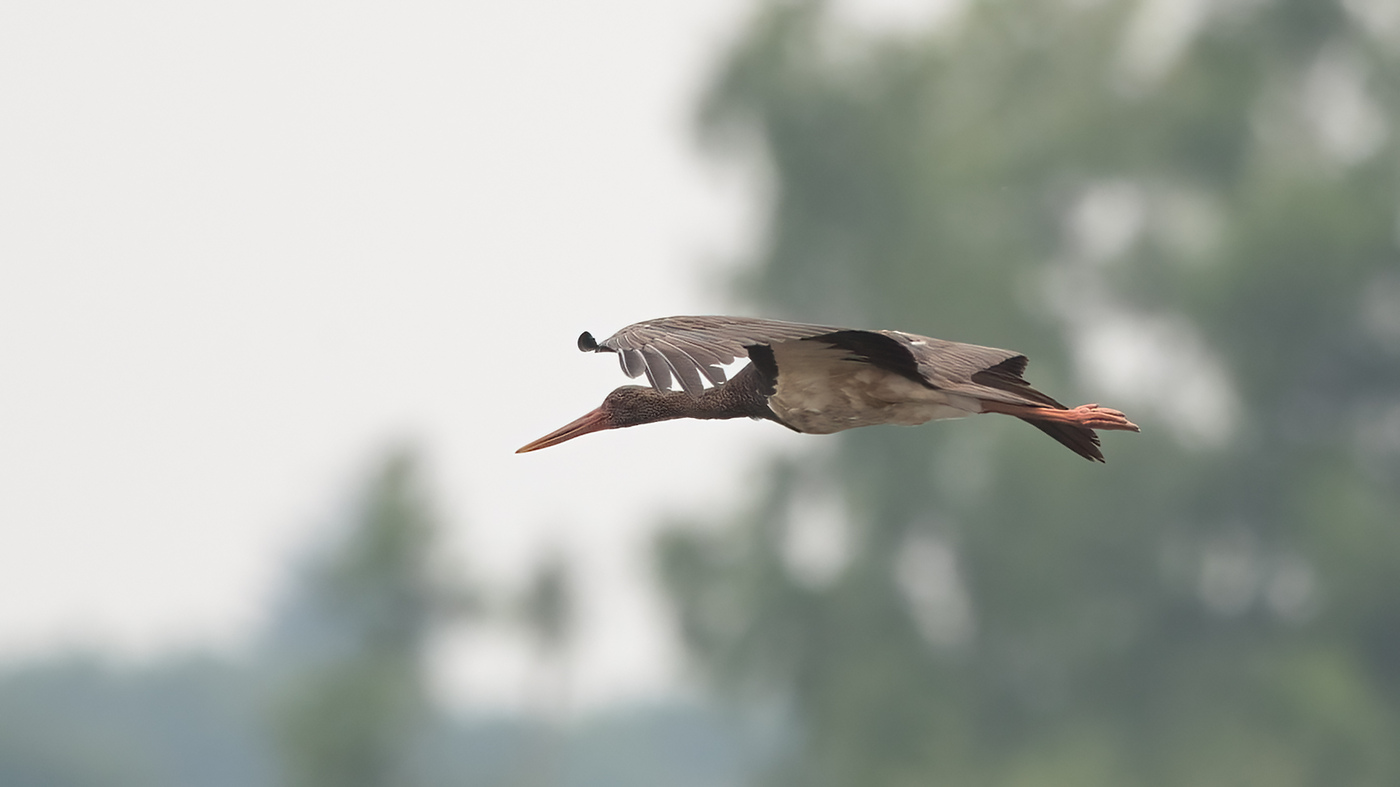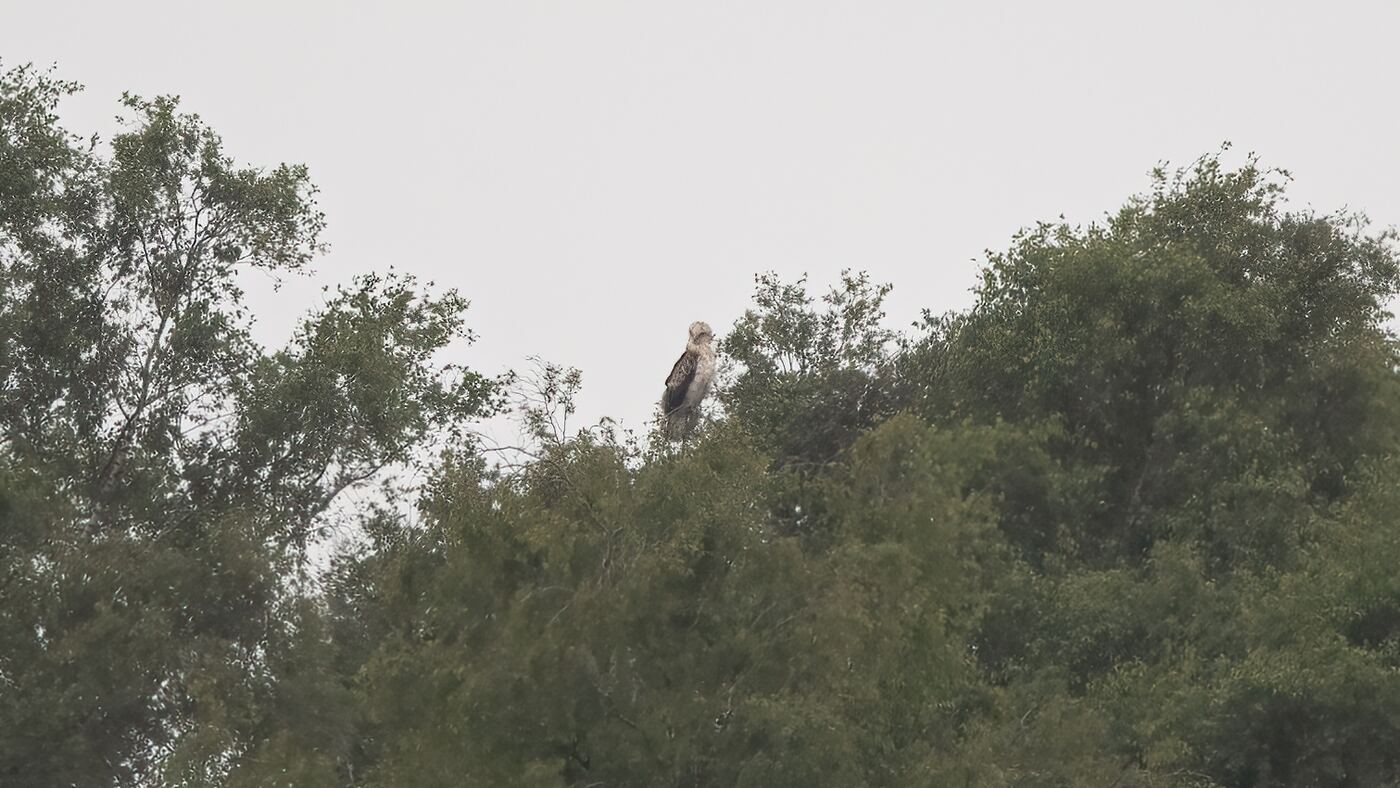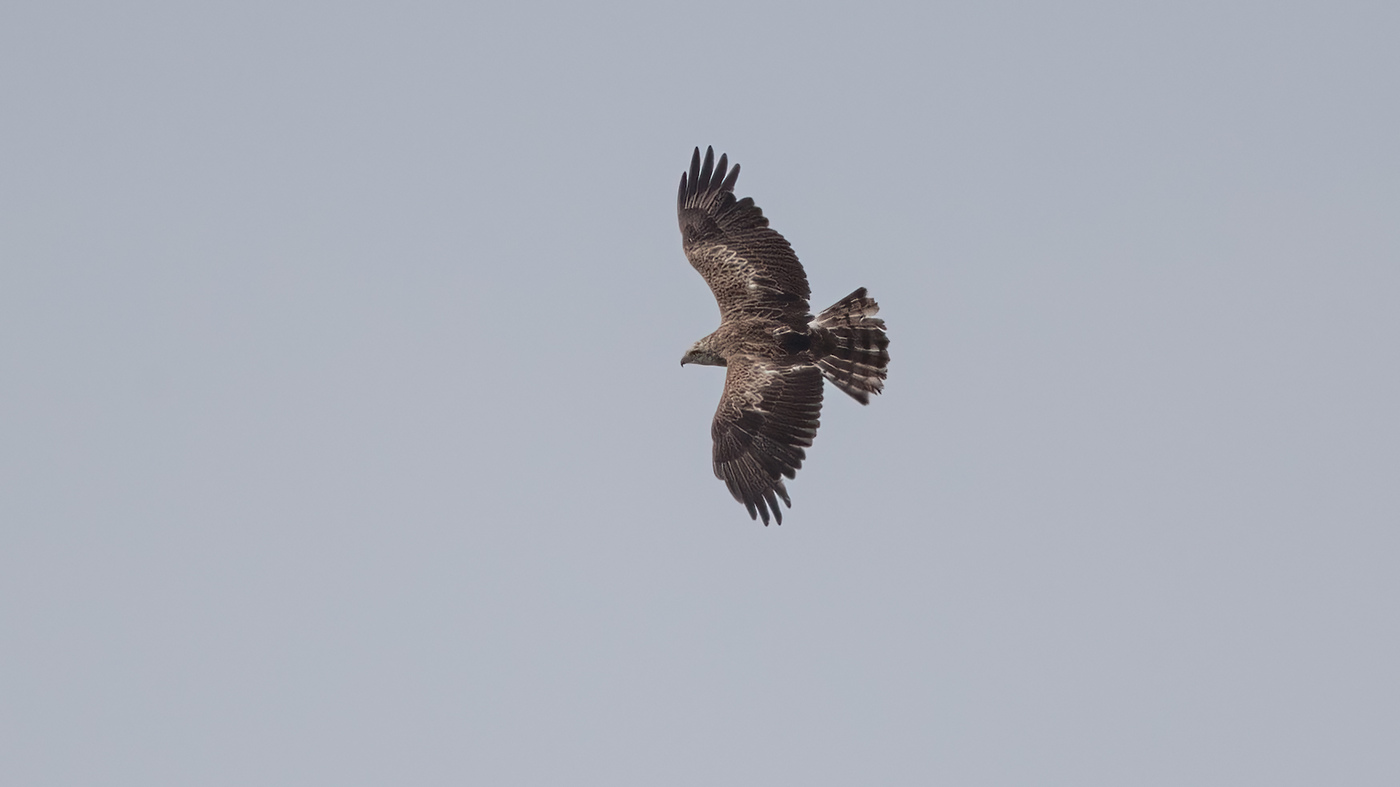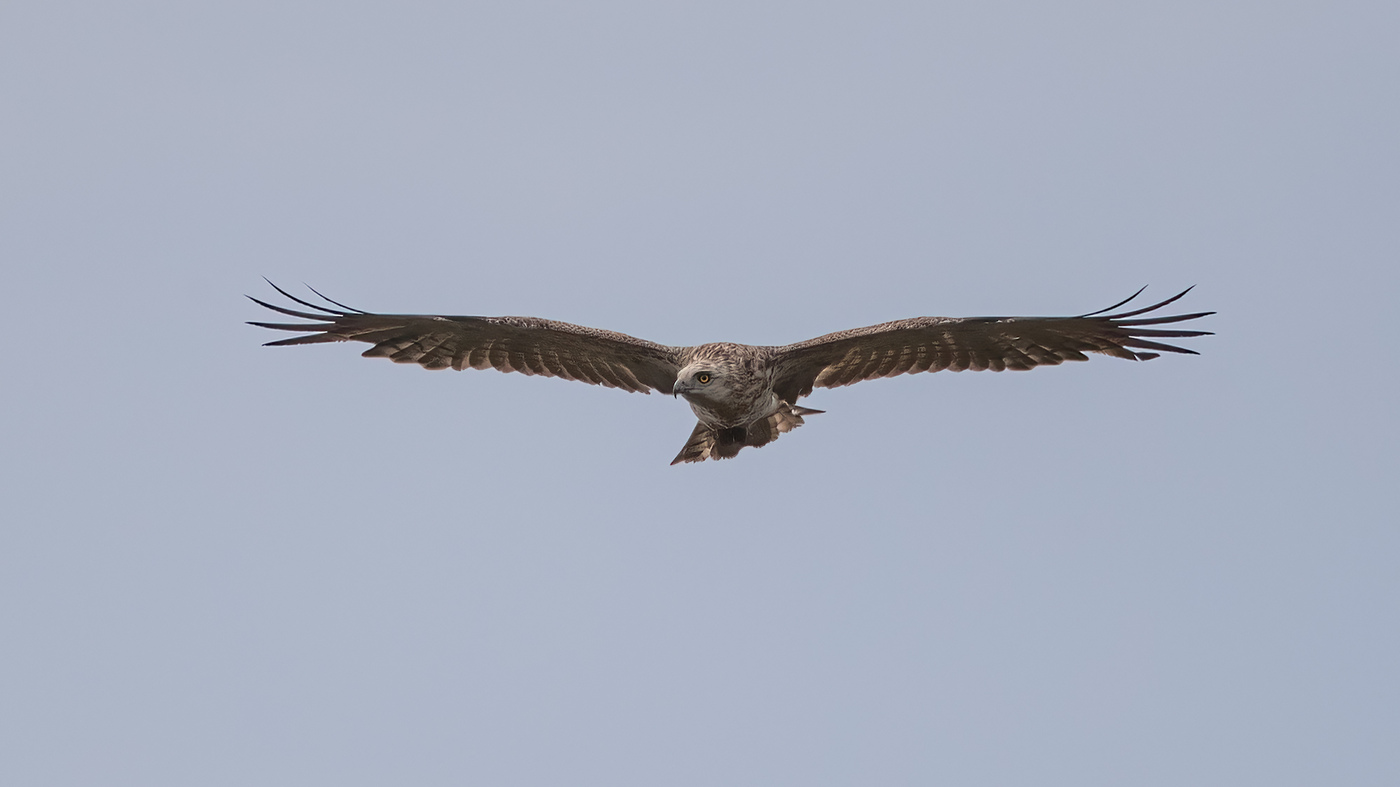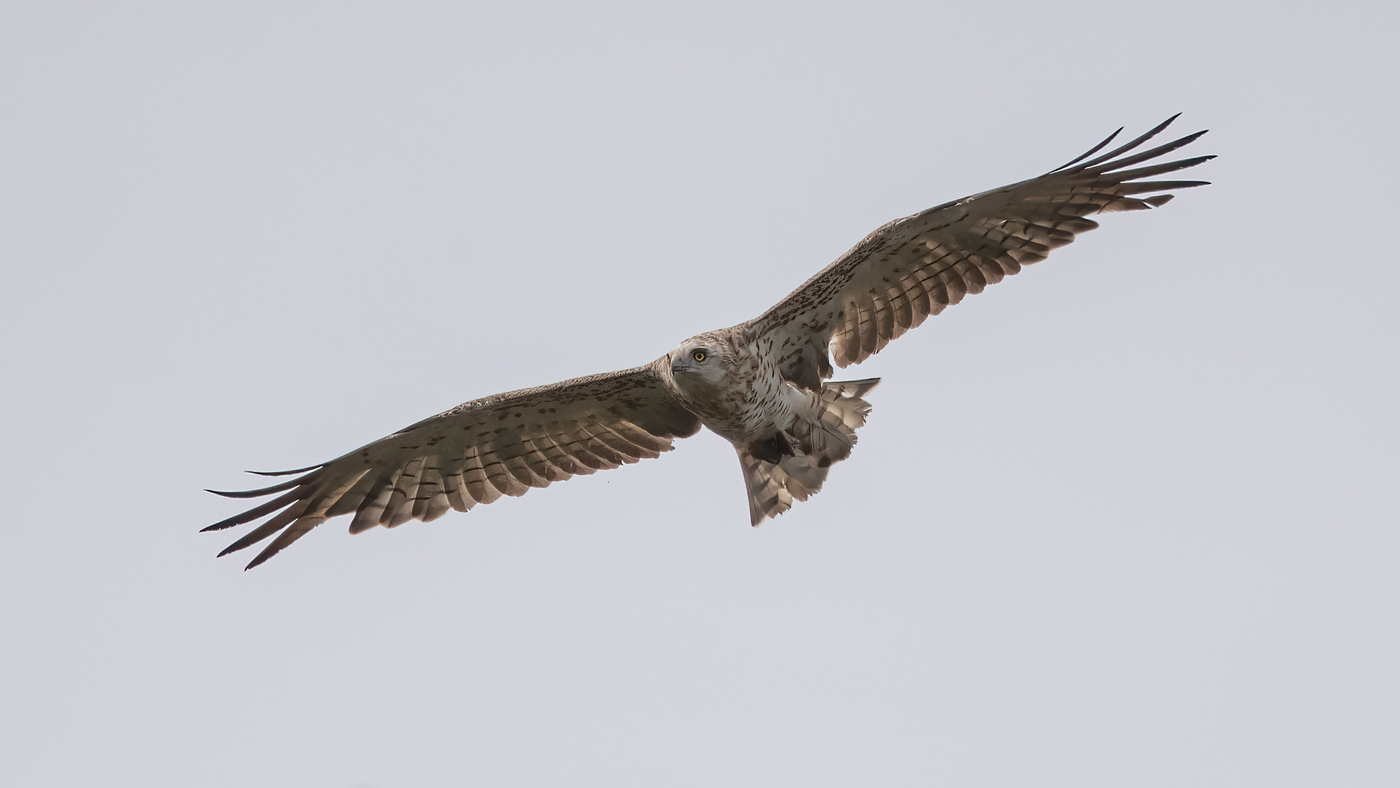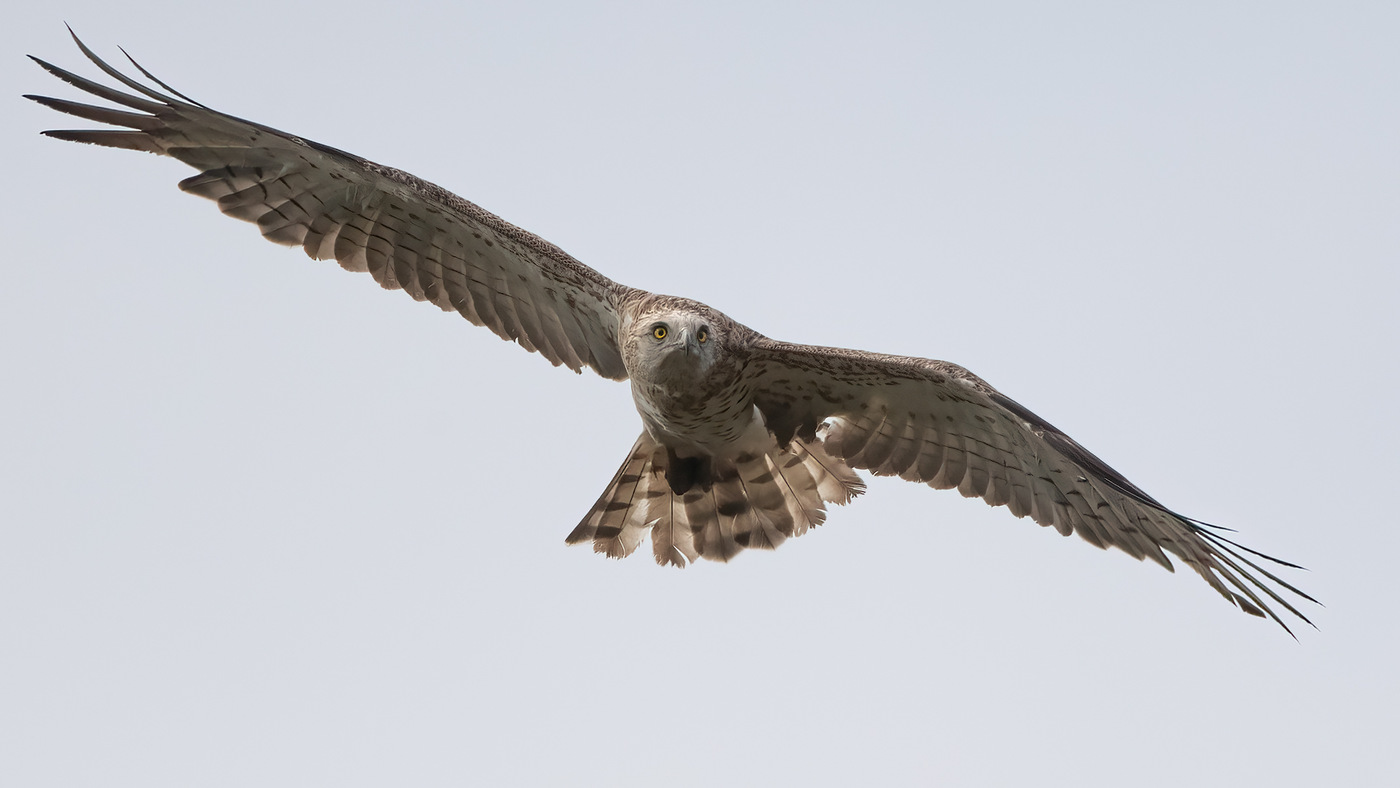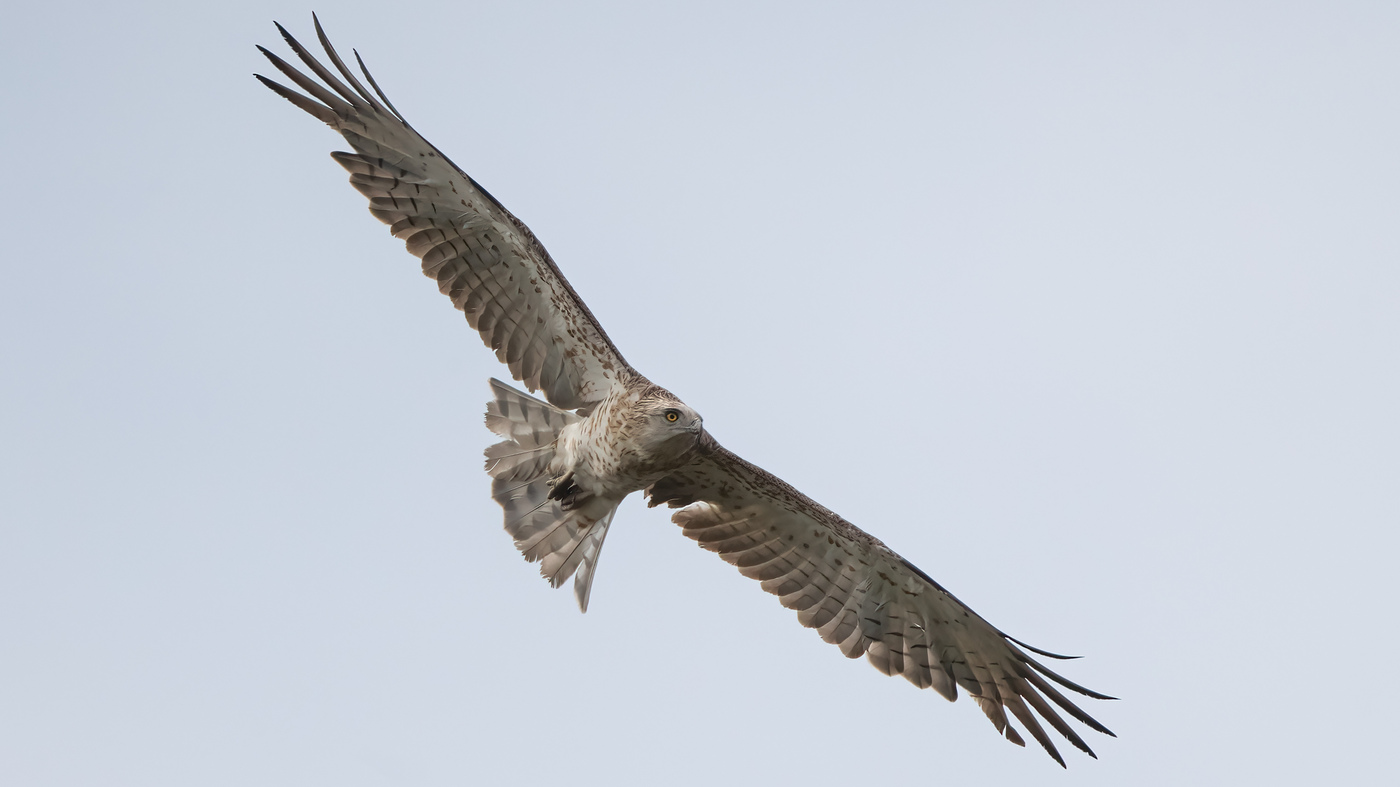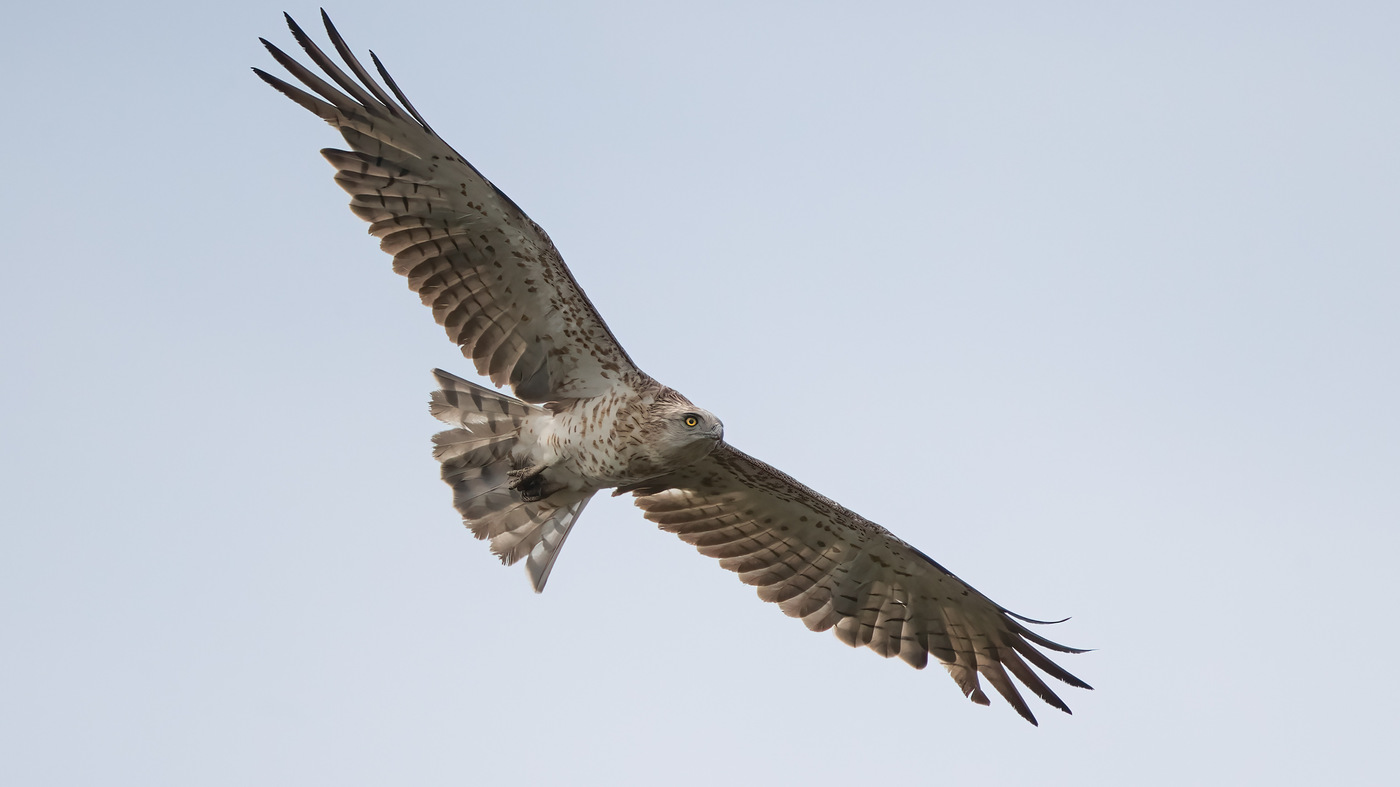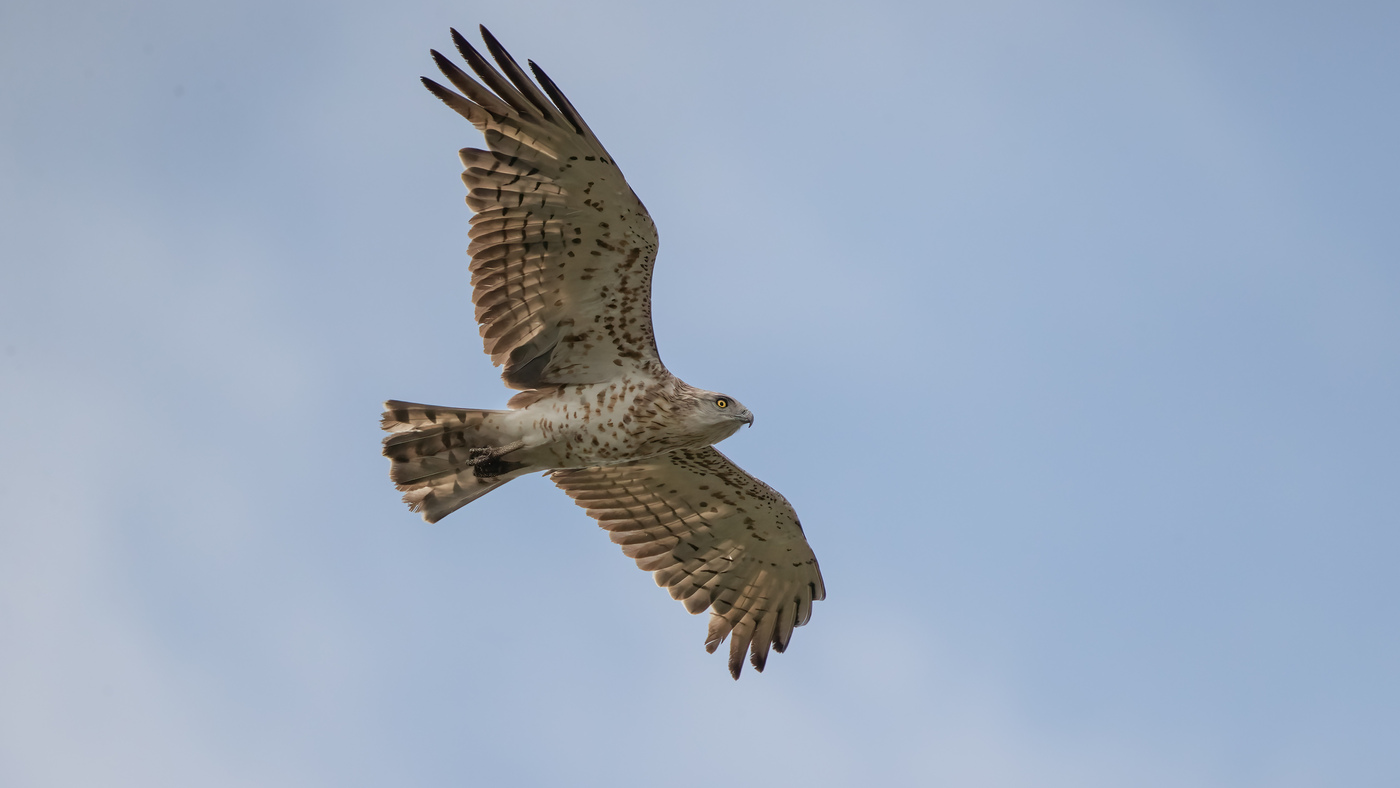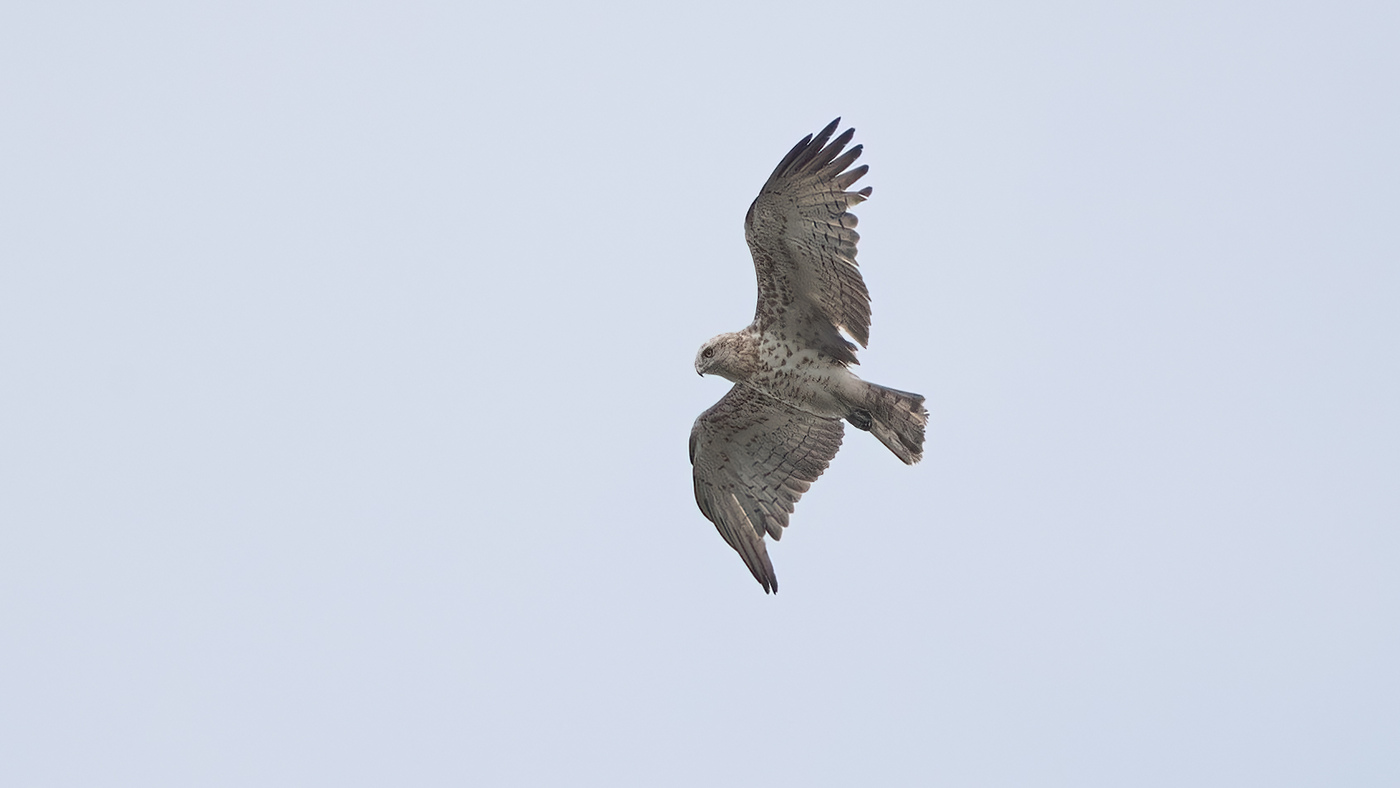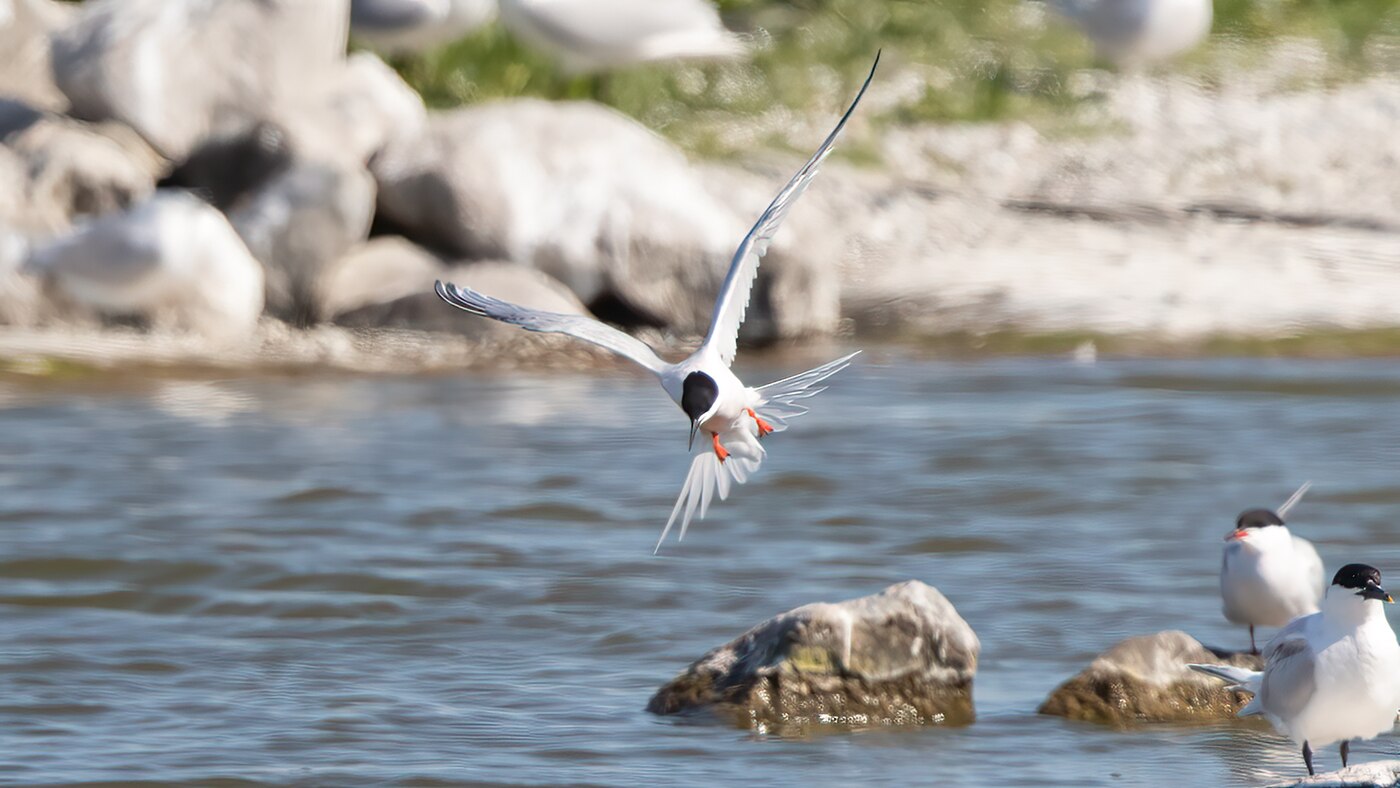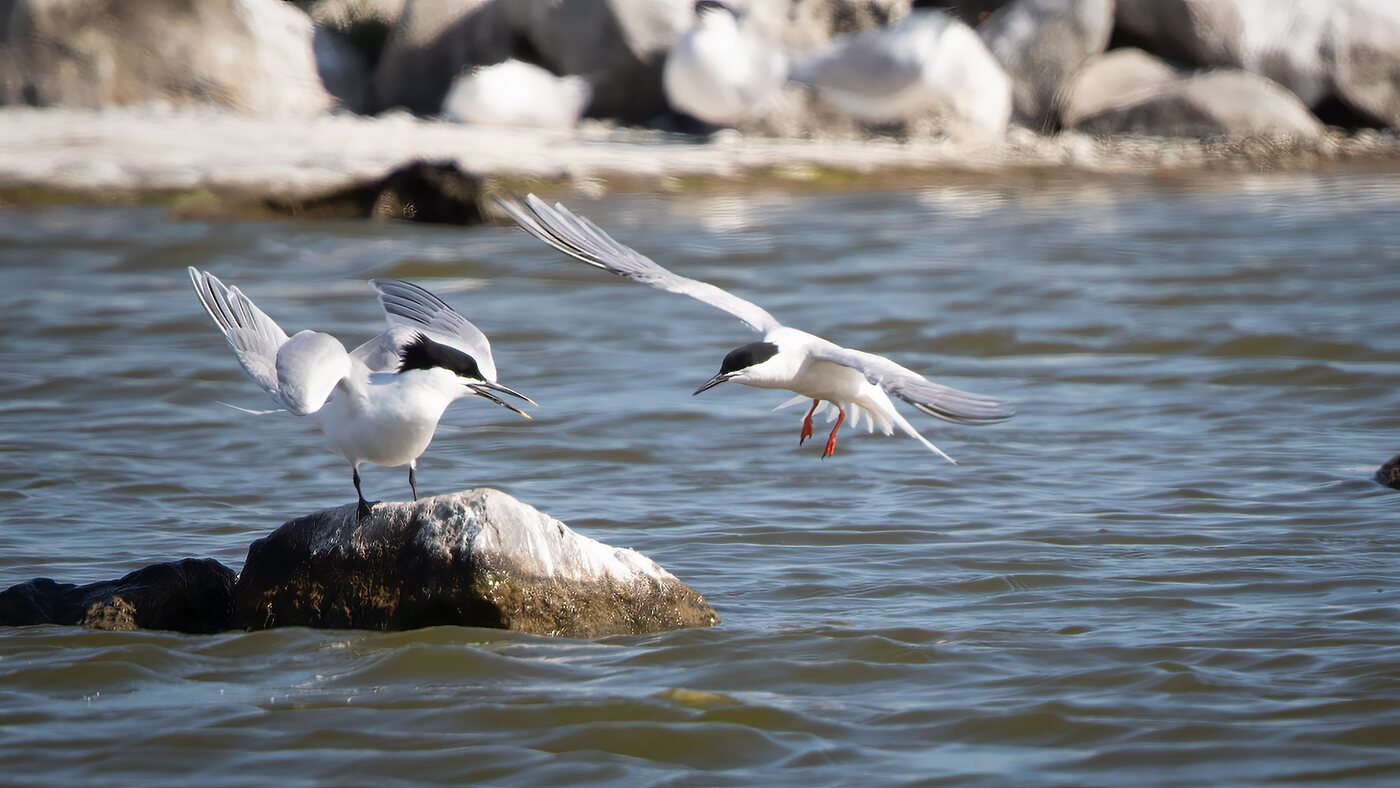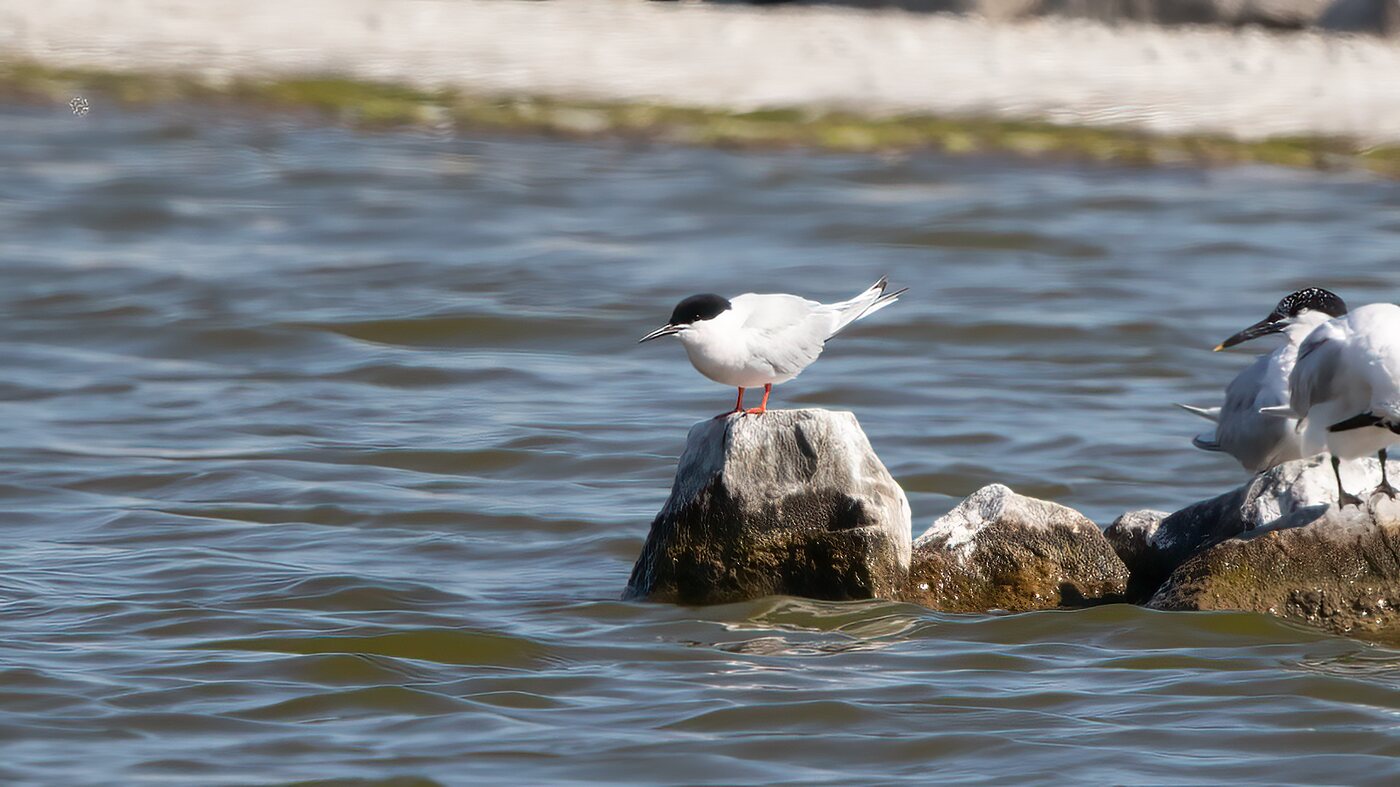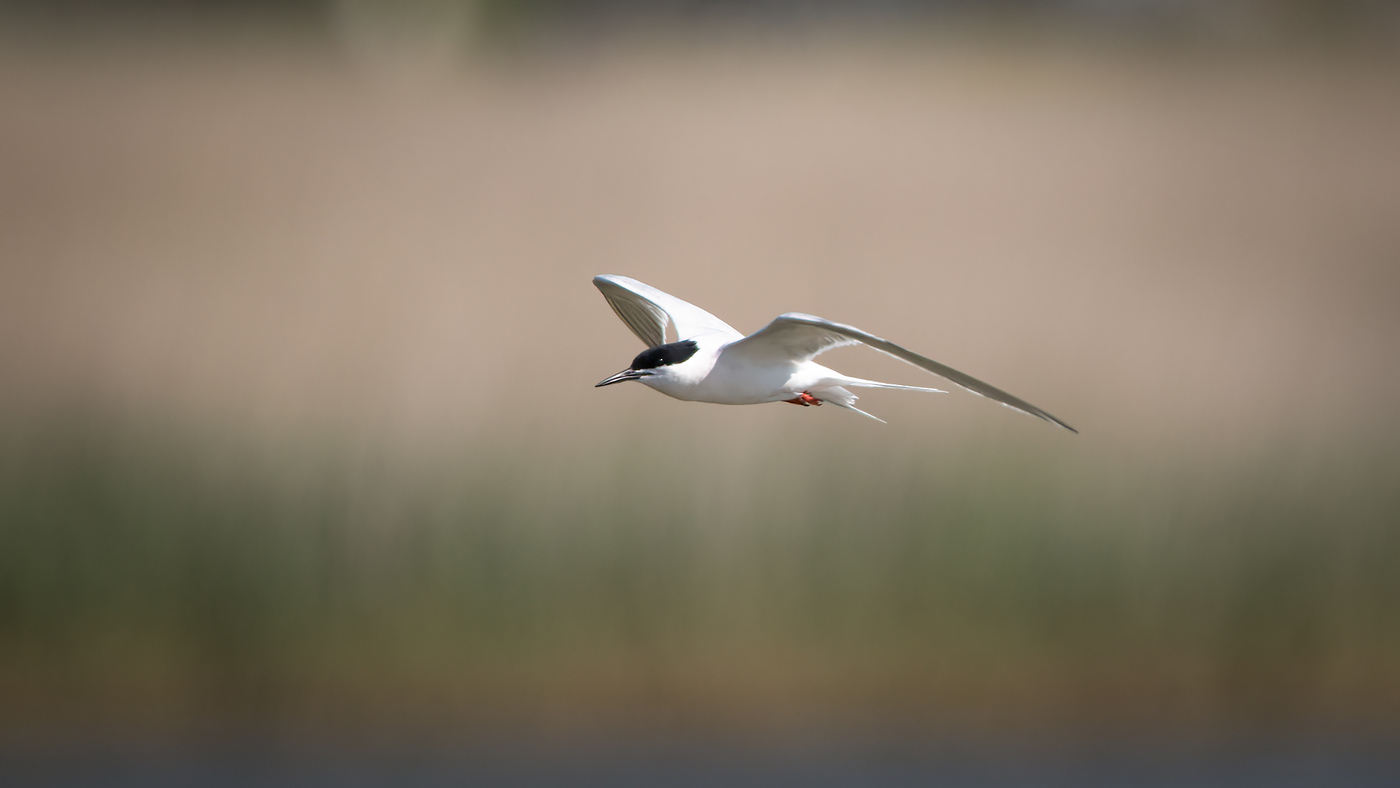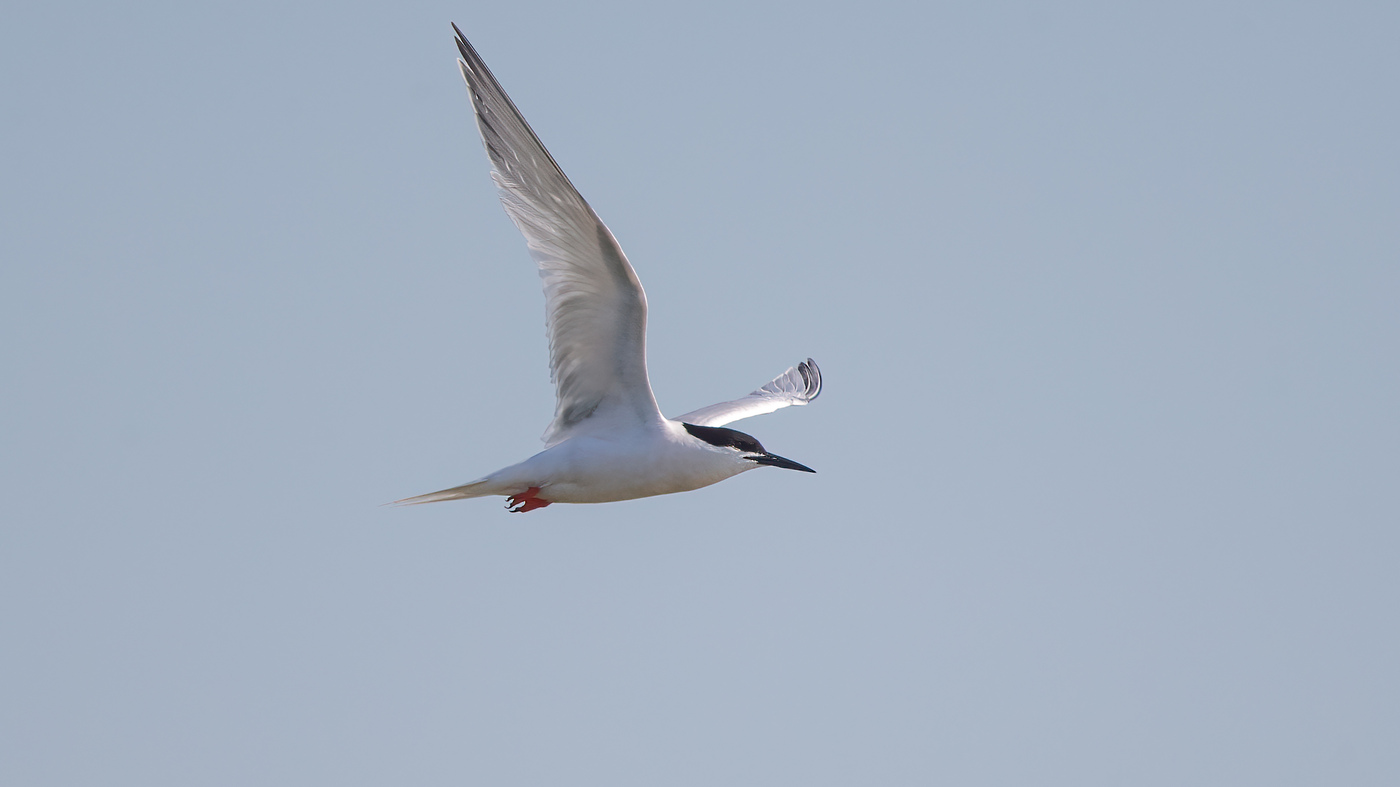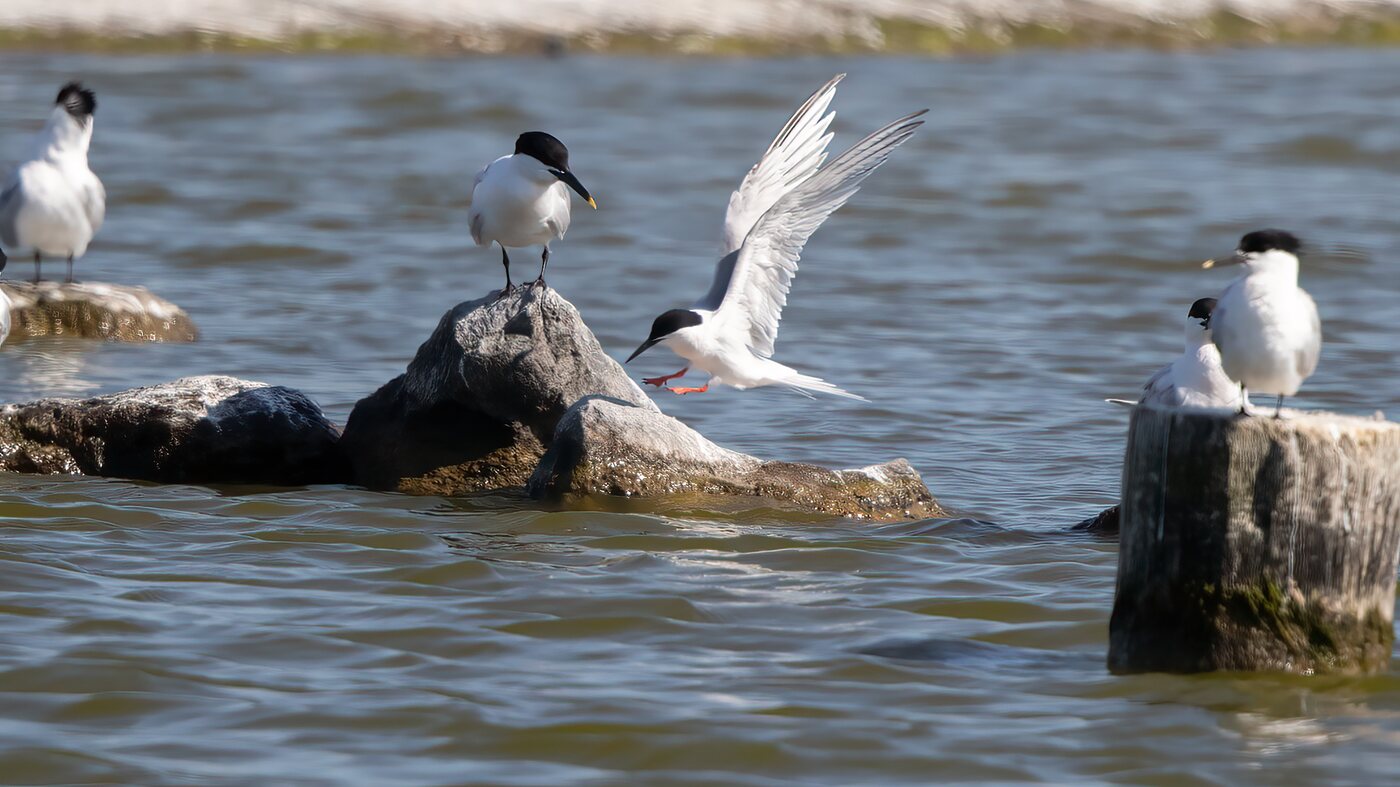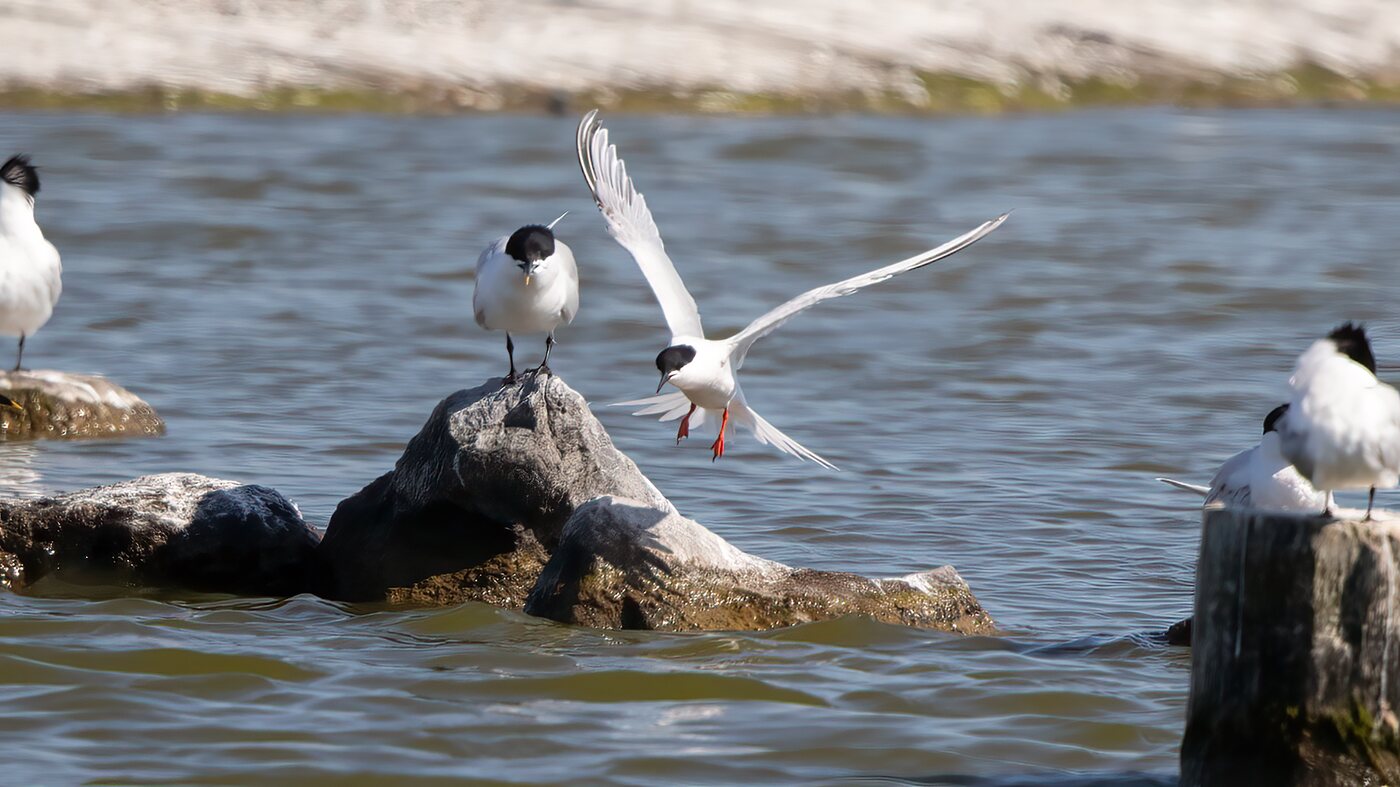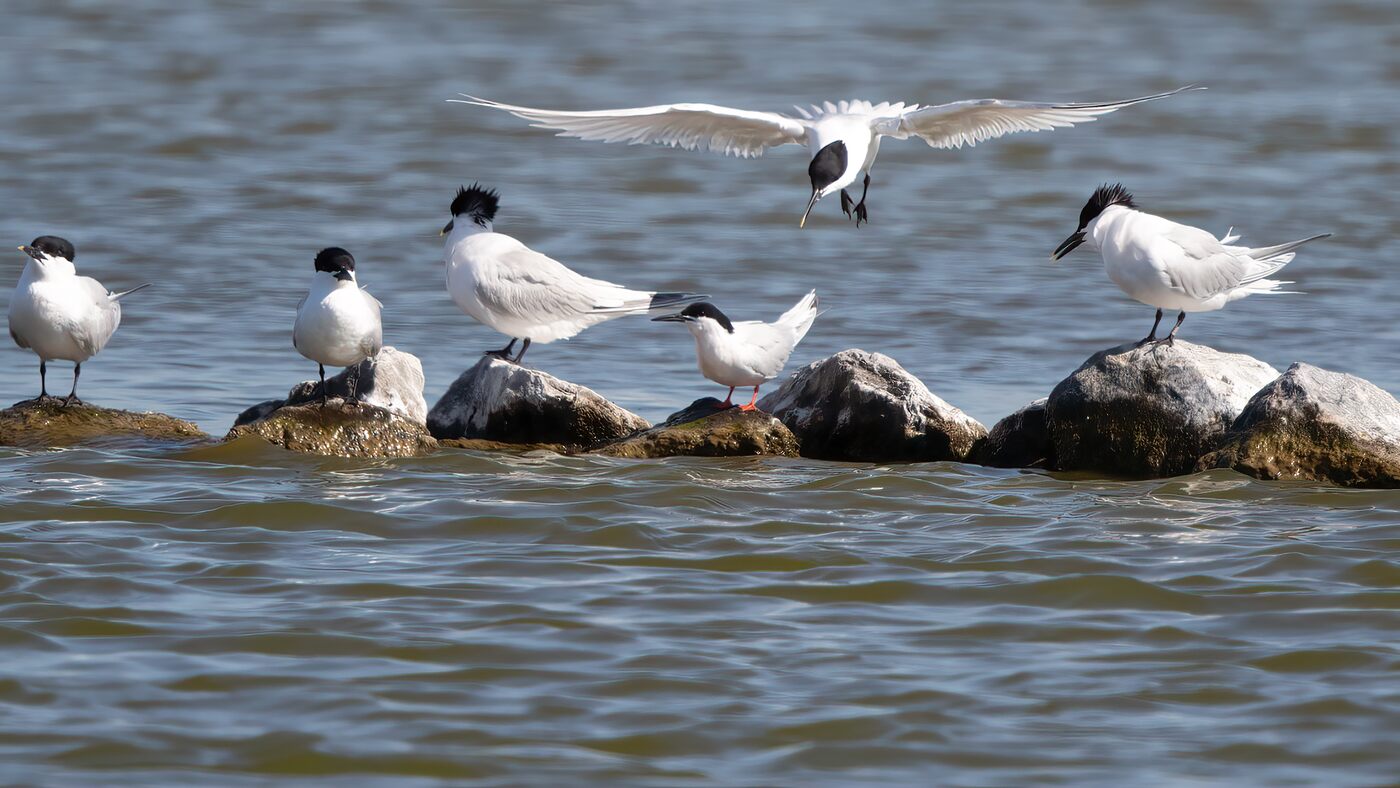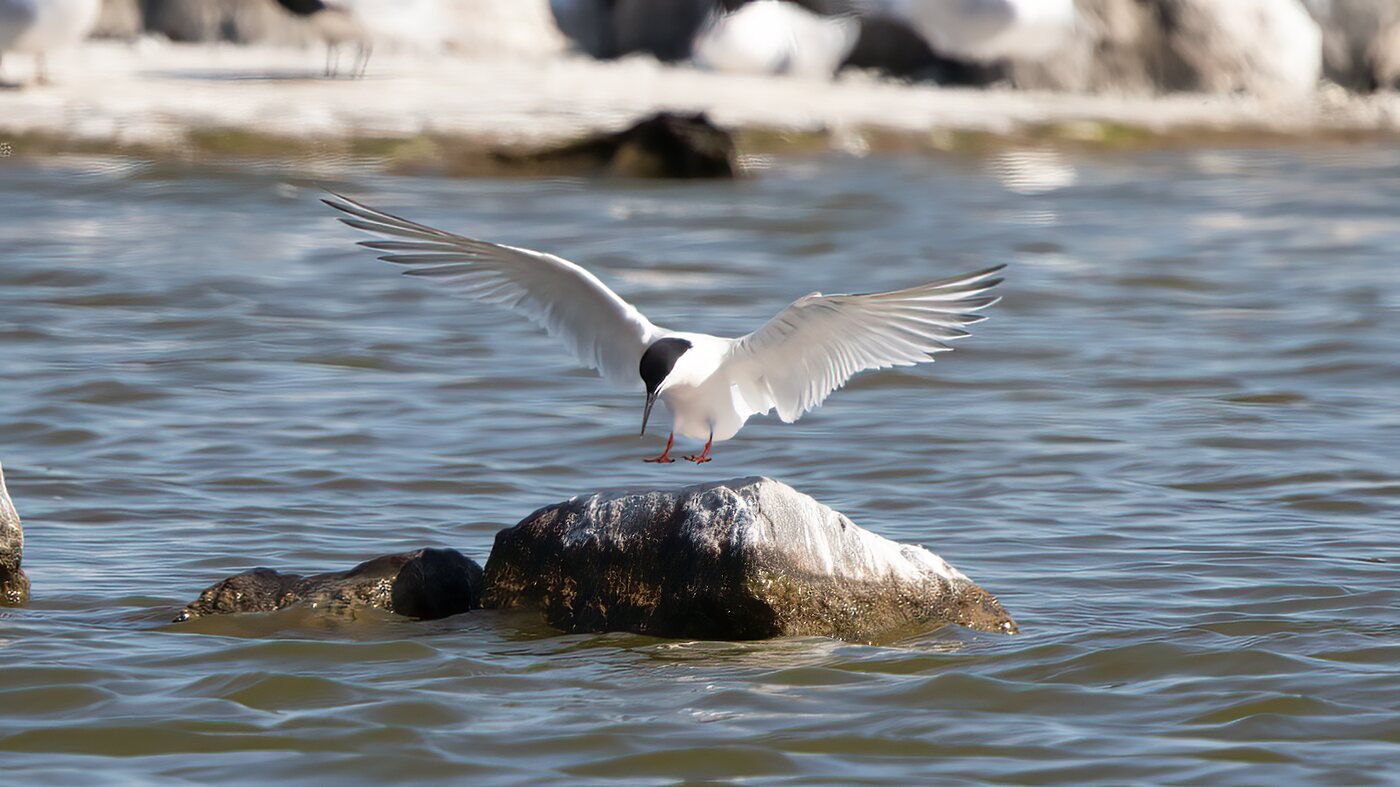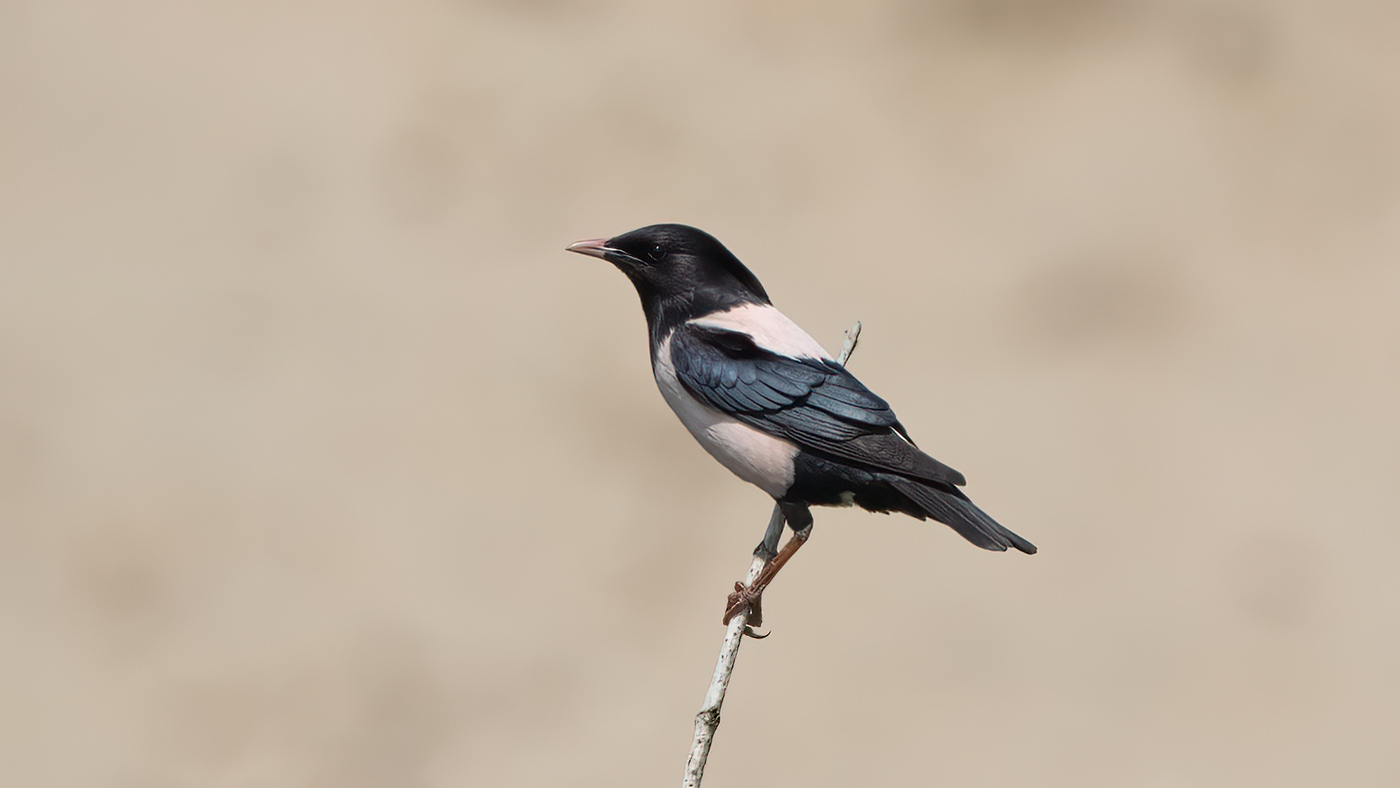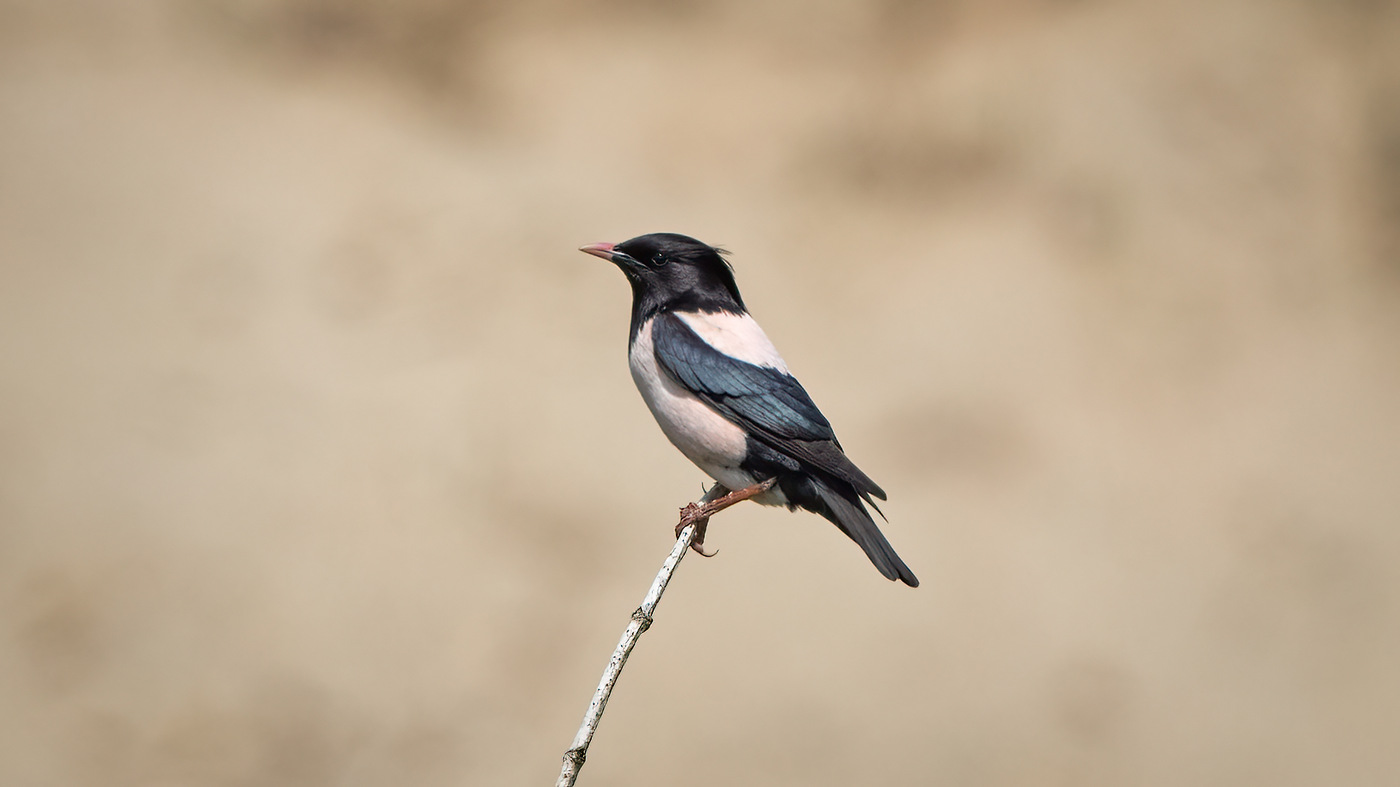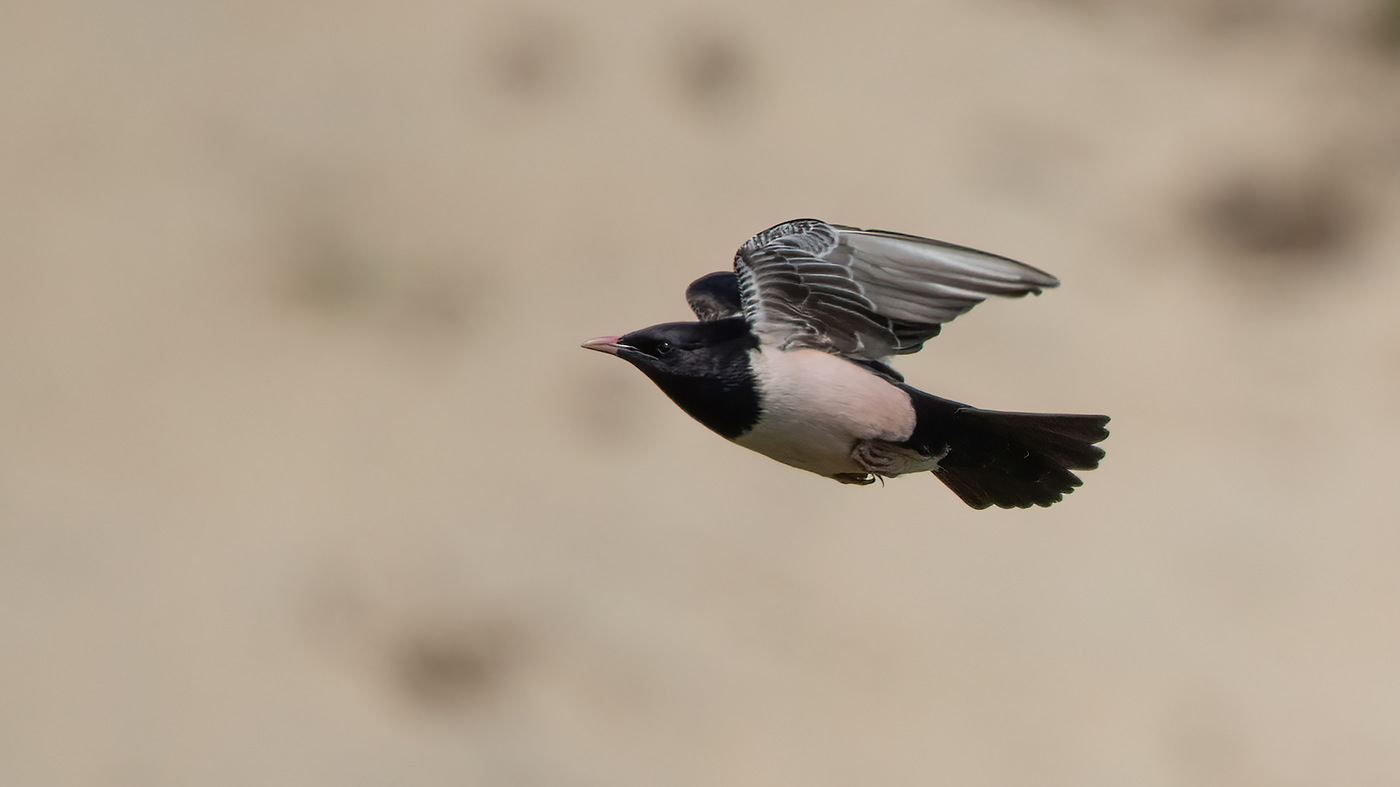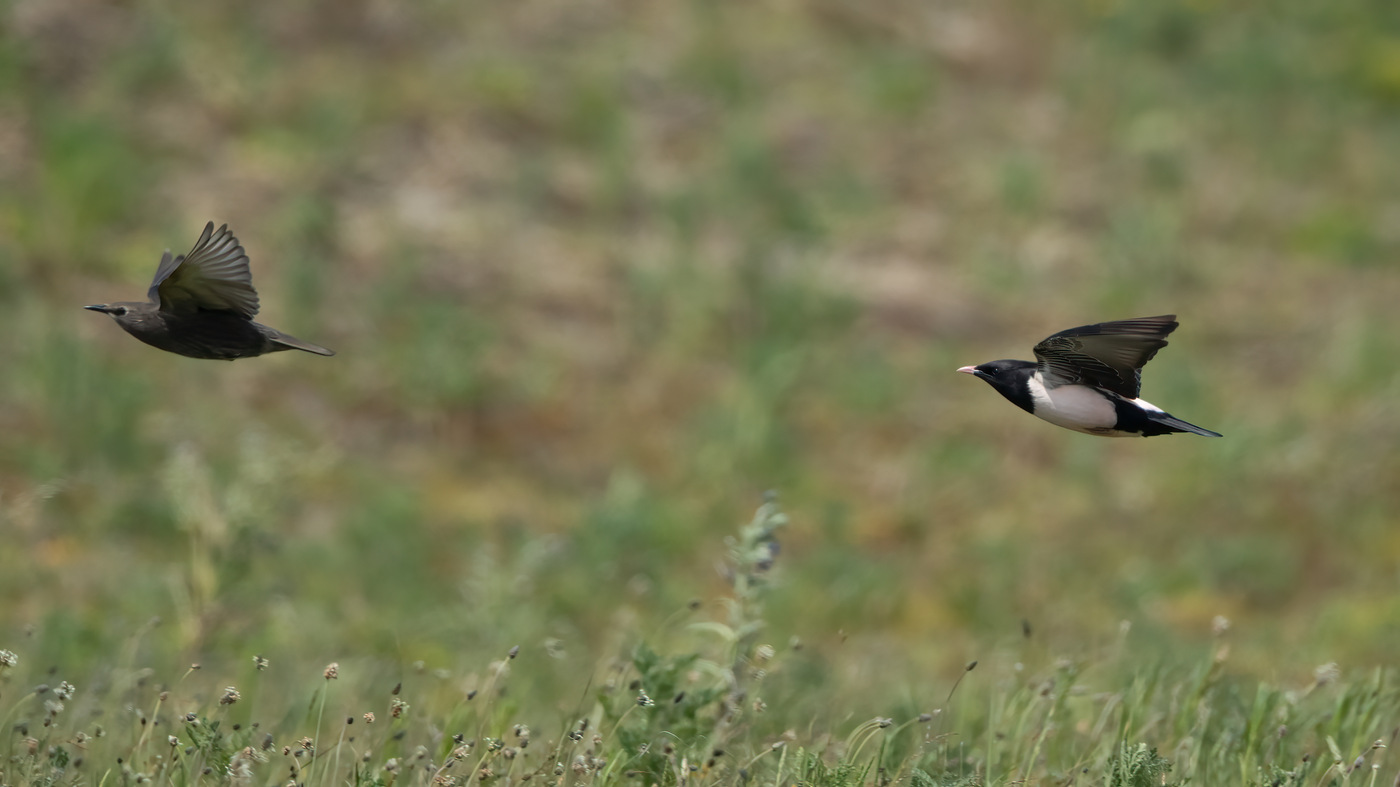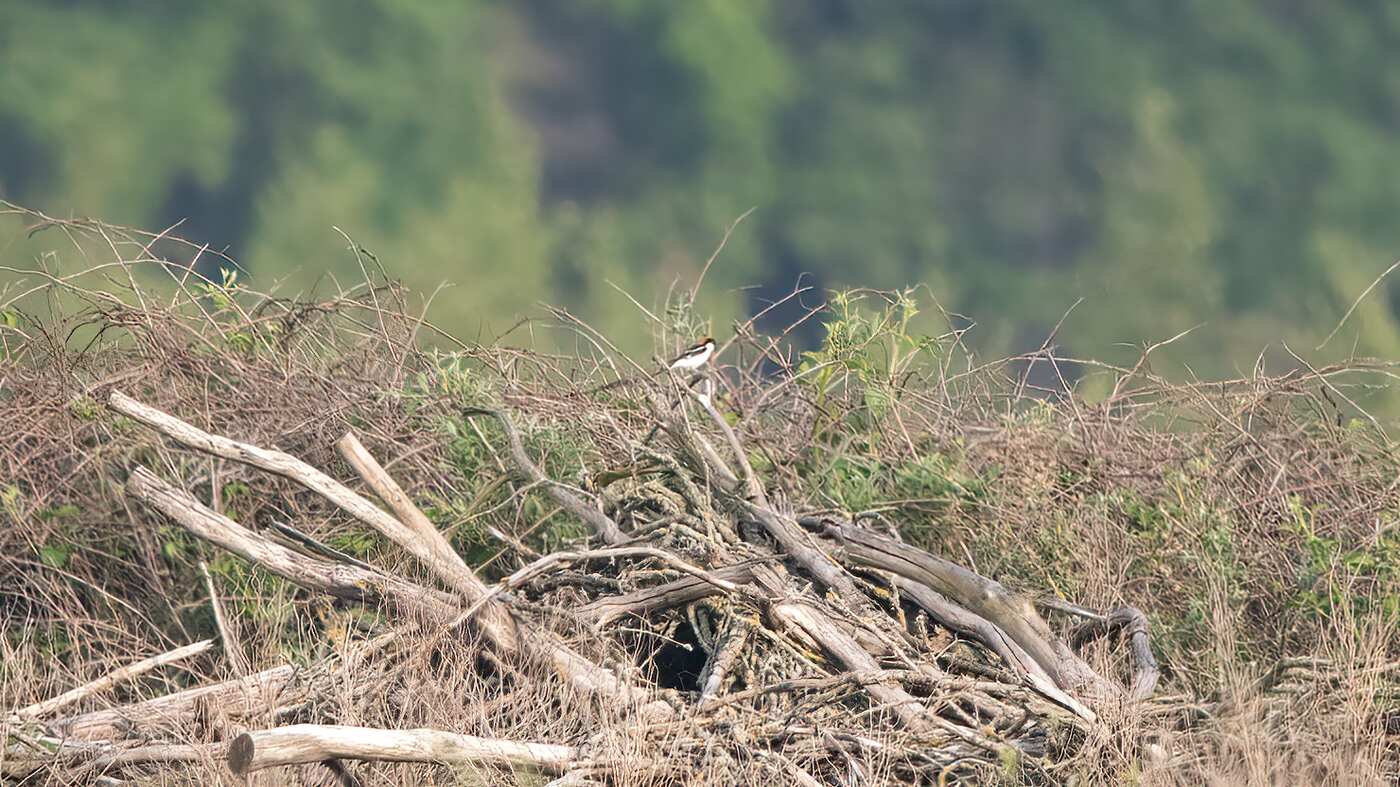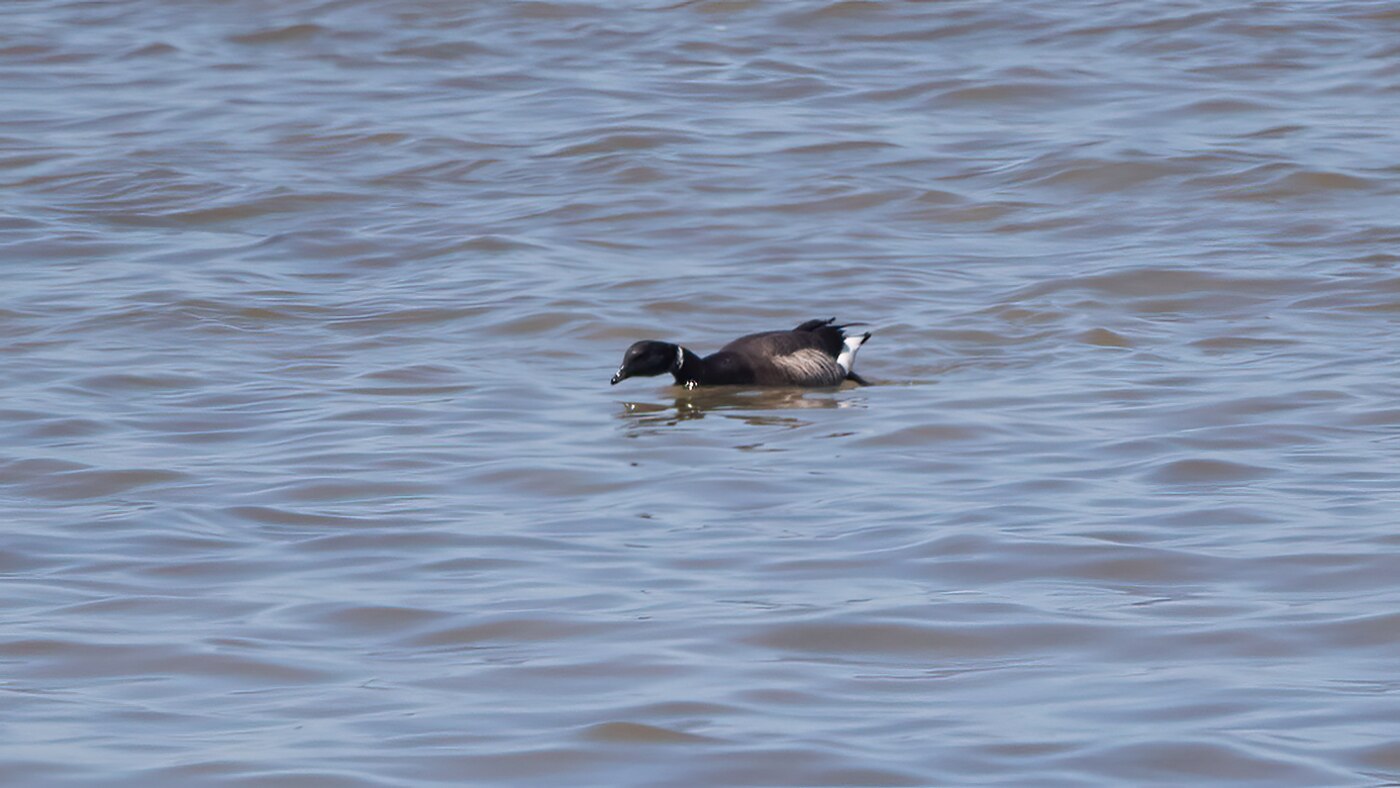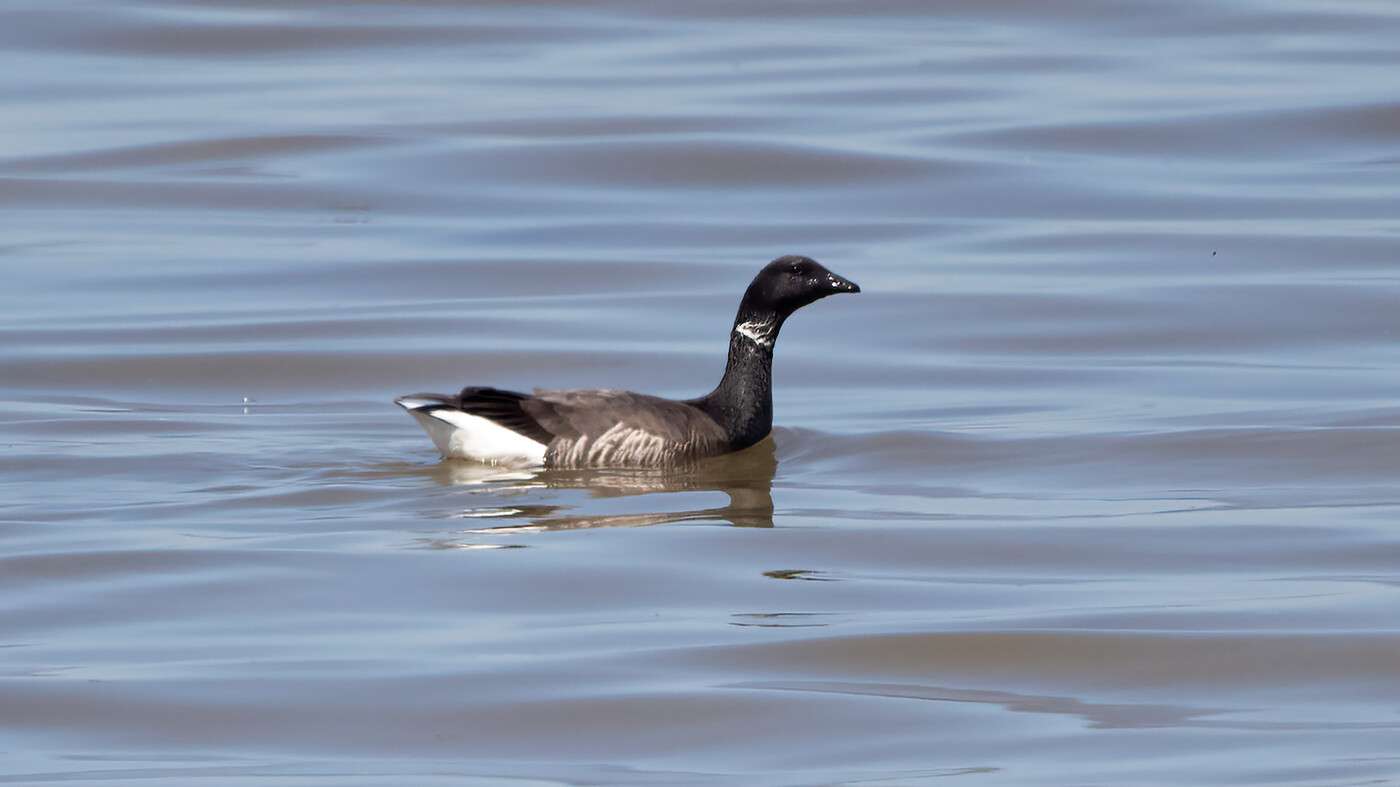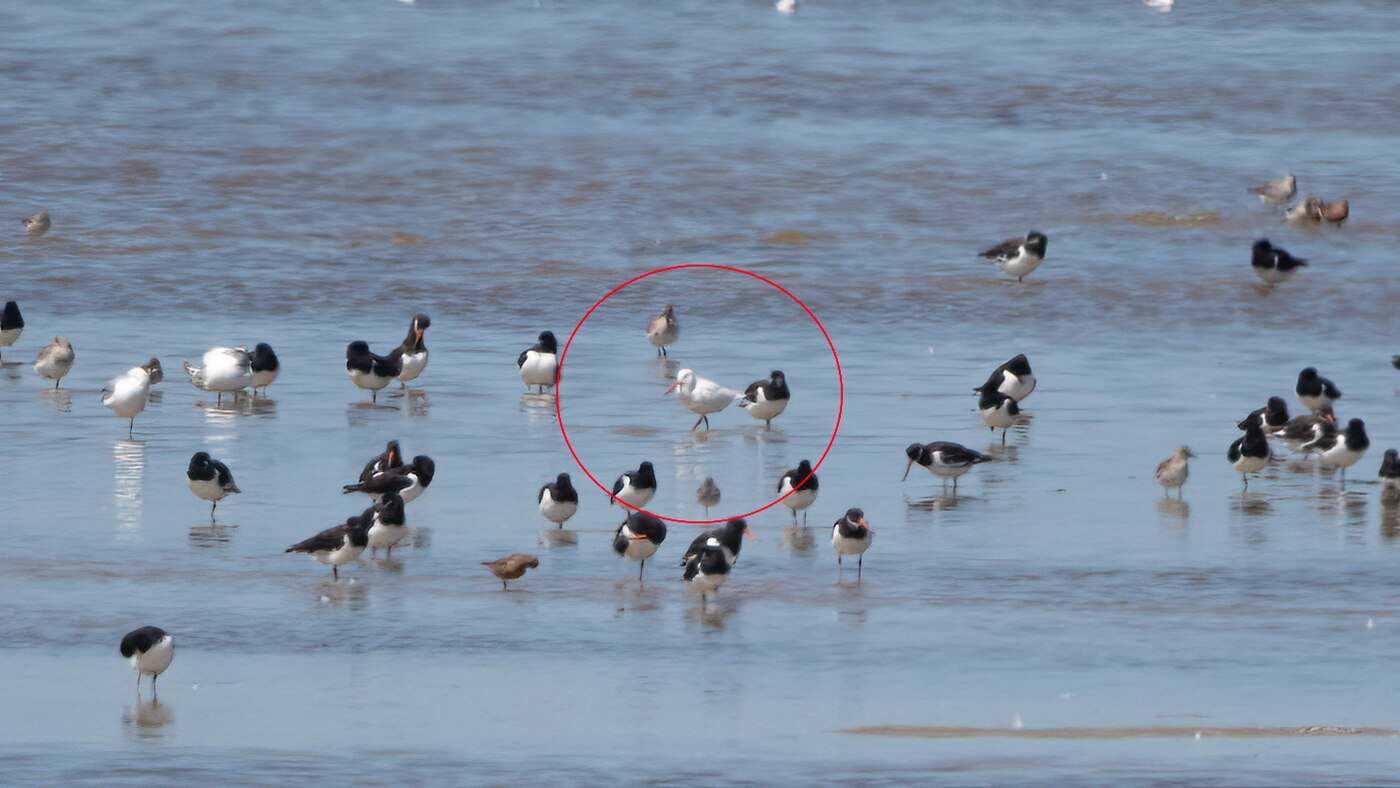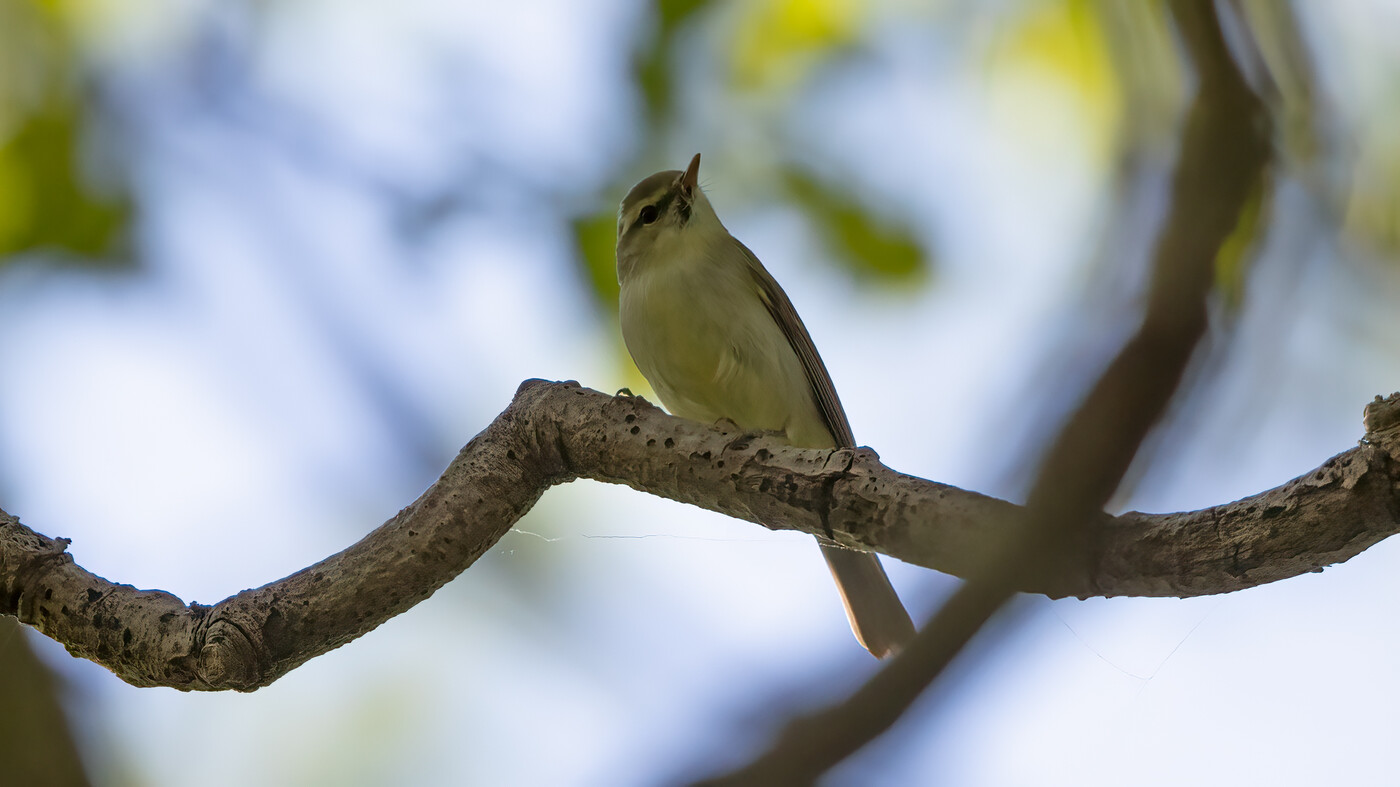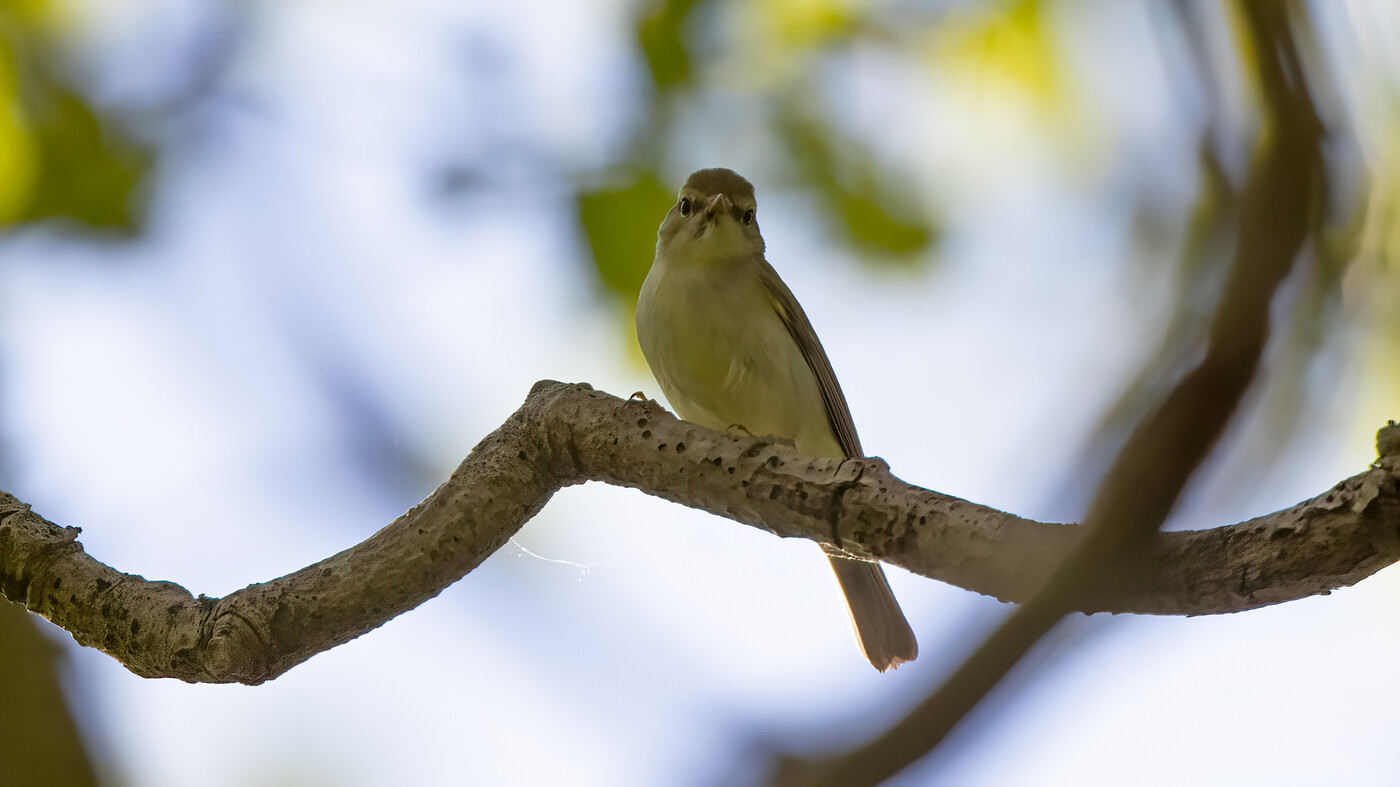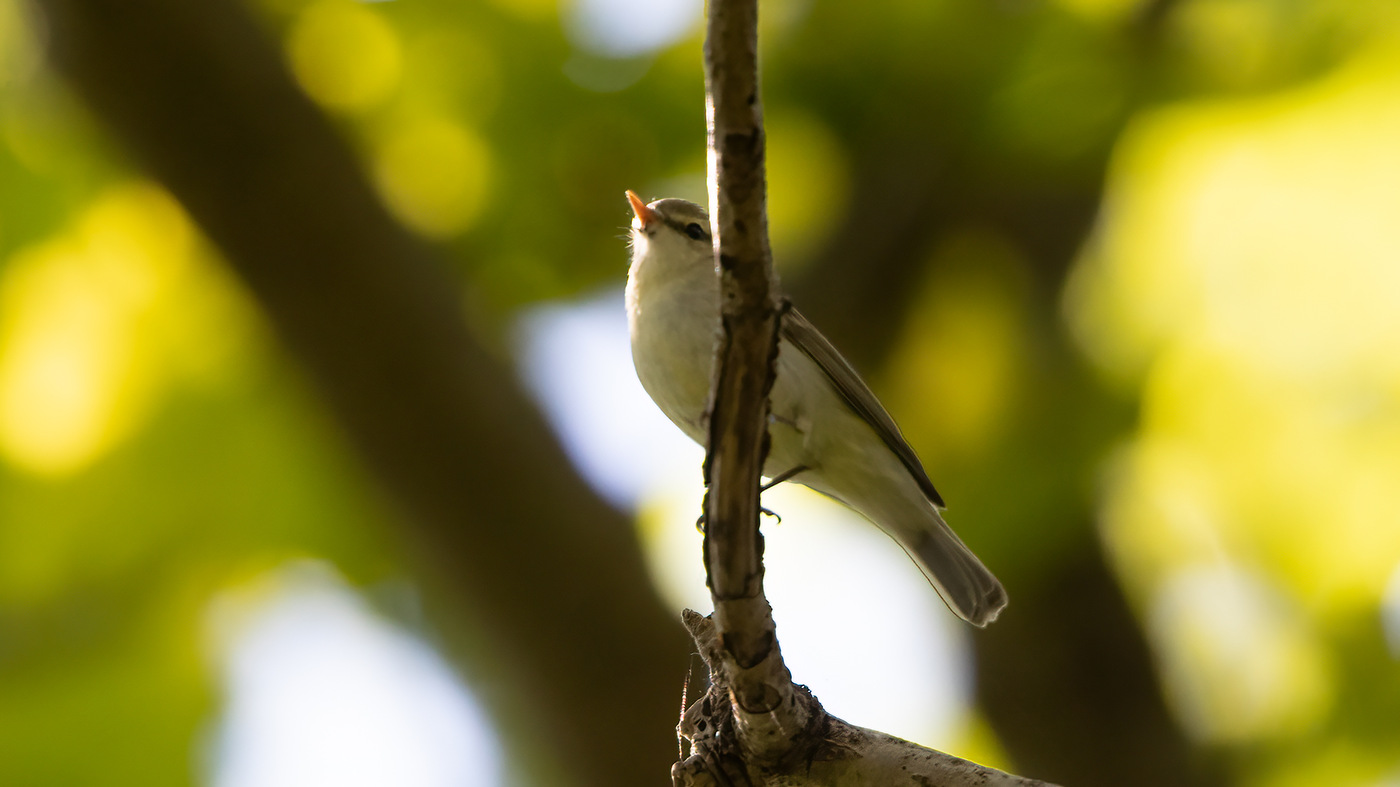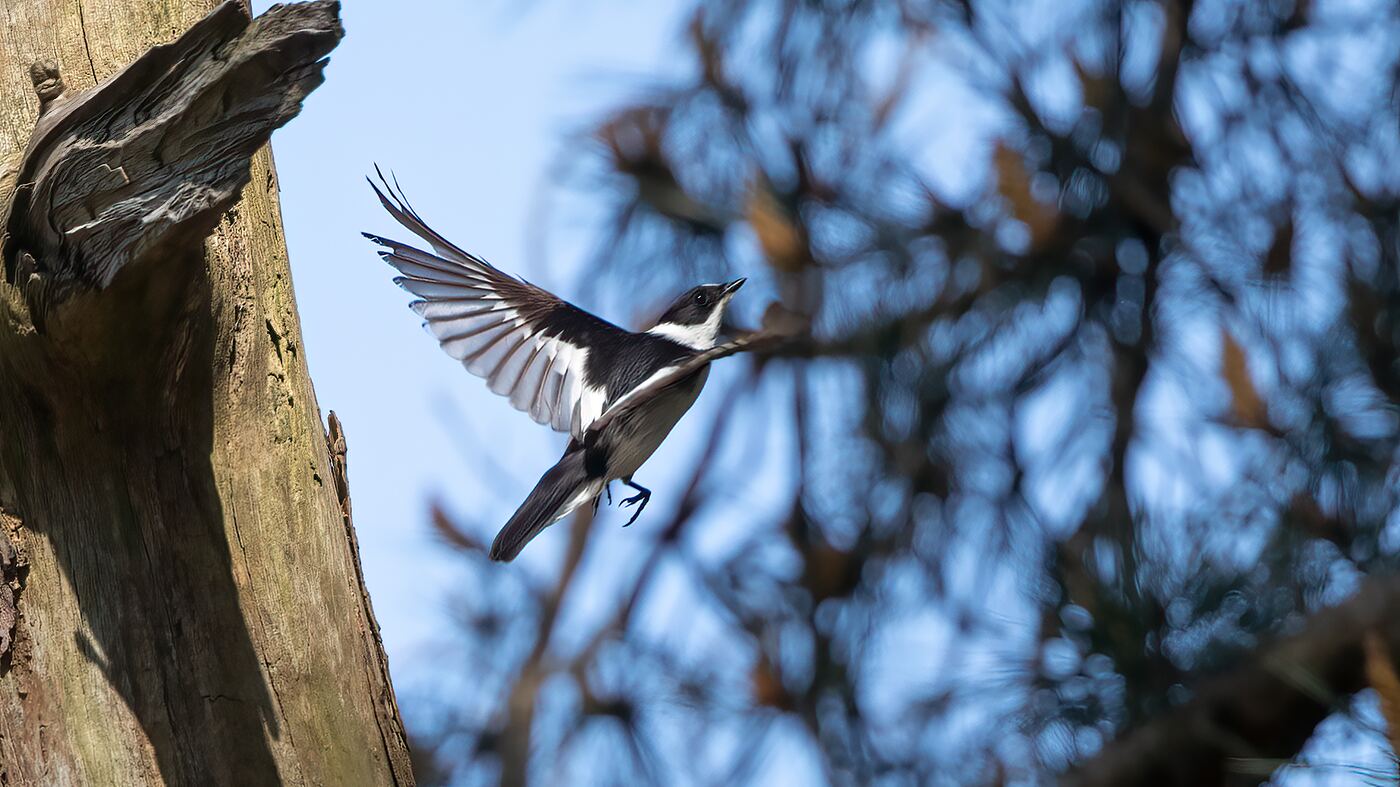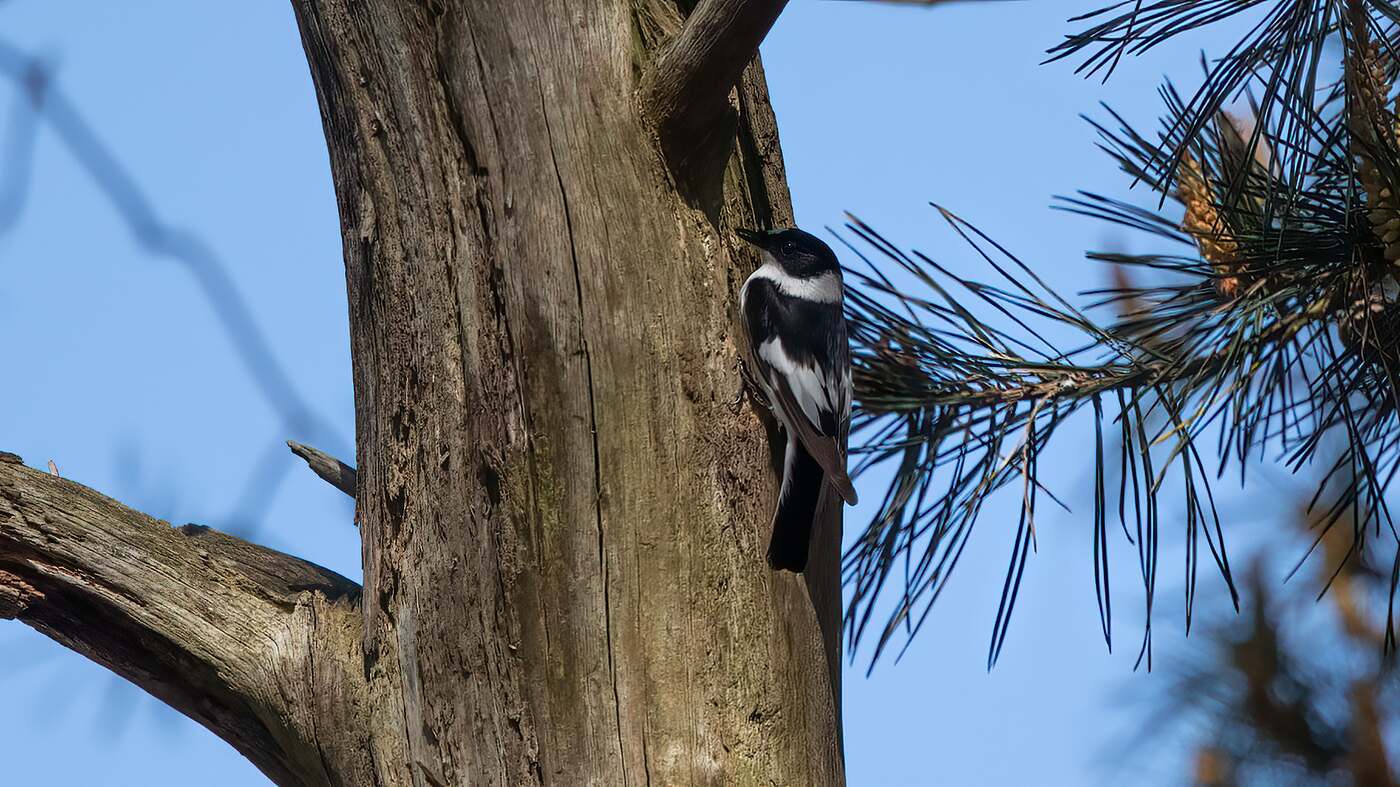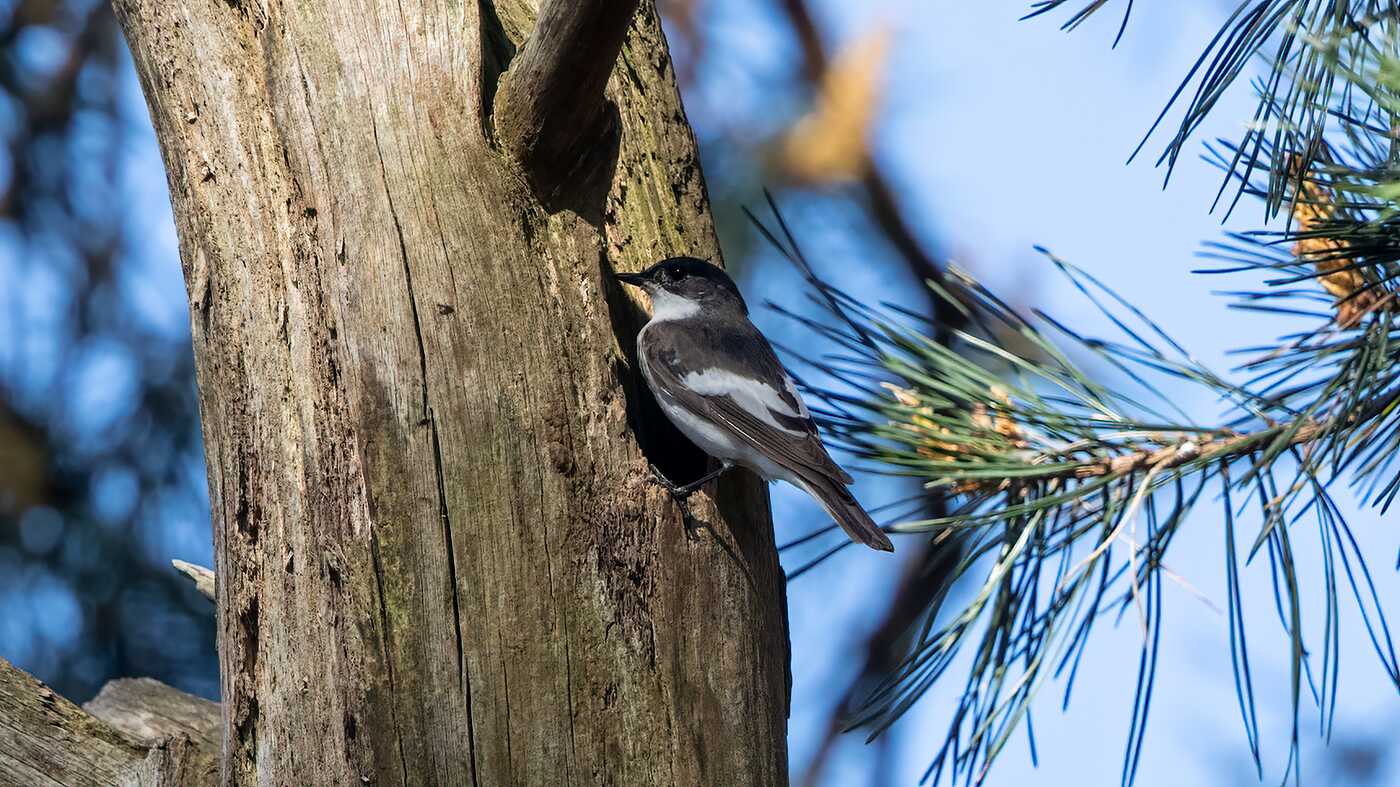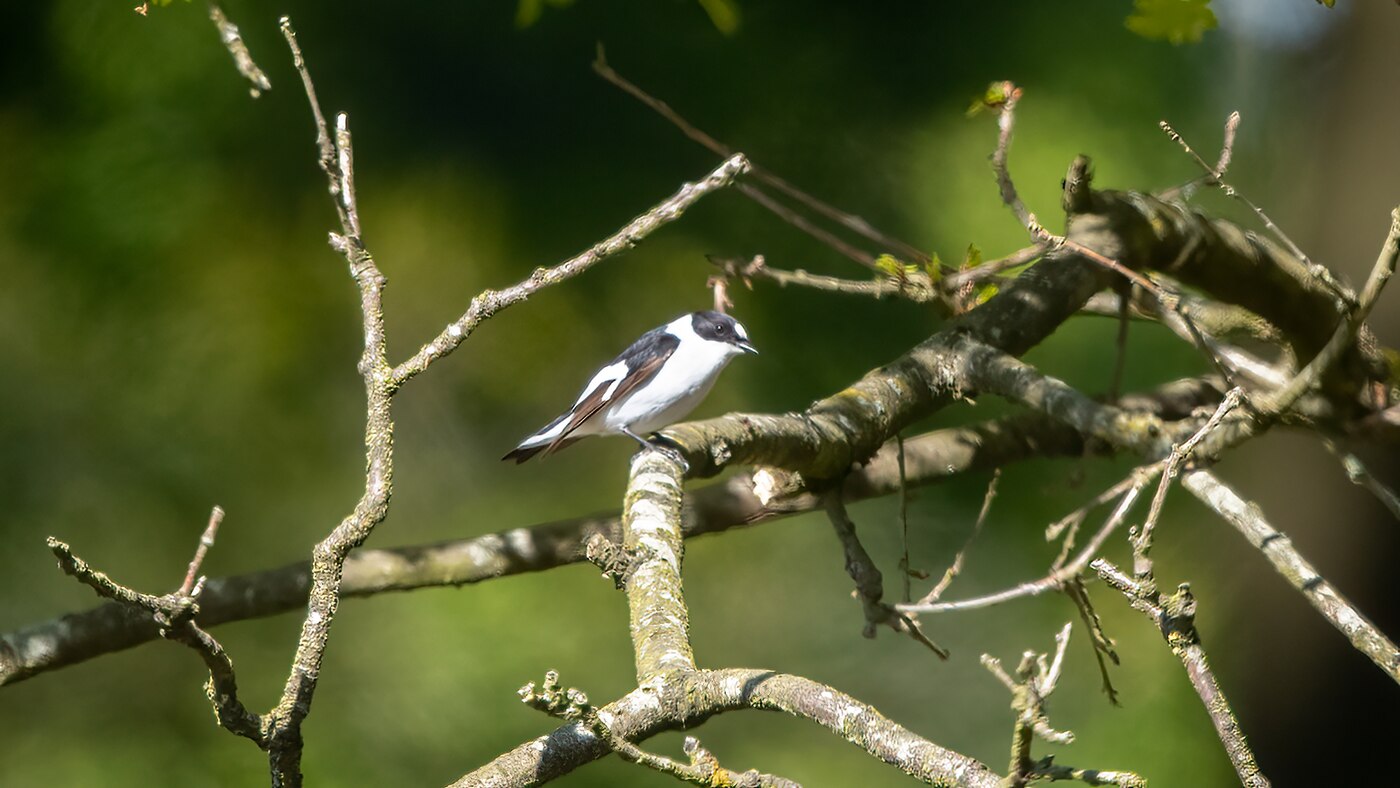02-10-2021 - Lesser Spotted Eagle in Brabant
Zaterdag was Saturday was Euro Birdwatch 2021. An event in which many migration sites in Europe participate. So we could not be missing from our migration site. The weather forecast was not the best but it would remain dry until late afternoon. The count started very quietly, but from 8 o'clock nice groups of Chaffinches and Meadow Pipits started to fly. There was plenty to count all morning and we even saw the first group of Common Buzzards this year.
At 12:32 pm the count was disrupted by a report of a suspected Lesser or Greater Spotted Eagle loitering near Werkendam. Then there was silence on the line and we anxiously waited for more information. Maartje was already packing the things and wanted to drive straight away, but I was less eager. We decided to wait for more information and a photo. It was also reported that the bird was no longer in view.
The photos eventually came and from the wing pattern we concluded that it must be the same bird as the Lesser Spotted Eagle that was photographed a few days earlier in the Oostvaarders Plassen. At the migration site we saw an exciting slim Harrier at 13:43 hours. While we were tracking the bird, the Lesser Spotted Eagle was found. The eagle seemed to hang steady locally near Dussen. Now the adrenaline shot up and our stuff was throw-photo-3n in the car. A nervous ride of about 45 km began. Maybe I should have listened a little better to Maartje and started driving right away ☺.
Along the way, new locations came through the Telegram group of Dutch Birding, which again proved its services. Via a zigzag of roads and the occasional road closure we came closer to the place where the Lesser Spotted Eagle was reported. Now it was also reported that the bird had perched on the ground. We could hardly believe it could we be so lucky?
Finally we arrived at the site and the eagle sat across a meadow in the grass and appeared to be looking for worms like Buzzards do. We drove to the other side of the meadow, but on arrival the eagle had flown away and was no longer visible. We decided to look for it and luckily I chose the right direction because not long after that the Lesser Spotted Eagle was found 1.5 km away from us. We quickly drove to the reported location (how well does the app work for these kinds of twitches) and the Lesser Spotted Eagle was right above my head. The camera started to rattle and many super cool records were shot. The Lesser Spotted Eagle still counts for our Dutch list and Brabant list.
The exciting Harrier from the migration site turned out to be a Hen Harrier after looking at the photos, but that couldn't ruin the day. For an overview of the count click here.
08-08-2021 - Waders at Westhoek
A White-rumped Sandpiper was reported at Westhoek. A good place to view waders up close in large numbers with rising water. Sometimes also nice species such as the White-rumped- and Broad-billed Sandpiper are often seen here. A few years ago a Western Sandpiper was even discovered that we also visited at the time.
The highest point of the tide was reached around 10:45 am so we wanted to be at the site by 9:15 am. We arrived on time and we joined a group of bird watchers already present. Unfortunately we were too late because the White-rumped had recently been seen pretty close. Luckily we saw him again not much later but this time not close and I didn't manage to get a picture of him. Then he disappeared and we never saw him again on the mudflats.
We did enjoy the many Dunlins and Curlew Sandpipers in all plumages. We stayed there for another 1.5 hours. When the White-rumped was rediscovered on a meadow, we left the mudflats. We saw the bird at some distance back on the meadow. The White-rumped still counts for the annual list, which now stands at 308 species.
01-07-2021 - Month list August
We started the month well with the Pygmy Cormorant still present. He is now sleeping steady in a puddle near Nieuwgein and it looks like he will stay here for a while.
The next target species is the Golden Eagle which is occasionally reported at the Hoge Veluwe. After he was seen for 2 days in a row-photo-2 near the "View point Oud Reemst" it was time to take a look. We were at the location at half past eight in the morning. Pieter Doorn arrived a little later and together we walked to a suitable place. A juvenile Marsh Harrier was the first to be seen. Around half past eight an eagle was seen just over the tree line. It quickly became clear that this was the Golden Eagle. We didn't expect it so soon. Arie Dorsman and Ton de Groot would not arrive until 9 o'clock, but turned out to be already in the parking lot. They were lucky because the Golden Eagle flew over their heads as they got out of the car.
01-07-2021 - Month list July
It's the first of the month and we're off again to add a few species. Until yesterday there were at least 3 species present that count for the July list; Corn Bunting, Stilt Sandpiper and Black-throated Loon. We decided to start with the Corn Bunting in Rouveen.
At 5.30 in the morning we drove to the location of the Corn Bunting. The weather didn't look too good. It was gray and it rained regularly. Not ideal conditions to hear a Corn Bunting sing. We arrived at the site around 7:00 am and almost immediately we heard the Corn Bunting singing at the top of his voice. That was a stroke of luck and even nice records and sound recordings could be made. The first month specie of July was in.
We now drove to the Stilt Sandpiper that was discovered last weekend in the nature reserve "Waterberging Twisk". We already have it in May, June and August so it fits nicely in between. The weather did not really improve and when crossing the Houtribdijk it was raining and windy. Fortunately, the Stilt Sandpiper had already been reported and that gave peace of mind. And indeed upon arrival we found the Stilt Sandpiper in exactly the same place as last weekend. Number 2 has arrived!
The Black-throated Loon had not been reported since June 28, but in the meantime we had received a message that this bird had also been found. The Black-throated Loon is located in the province of Zeeland near the Philipsdam. We started the journey of about 170 km. Just before 11.30am we arrived at the spot where he had been seen this morning and it didn't take long before we saw him too. The Black-throated Loon was far away and too far for a photo. With the telescope however it was nice to see. Satisfied with all target species, we drove back to Uden. The coming week we will try the Golden Eagle again, which of course also counts for the July list.
27-06-2021 - Stilt Sandpiper
The day started for us with a report via DBAlerts of a Stilt Sandpiper in Twisk near Medemblik. A good strain and I only have 3 specimen in the Netherlands and for Maartje it also counts for the June list. Plenty of reasons to drive to Twisk.
We arrived in the area around 11 am and after a short walk we saw the bird on a mudflat a short distance away. The Stilt Sandpiper was still in summer plumage and showed itself beautifully. Some nice photos were also taken. The Stilt Sandpiper is number 302 for the annual list.
25-06-2021 - Short-toed Snake Eagle
A Short-toed Snake Eagle has been on the Strabrechtse Heide for a few days now. The first this year in the Netherlands to be on site so we had to pay him a visit. Until now we had to make do with only passing specimens.
We agreed with Pieter Doorn to be in the area before 9 am. When we drove away from Uden, Pieter was already in the area but had not yet seen the Short-toed Snake Eagle. We arrived just before 9 am. The waiting could begin. Short-toed Snake Eagles usually don't become active until after 9 am. That is also the period when the Snakes warm up and they are then easy prey for the eagle. However, not much happened for the first hour and we decided to walk to the hut at the Beuven to have a look at the Black Storks that had been reported there.
We found 3 Black Storks and some nice pictures could be taken. We walked back to the spot where the Short-toed Snake Eagle was most seen yesterday. It took at least another hour for the Short-toed Snake Eagle to fly low to its favourite tree. Unfortunately too far for some decent pictures but we had it inside, that counts. The eagle was very bored by a Carrion Crow. He had apparently had enough and flew up and in our direction with the Crow on his heels. I expected it to come around but it kept flying straight at us until it flew over our heads a few meters away. I had never seen them this close before.
This of course resulted in nice records and we drove to Veghel with satisfaction for a Corncrake reported there. This one showed itself fairly quickly and this is a new region variety for me. Because of the Short-toed Snake Eagle, our annual list grows to 301 species. A Pygmy Cormorant that was done yesterday in Enschede was the 300th.
7-06-2021 - Roseate Tern
A Squacco Heron that was reported in the Biesbosch still counts for our Brabant list. The Roseate Tern that was reported yesterday at the Putten near Camperduin was also on the agenda. On the way from the Squacco Heron to the Roseate we were able to try a Blyth's Reed Warbler that was reported near Waddinxveen.
As mentioned, we started in the Biesbosch with the Squacco Heron that was found immediately upon arrival. A nice start, but unfortunately the bird was at a distance and there were no photo opportunities. With the Squacco Heron my Brabant list grows to 302 species. We now drove to Waddinxveen where this morning along the A12 a Blyth's Reed Warbler was found thanks to his singing. Near the site was a carpool place and from here we had to walk a few hundred meters via a bicycle path. At the spot we found Danny Laponder who had already heard the bird calling. The Blyth's Reed Warbler sat in a narrow ditch that was almost completely overgrown with reeds. With 50 meters behind us the A12 and in front of us a company building a strange place for a Blyth's Reed Warbler.
We also sometimes heard the bird calling and now and then a song stanza could be heard. The noise of the A12 did not help, of course. After having waited 45 minutes, the Blyth's Reed Warbler started to sing more regularly and even sound recordings could be made. Unfortunately, we didn't get to see the bird, but we were satisfied, and it still counts for our South-Holland list. We now drove on to the Putten near Camperduin where we arrived around 4.30 pm. No one else was there so we started searching where the Roseate Tern was last seen. It took about half an hour to find the Roseate in his favourite spot. It was nice to look at and the lighting conditions were ideal for several photos.
The Roseate Tern had regular fights with the present Sandwich Terns and often had to give up his resting place. This resulted in some nice action photos. We reported the bird via DBAlerts and Dave van der Spoel announced that he was almost there. We replied that we would wait for him. Not much later he drove up and he could immediately see the Roseate Tern through the telescope. We said goodbye to Dave and drove to the Groene Jonker where we wanted to try a Glossy Ibis.
Around 8 pm we arrived at the Groene Jonker. We took a walk, and with the telescope was searched for the Glossy Ibis, which unfortunately turned out to be untraceable. We searched for at least an hour and finally decided to drive back to Uden. The annual list has grown to 292 species.
03-06-2021 - Rosy Starling
On June 3rd we were lured to Katwijk by the report of a Ring Ouzel that still counts for our monthly list of June. There was also a Rosy Starling present which is always nice.
De Ring Ouzel was in the dunes area south of Katwijk and after a drive of an hour and a short walk we started our search together with Ton de Groot. The Rosy Starling soon showed itself, but our interest was mainly in the Ring Ouzel. We searched all the places where the bird had been reported, but there was no sign of the Ring Ouzel. We decided to wait until it got later, maybe then he would show himself.
The Rosy Starling was occasionally seen between the groups of mainly young Common Starlings. Mostly far away and I didn't bother to take a picture. I sat down on a dune where I had a good overview of the field where the Ring Ouzel had been seen that morning. Maartje continued to search in the dunes. Suddenly the Rosy Starling sat in a bush right in front of me. With nice light in the back, of course plates had to be made. The Ring Ouzel was not found anymore, and we decided to drive to our own migration site, the Brobbelbies Noord, where a Woodchat Shrike had been reported. The Woodchat Shrike is for me a new species for the Maashorst. One that we had expected long ago. We arrived at the migration site around 7 pm and luckily the Woodchat Shrike was still there.
01-06-2021 - Black Brent
It is already the first of June and as always at the beginning of a new month, we first do the new month types if there are. A Black Brent was in any case still in Den Oever on 31 May. So that became our first target species on June 1.
It was high tide in Den Oever around 1 pm and the Black Brent was best seen at high tide. So, we did not have to get up early and around 11 o'clock we drove north. When we almost arrived at Den Oever we received a message from Pieter Doorn and Henk Schut that they had not yet found the bird in the usual place. We therefore first drove to nearby Vatrop where he was also seen. There were no geese at Vatrop at all and we were happy to receive a new message that Pieter and Henk had a possible candidate in sight.
We joined them and 7 Brent Geese swam including a possible candidate. As he got closer it became clear that this was indeed the Black Brent, his back probably seemed lighter because of the bright sunlight. As far as I know, this is the first documented Black Brent in the Netherlands in June. There was also an albino Oystercatcher on the mudflats, I made some distant pictures of this bird. Then came the message of a Greenish Warbler in the dunes of Wassenaar, a nice one for the year list.
It took about an hour to drive to Wassenaar and after a short walk we were at the spot where the Greenish Warbler had recently been heard. It took a very long time before we heard anything that sounded like it. The noise came from far away and we decided to walk to the other side of the forest plot. After a fifteen-minute wait, the Greenish Warbler started to sing continuously, and a few nice pictures could even be taken. De Greenish Warbler is number 288 for the year list.
30-05-2021 - Collared Flycatcher
Around 2 p.m. the report came in of a Collared Flycatcher The bird was located near Gasteren in Drenthe and was nicely to observe. We had no other plans, and a Collared Flycatcher is not an everyday bird.
We packed our things and started the ride of almost 200km. Fortunately, the bird was steady on the spot and upon arrival we were not the only ones who must have thought the same. The Collared Flycatcher was heard almost immediately thanks to its call and occasionally the song could be heard. It flew back and forth continuously but kept returning to a dead tree with a hole in it which clearly had the bird's interest. A male European Pied Flycatcher also showed interest in this hole. It seemed strongly that there was competition between the two birds. The Collared Flycatcher brings our annual list to 286 species for 2021.
The next day the Collared Flycatcher was no longer on site. The European Pied Flycatcher has probably won the battle and the Collared must to try his luck in a new place.

